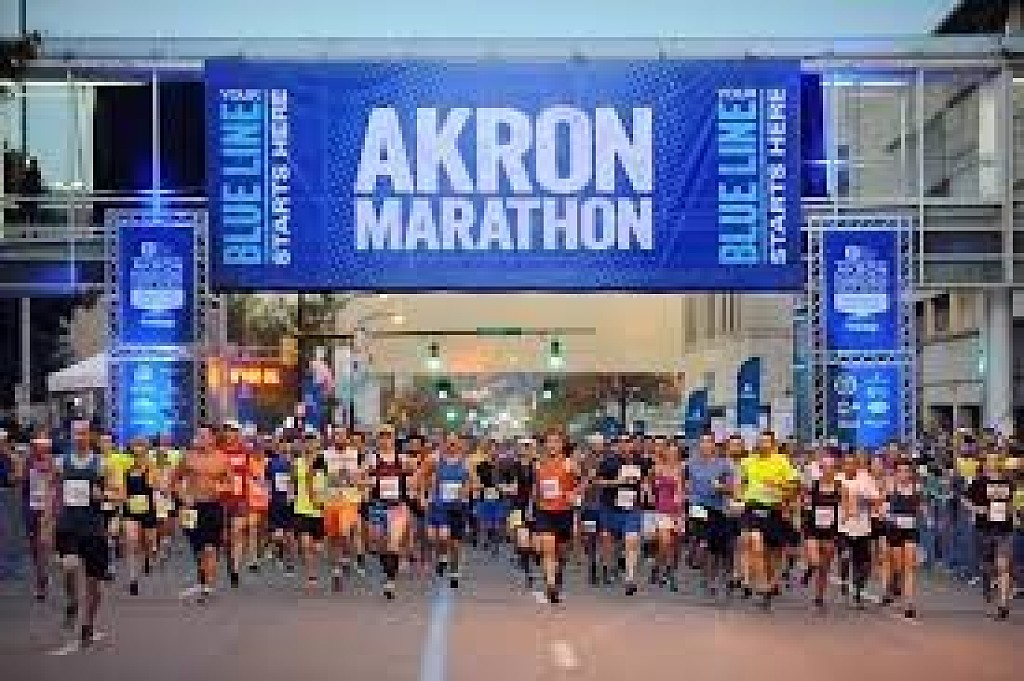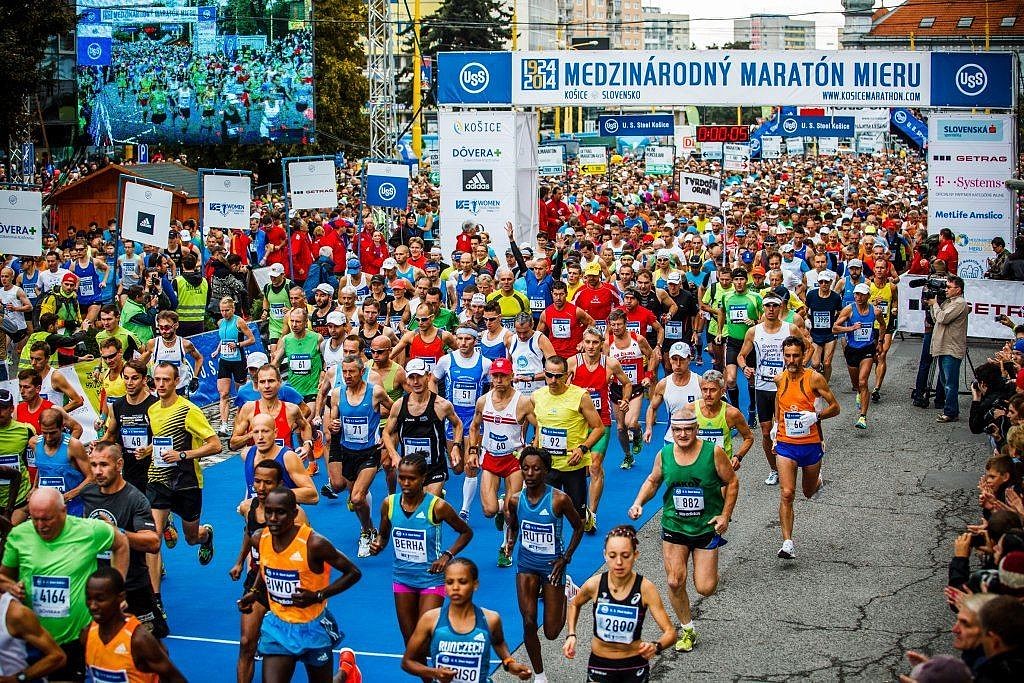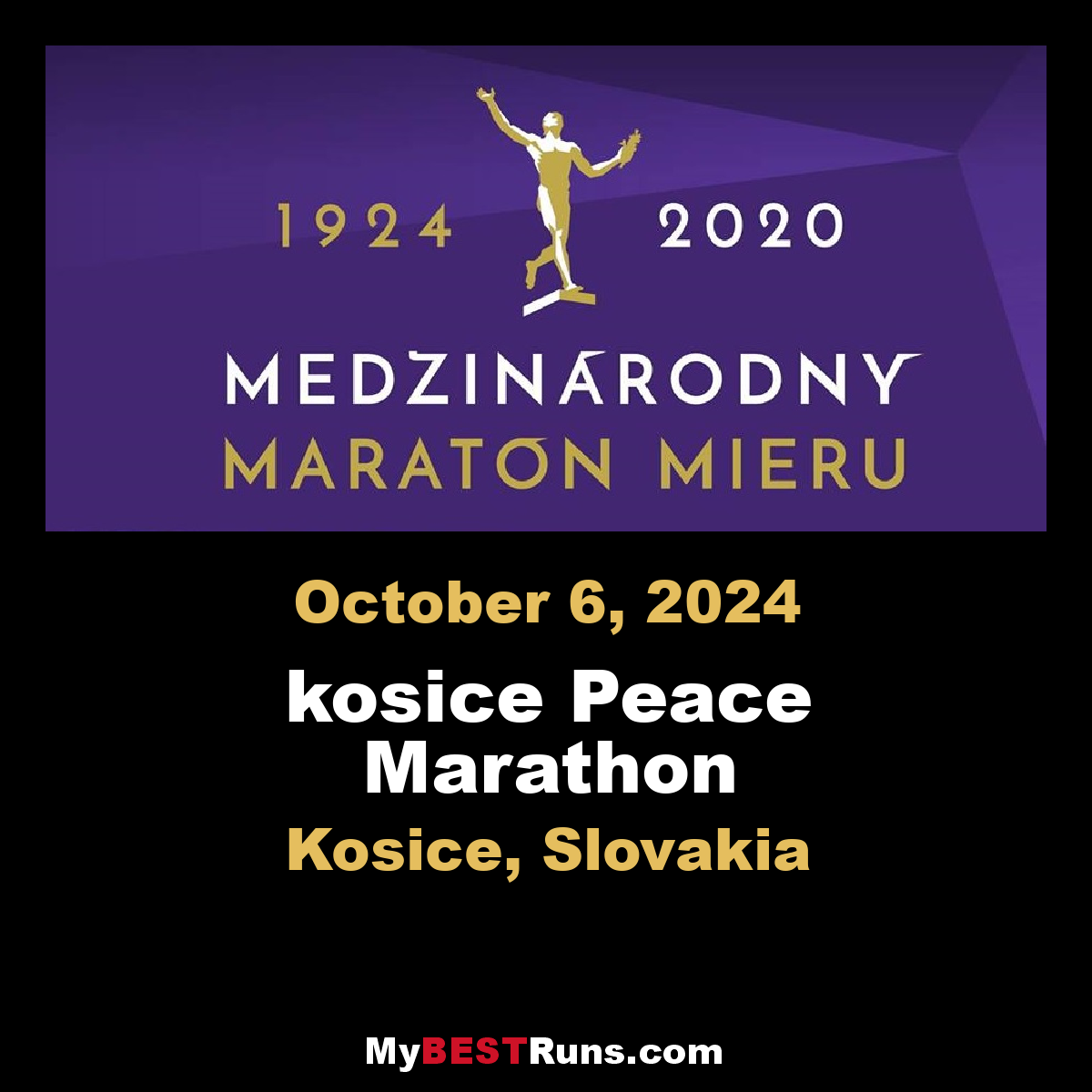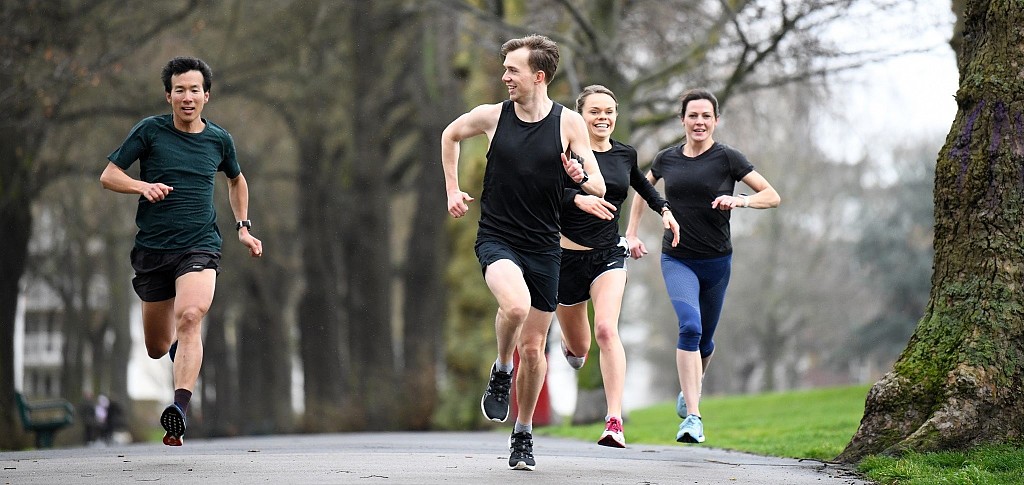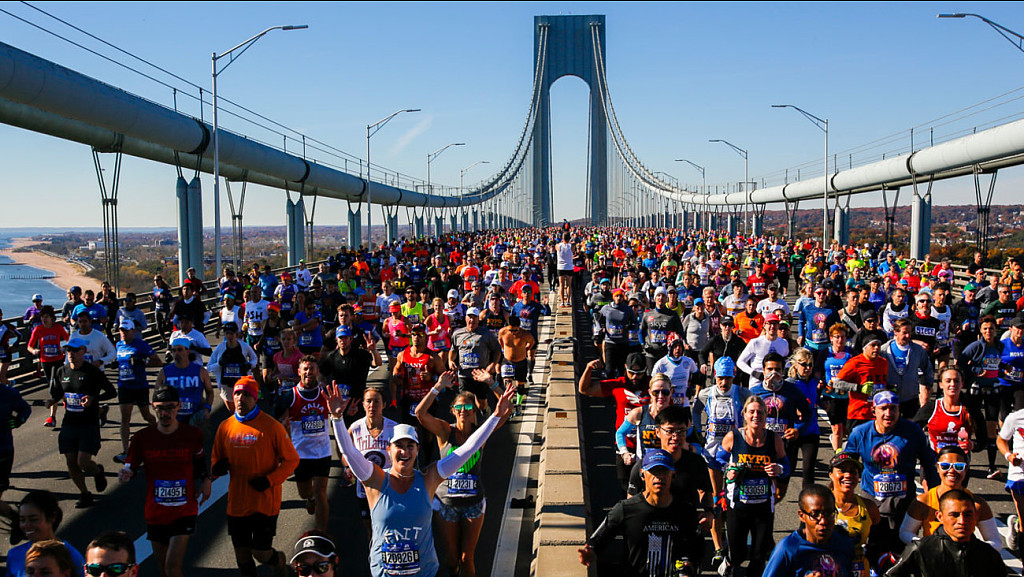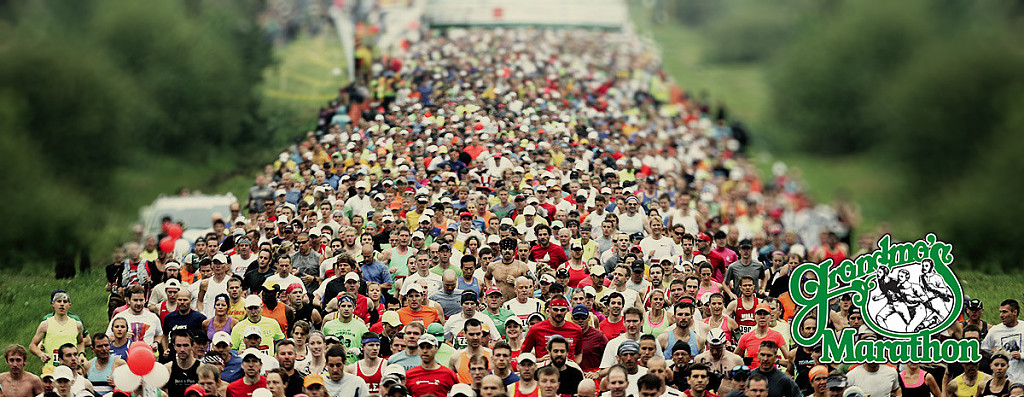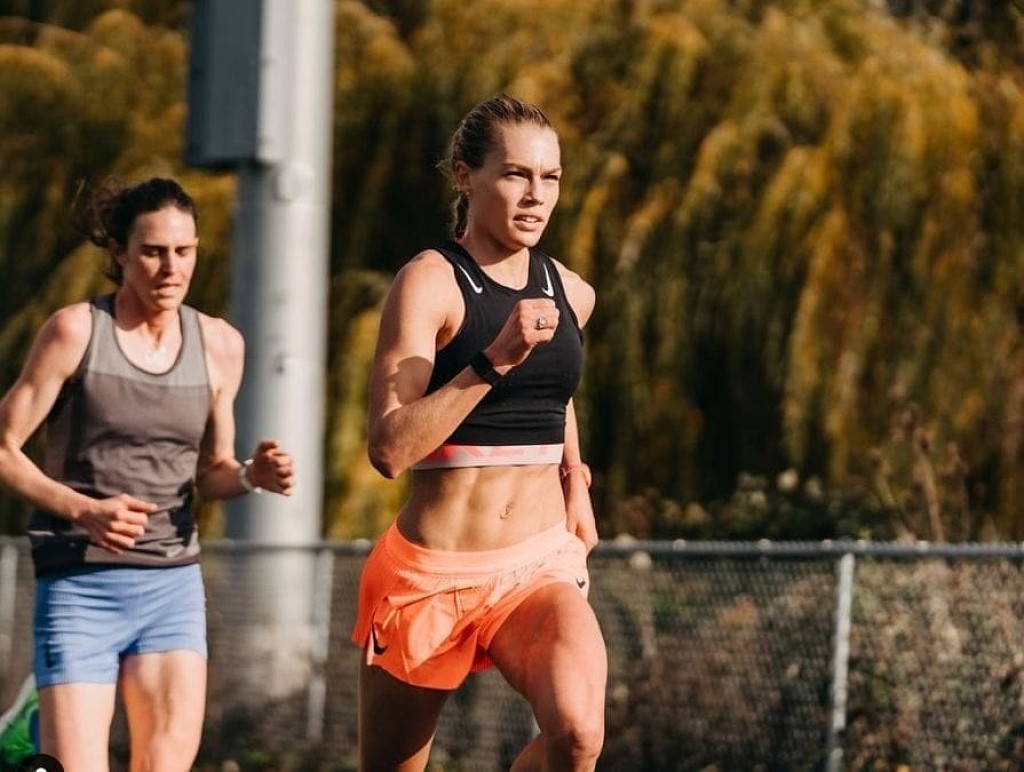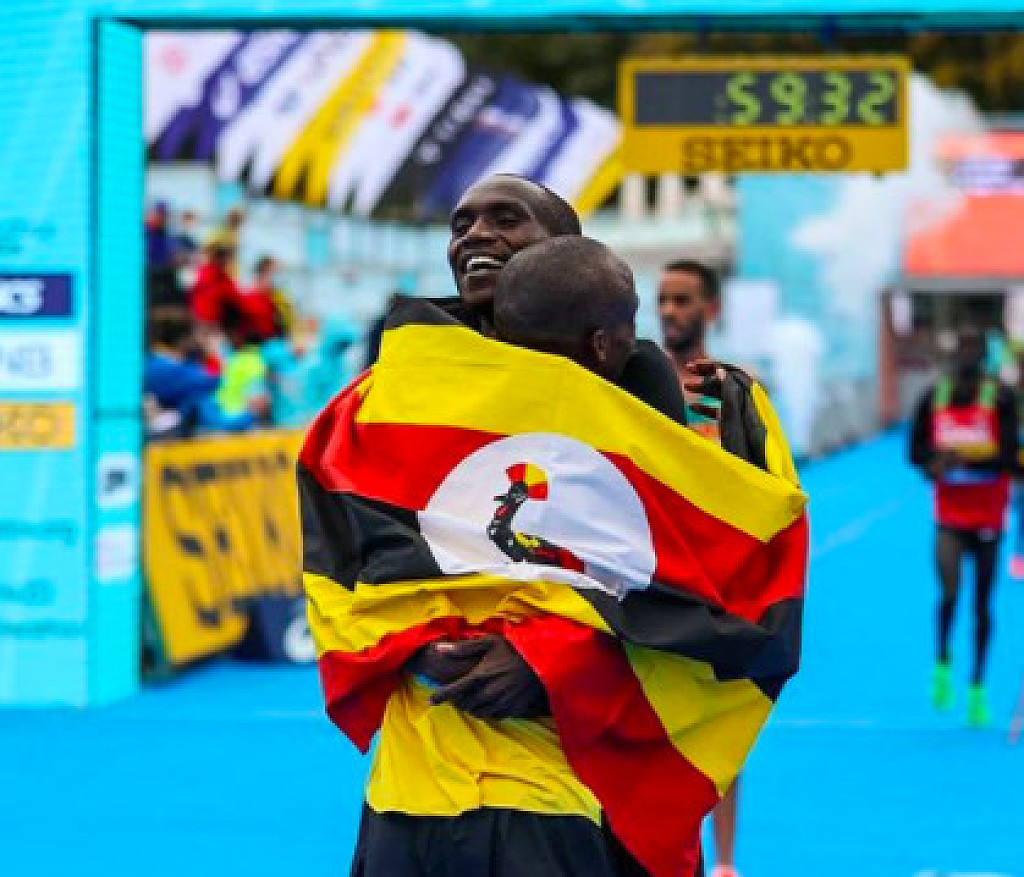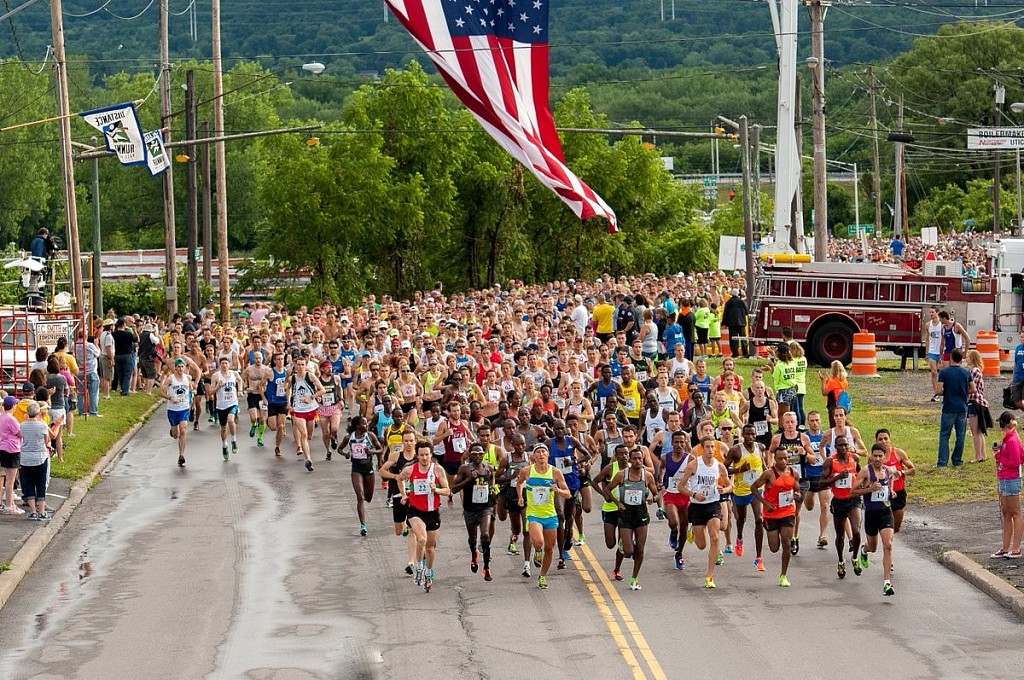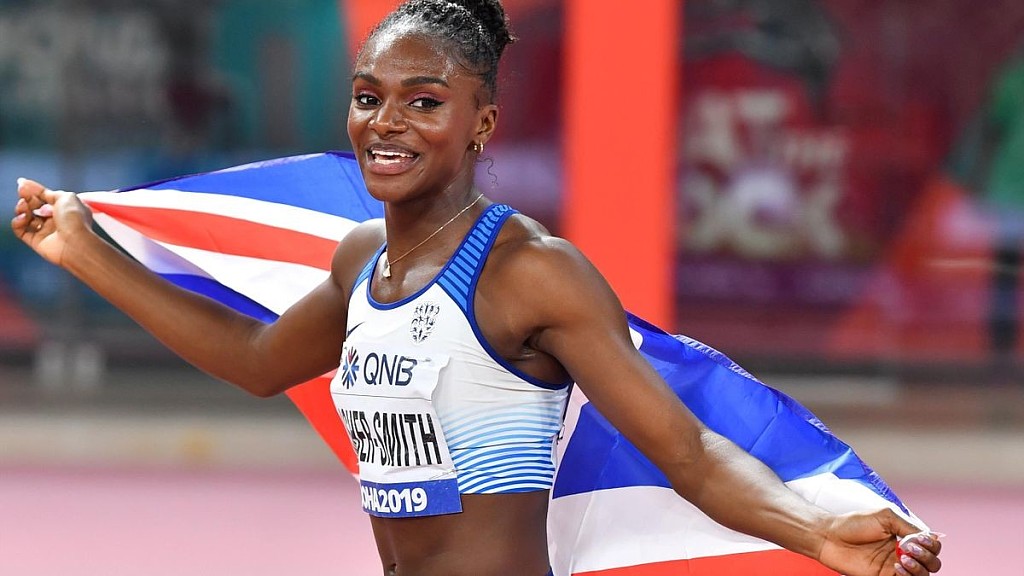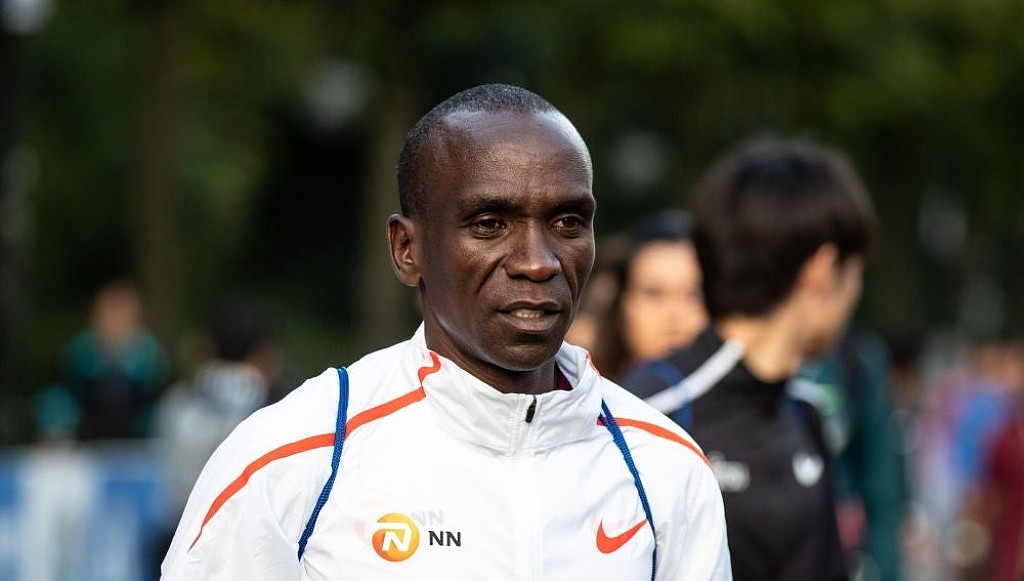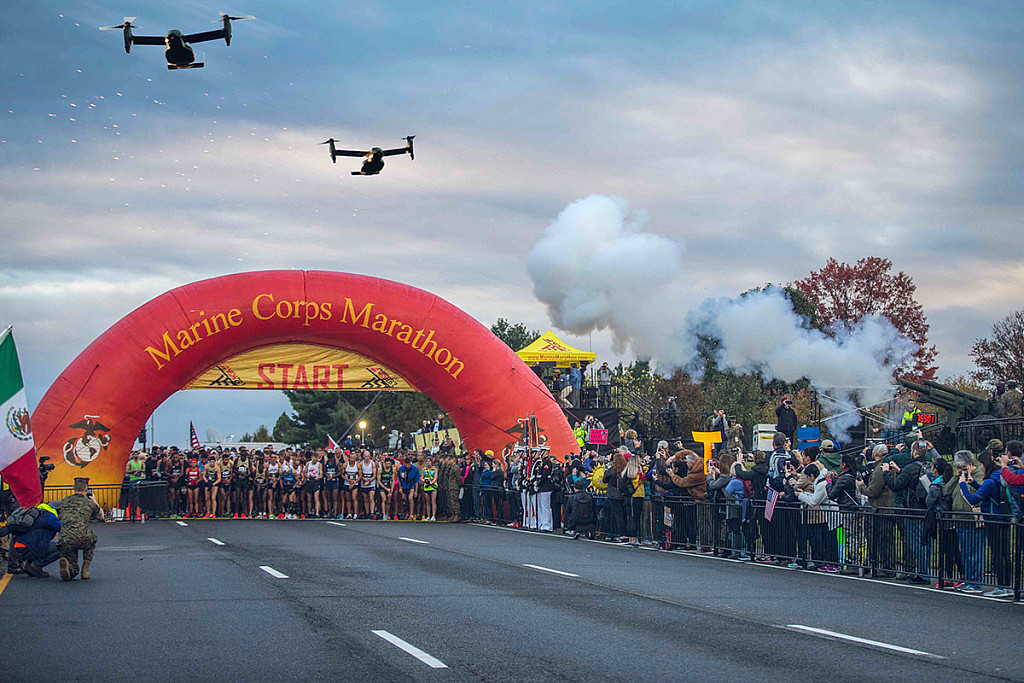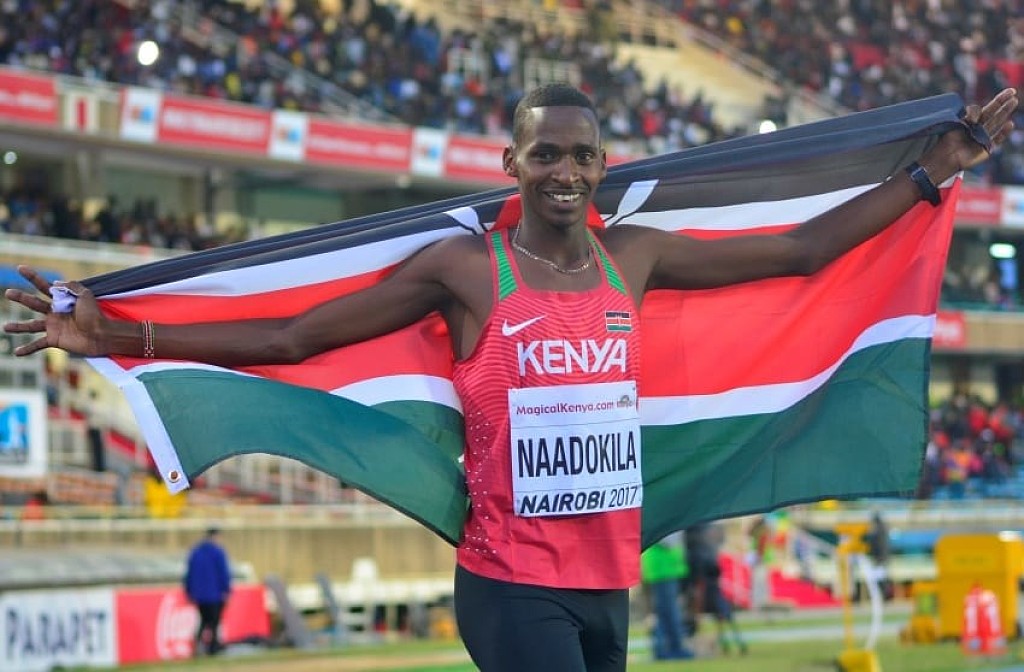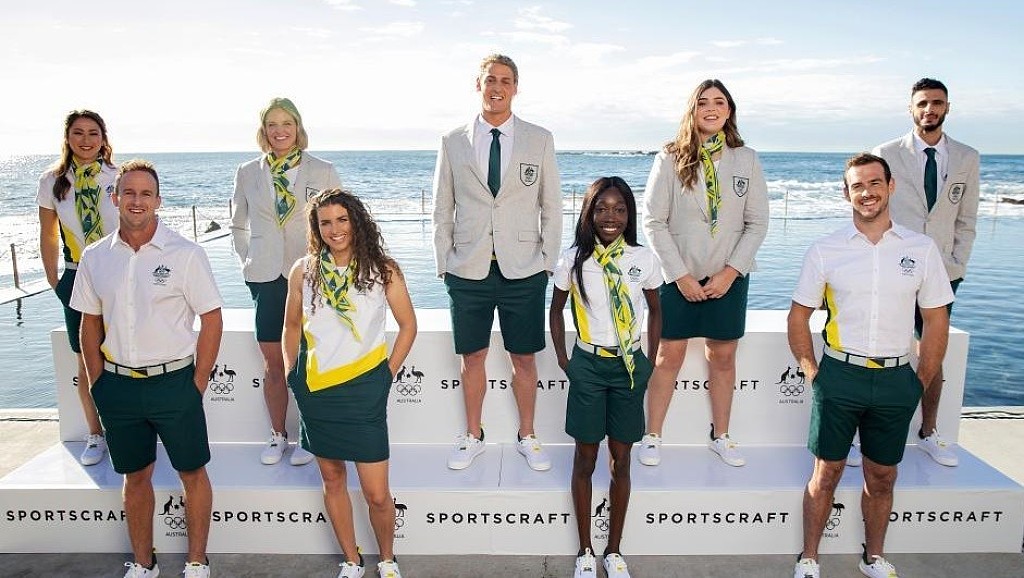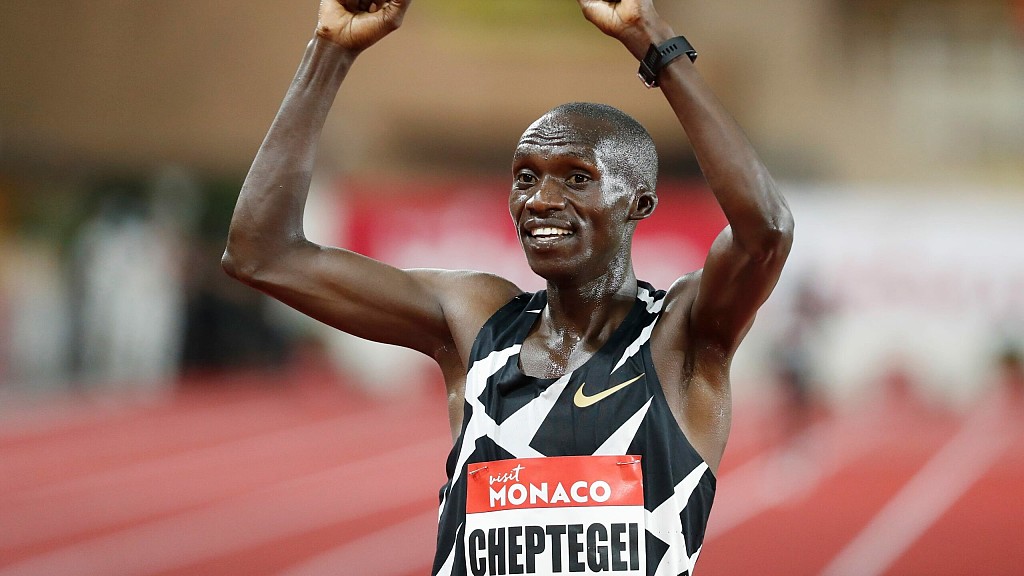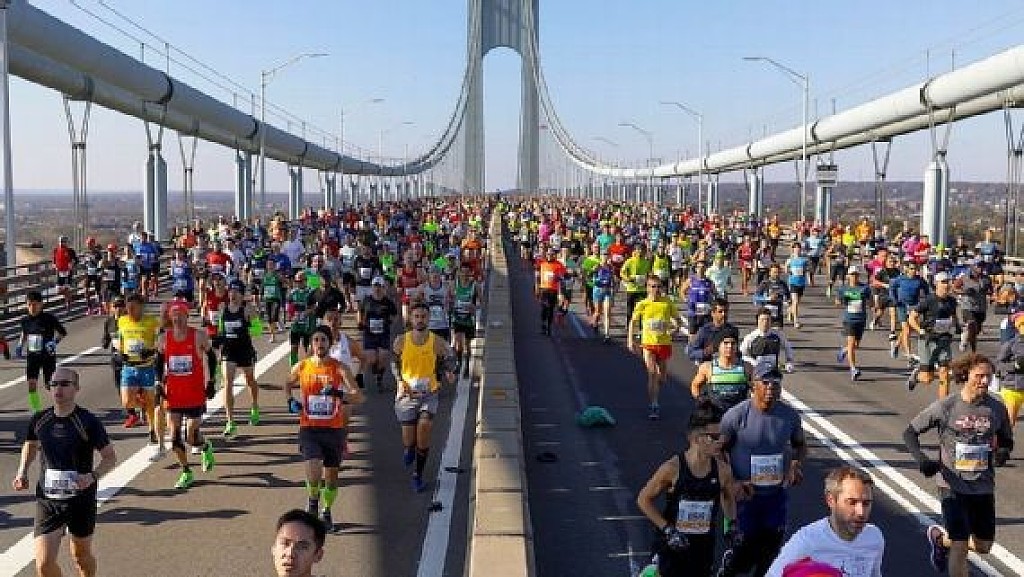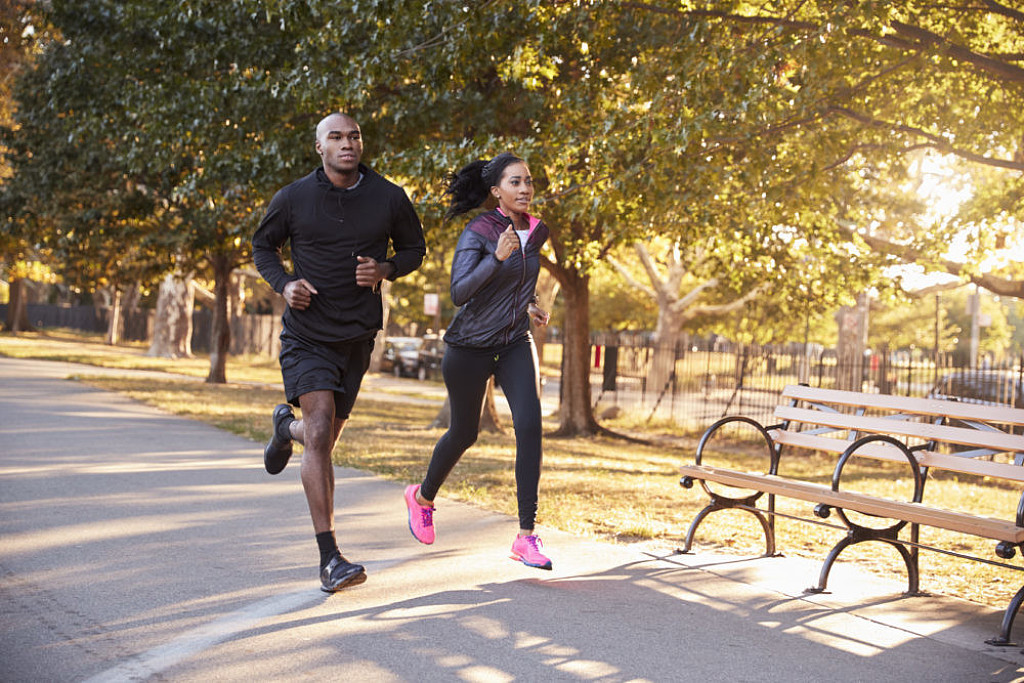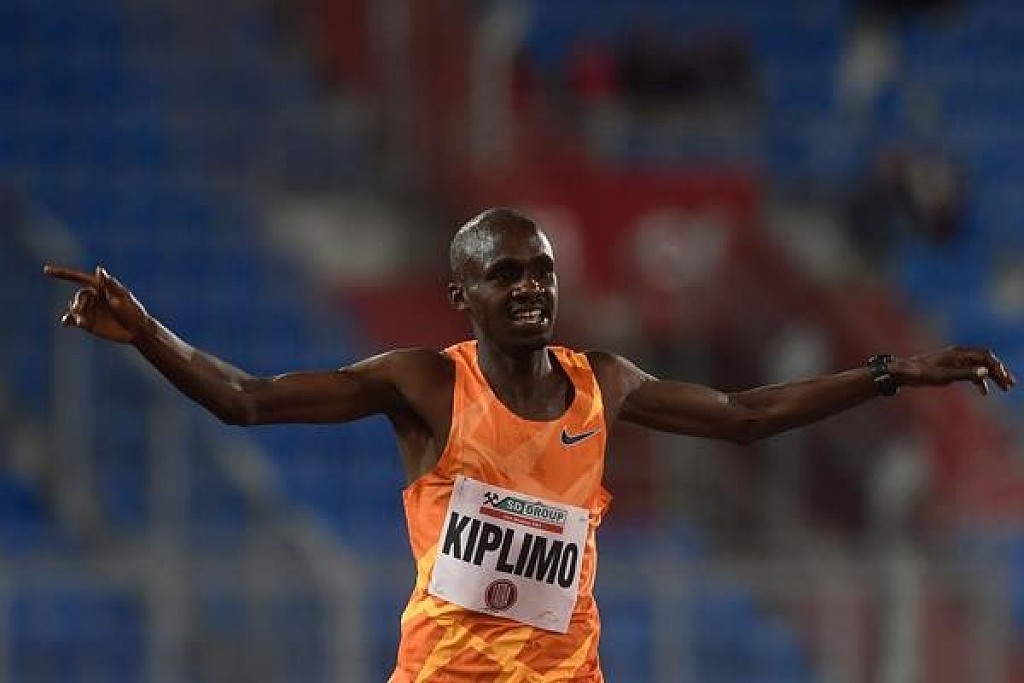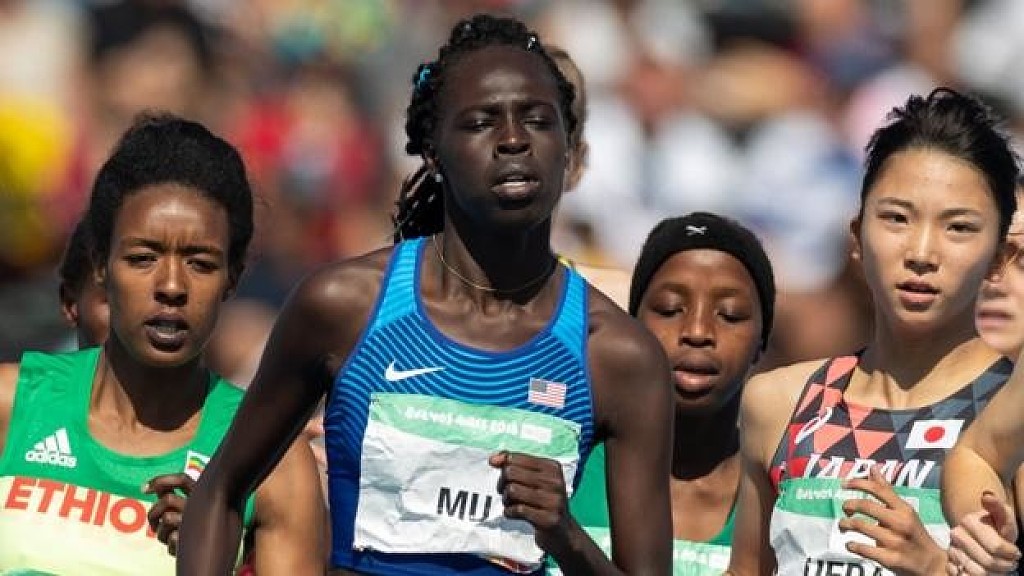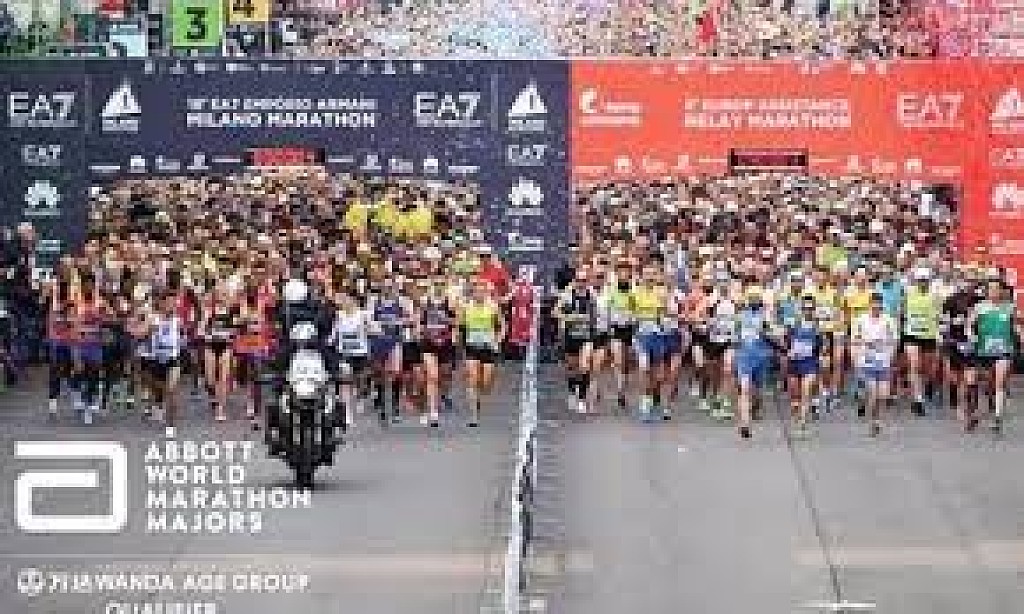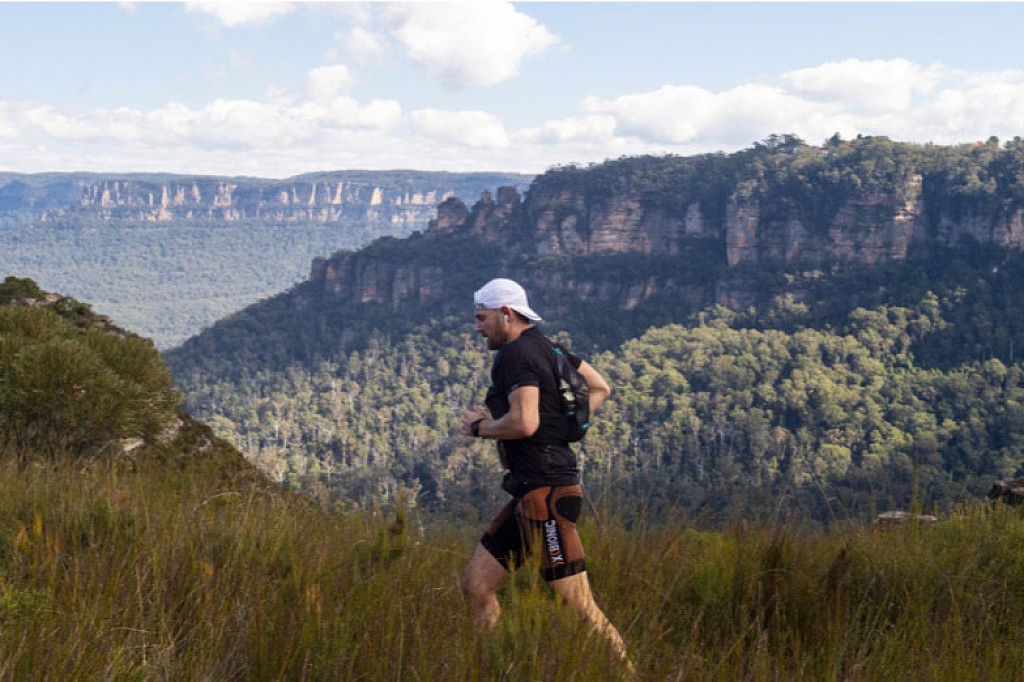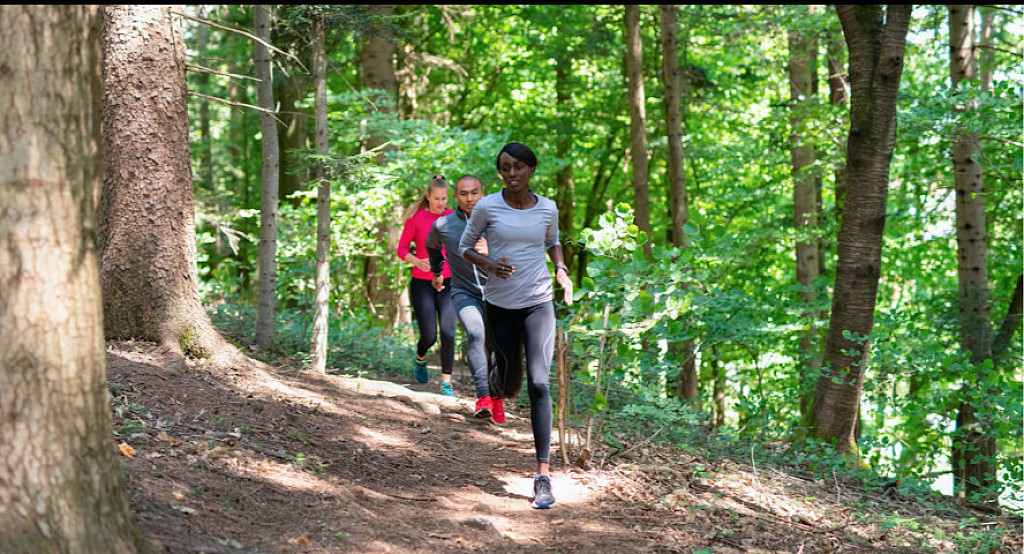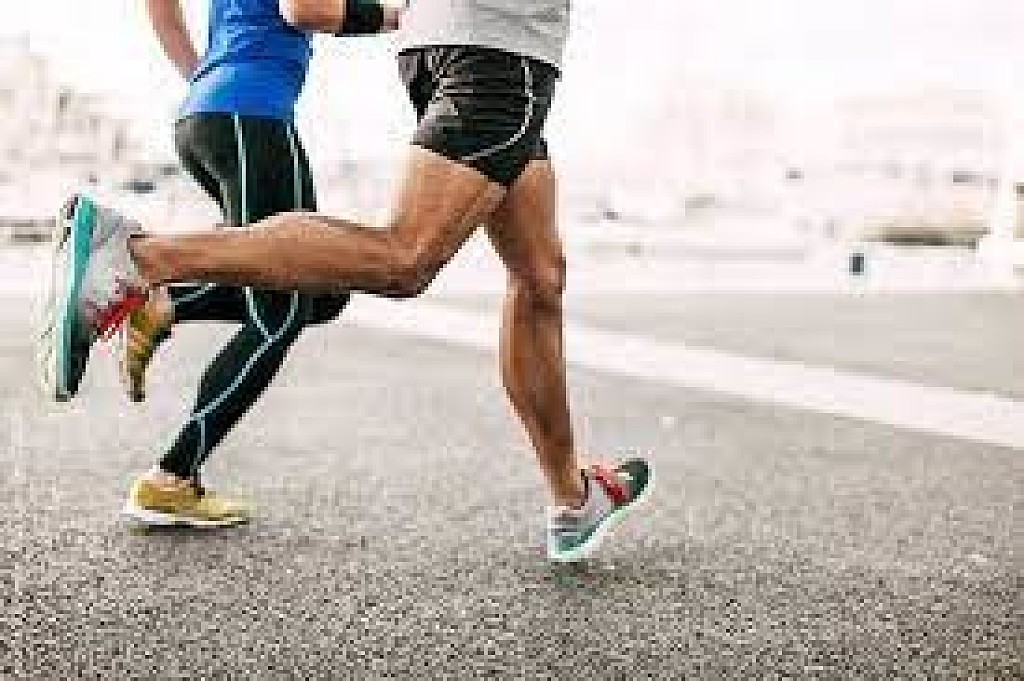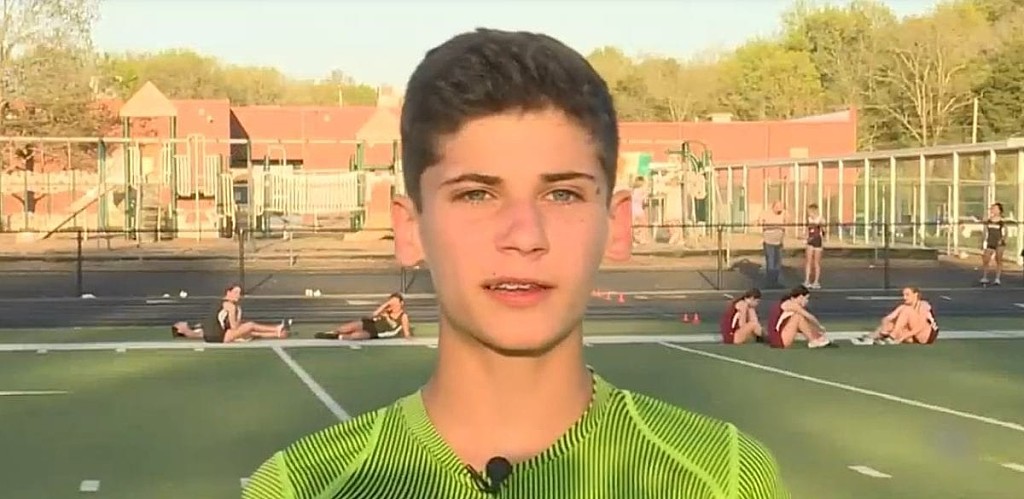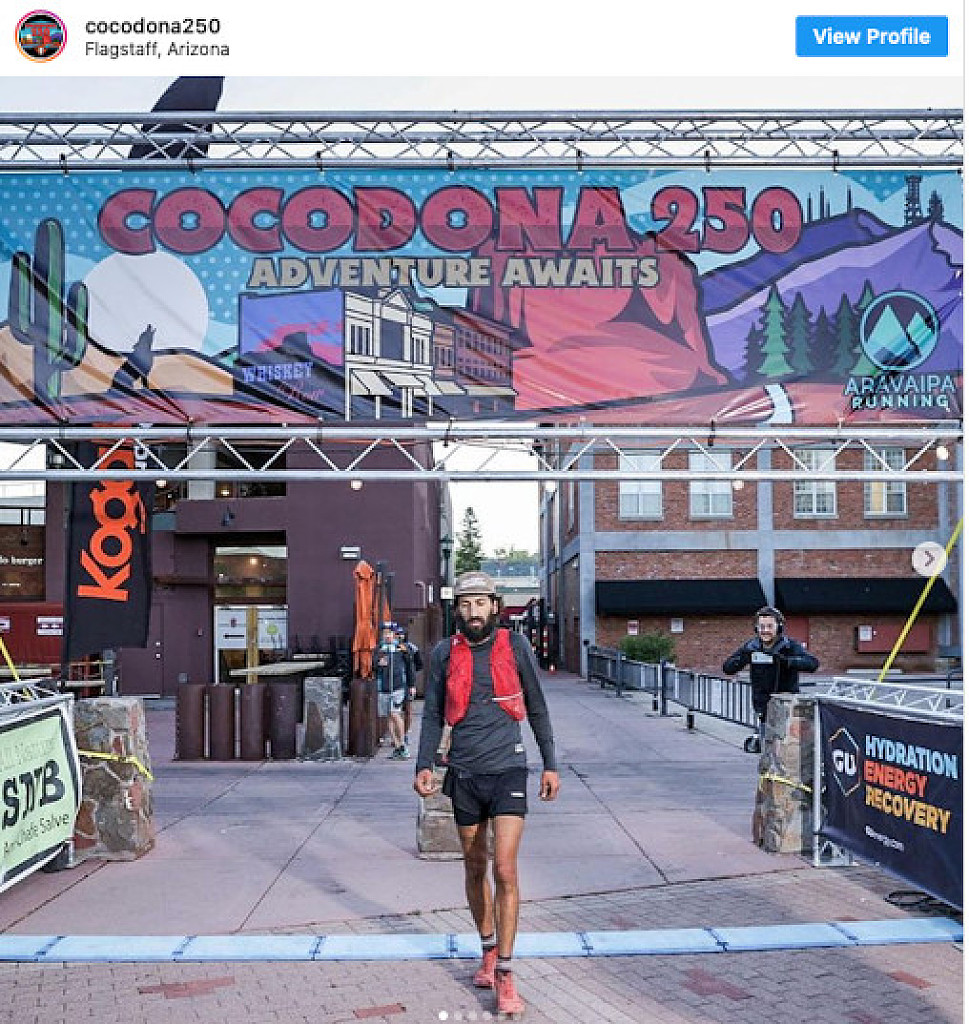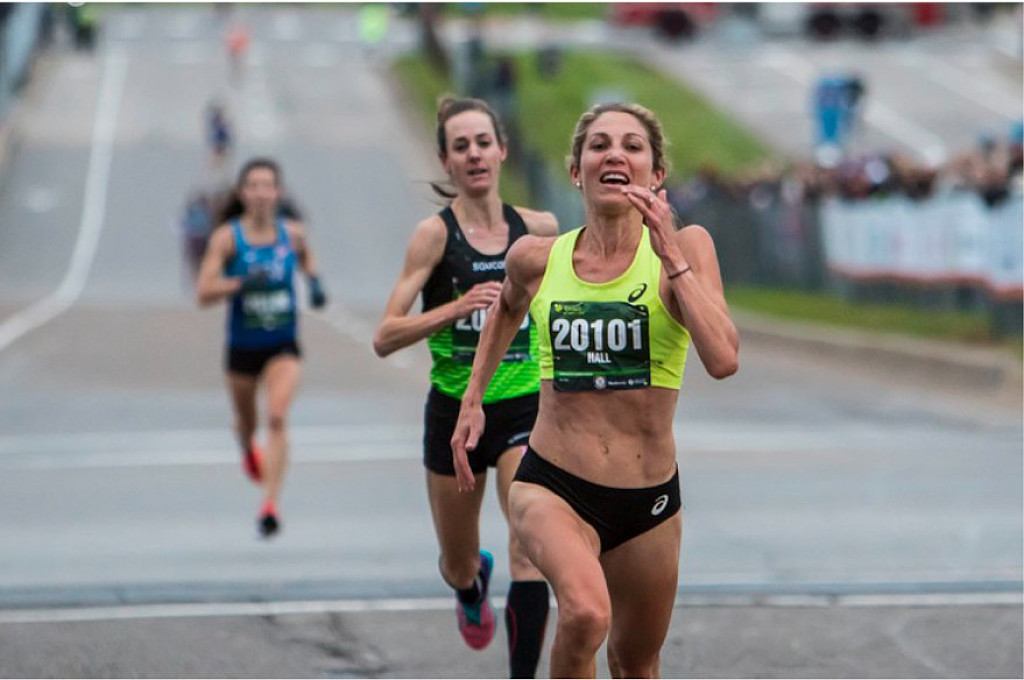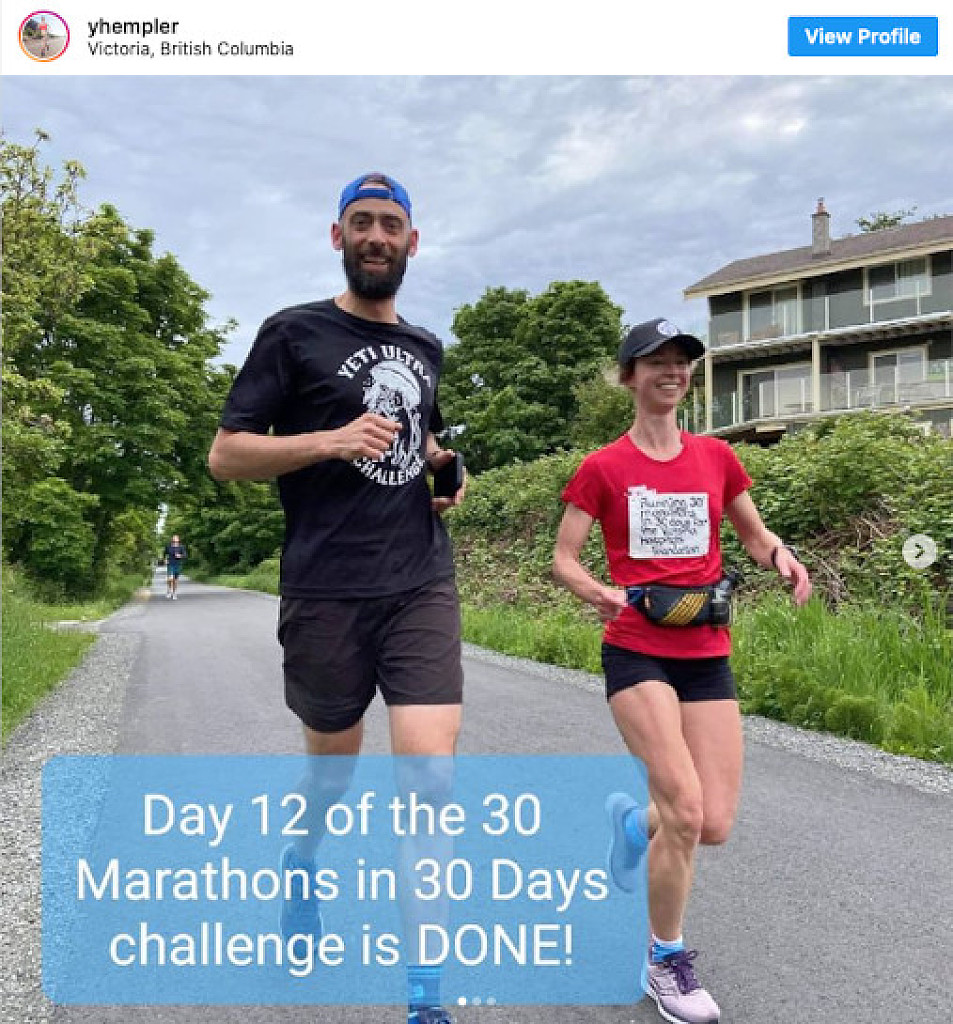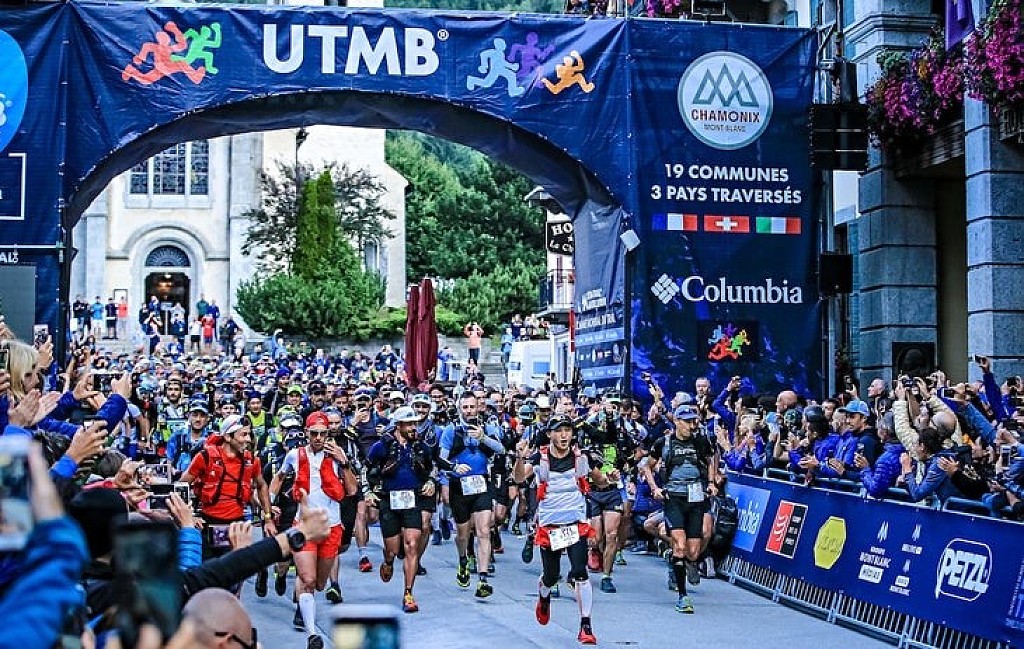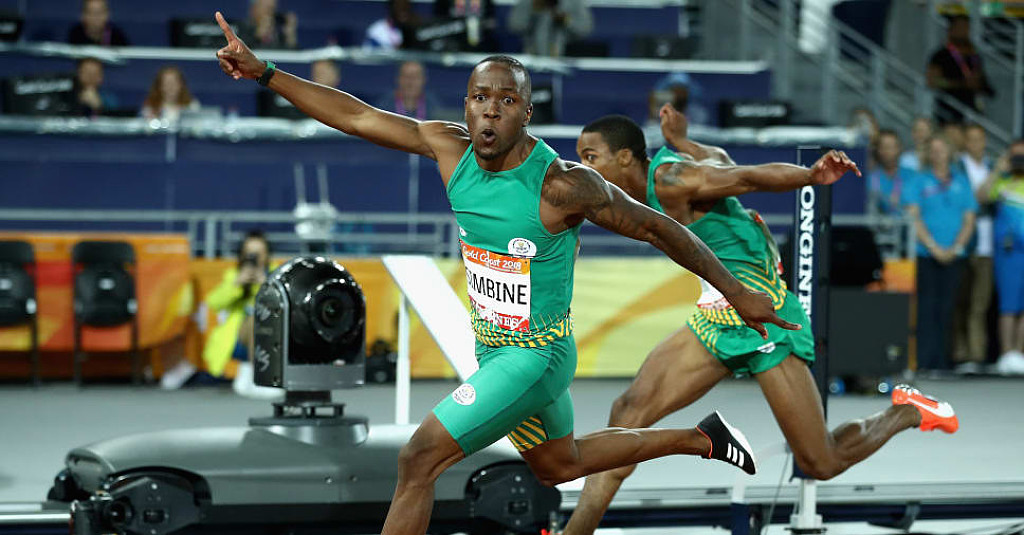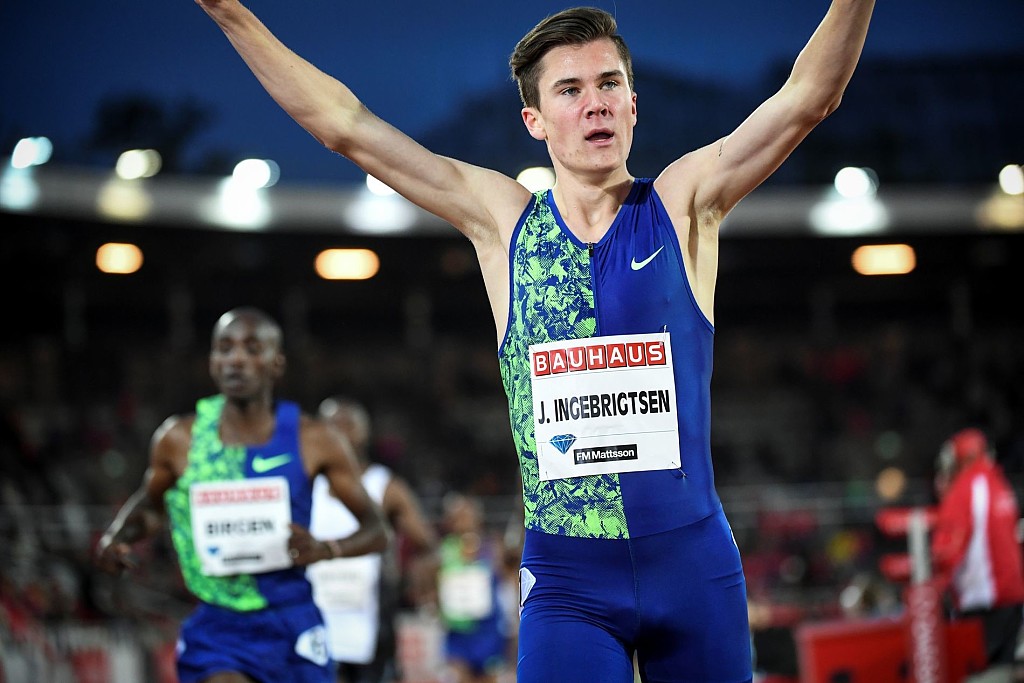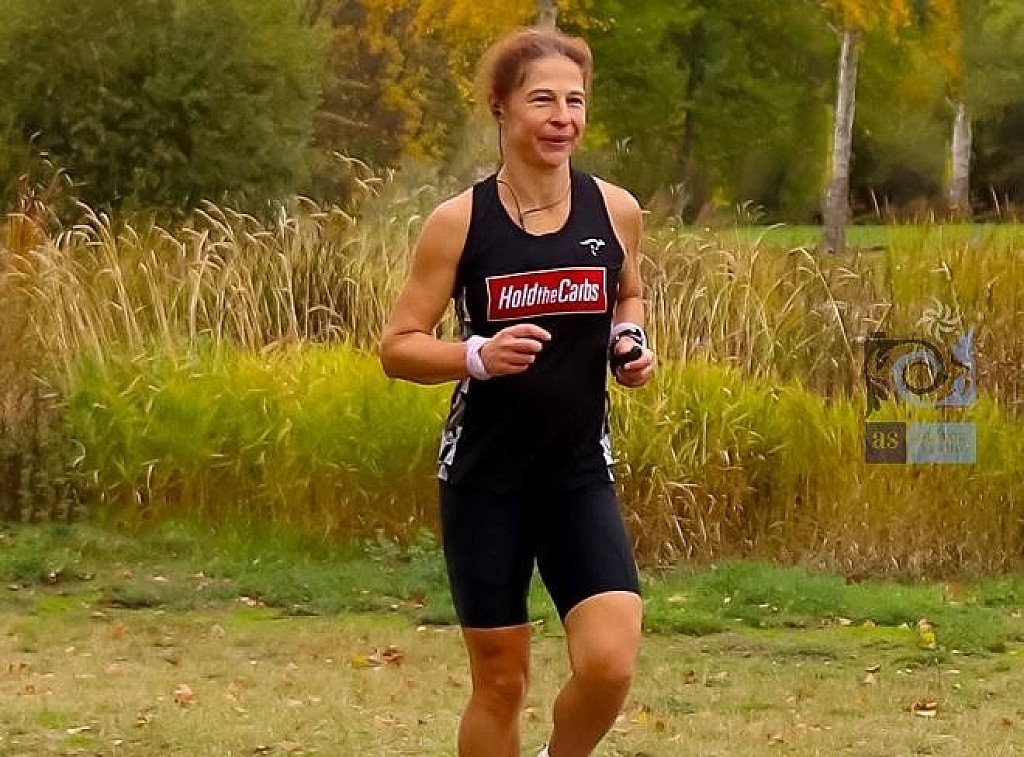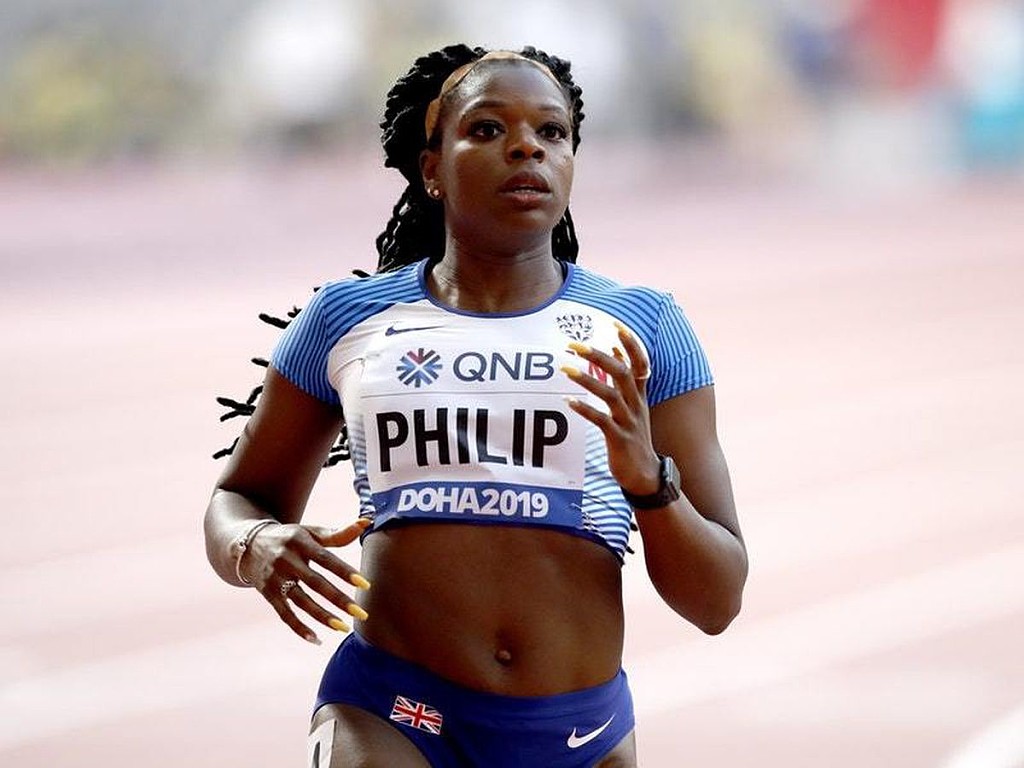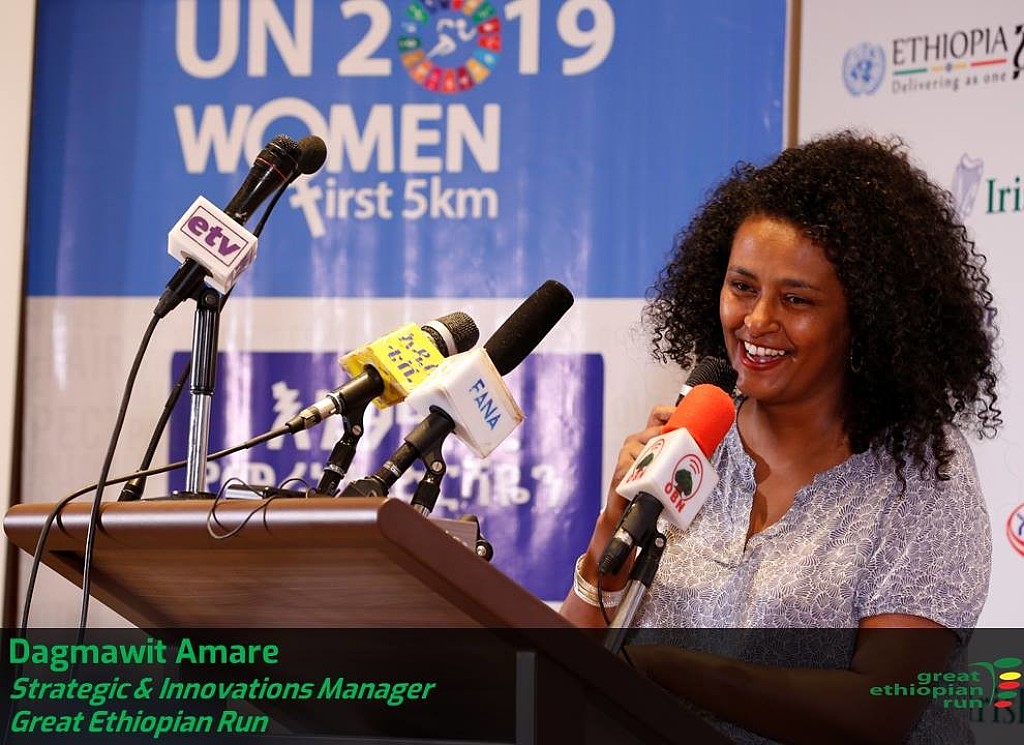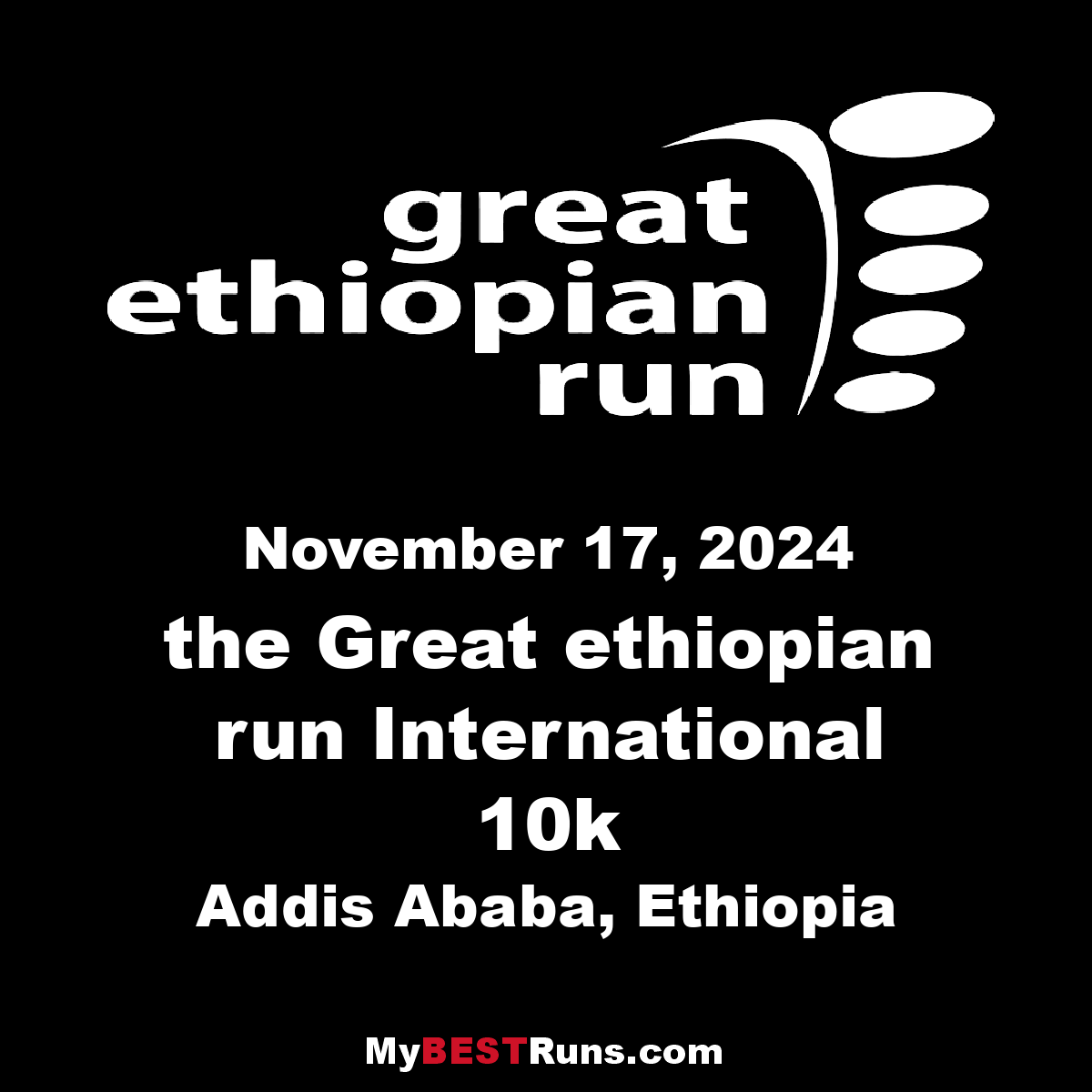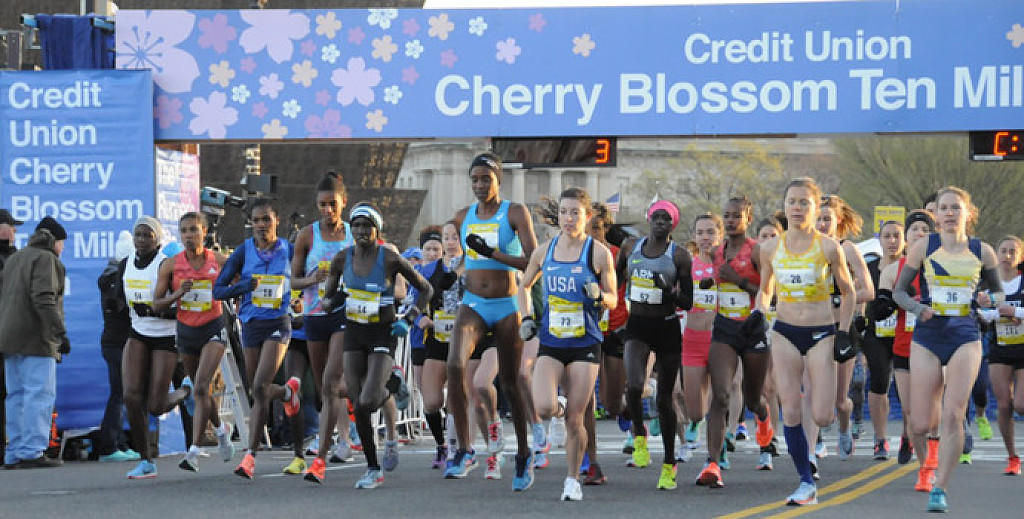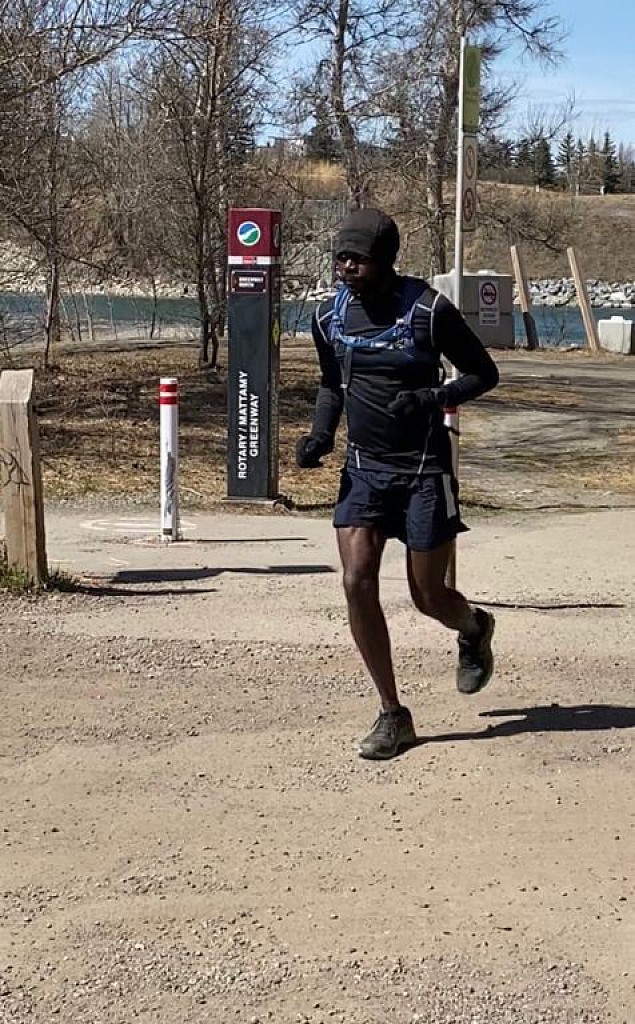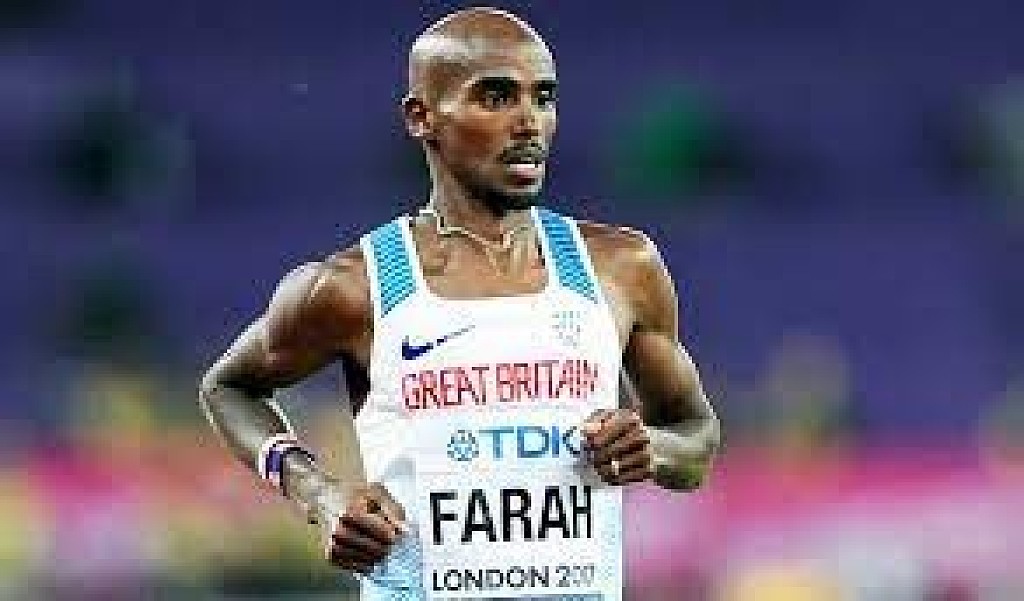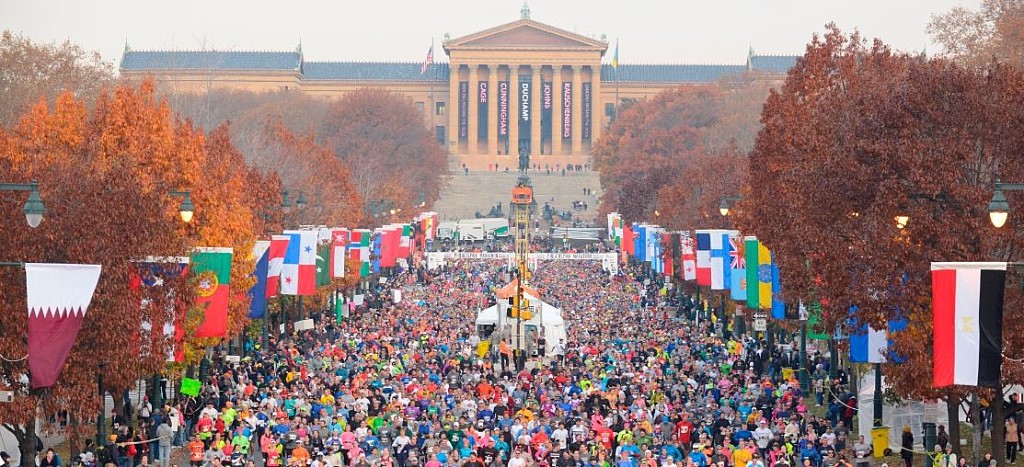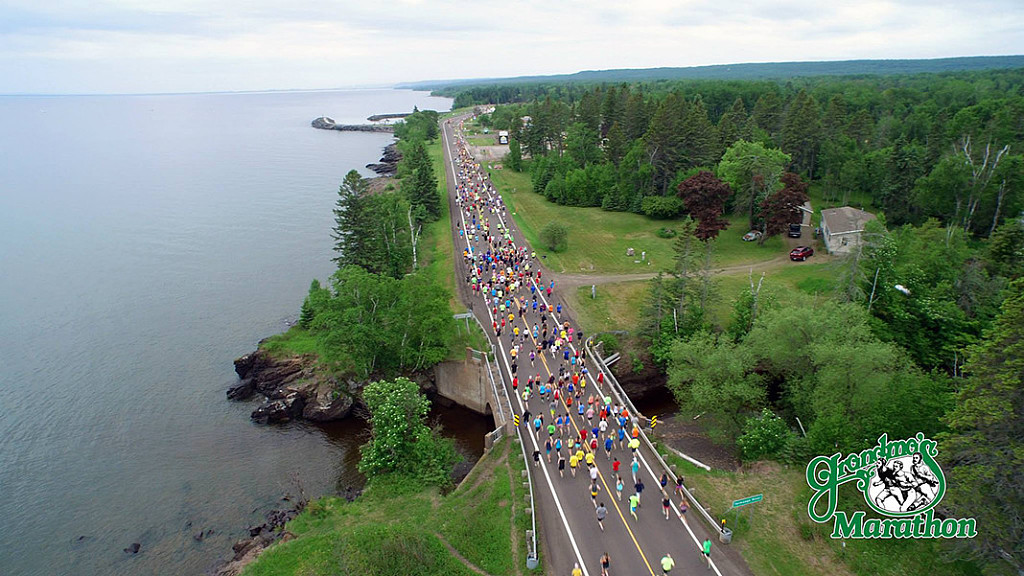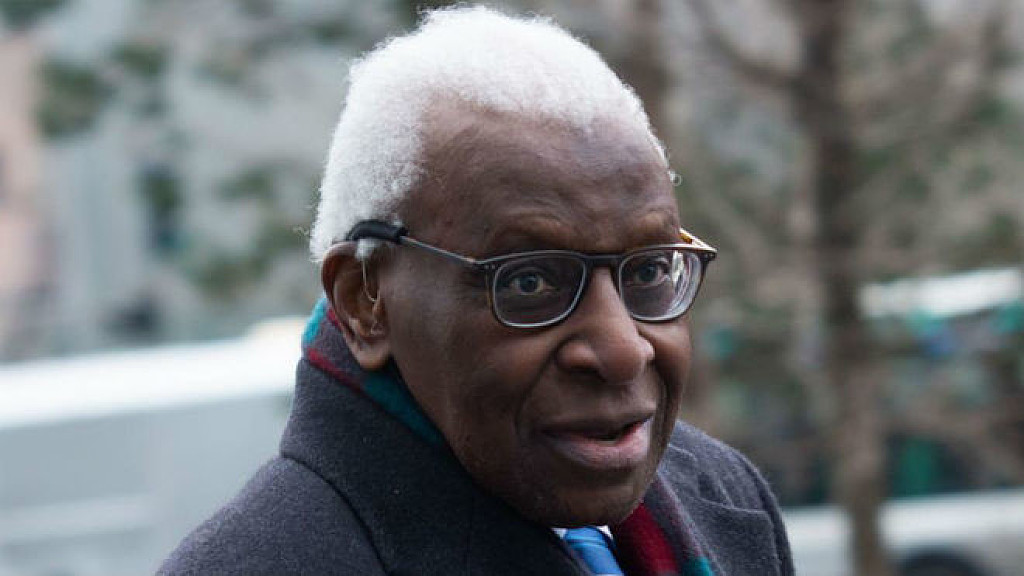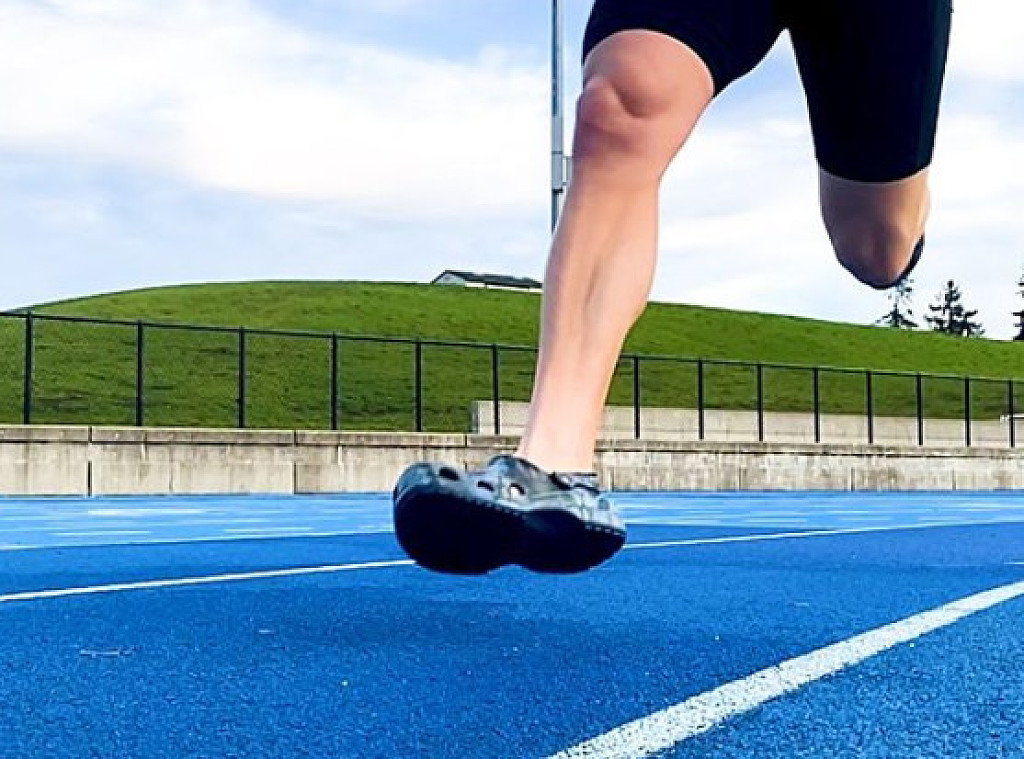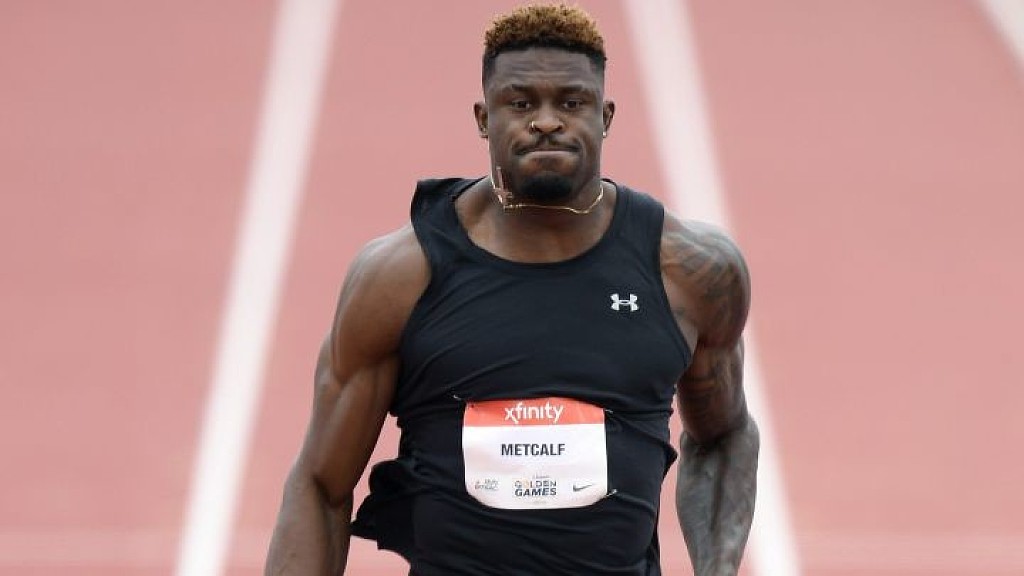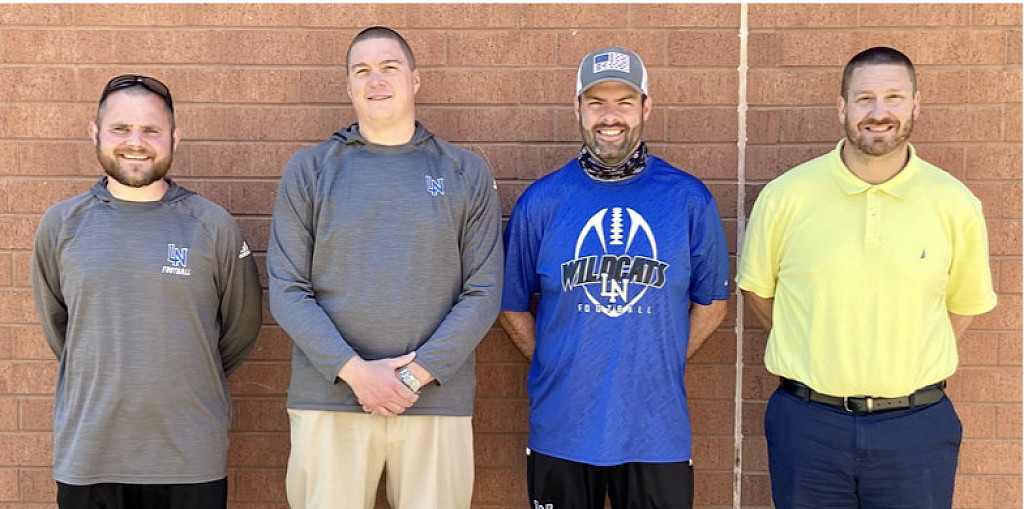Running News Daily
Running News Daily is edited by Bob Anderson in Mountain View, California USA and team in Thika Kenya, La Piedad Mexico, Bend Oregon, Chandler Arizona and Monforte da Beira Portugal. Send your news items to bob@mybestruns.com Advertising opportunities available. Over one million readers and growing. Train the Kenyan Way at KATA Running Retreat Kenya. (Kenyan Athletics Training Academy) in Thika Kenya. Opening in june 2024 KATA Running retreat Portugal. Learn more about Bob Anderson, MBR publisher and KATA director/owner, take a look at A Long Run the movie covering Bob's 50 race challenge.
Index to Daily Posts · Sign Up For Updates · Run The World Feed
2021 Akron Marathon Announces Blue Line Striders Training Program with SummaCare and Summa Health
The Akron Marathon Race Series presented by Summa Health is thrilled to announce its Blue Line Striders training series in partnership with SummaCare, giving its running community a sneak peek into the new FirstEnergy Akron Marathon, Half Marathon & Team Relay course.
During the Blue Line Striders training runs, happening once a month leading up to race day, participants will have the opportunity to run different sections of the Akron Marathon course. Additionally, each time runners meet, a doctor from Summa Health will join to discuss a health topic common for runners. All distances and paces are welcome!
Each Blue Line Striders training run has been carefully chosen based on the training plans outlined by the Akron Marathon and is the perfect supplement to assist runners leading up to each race.
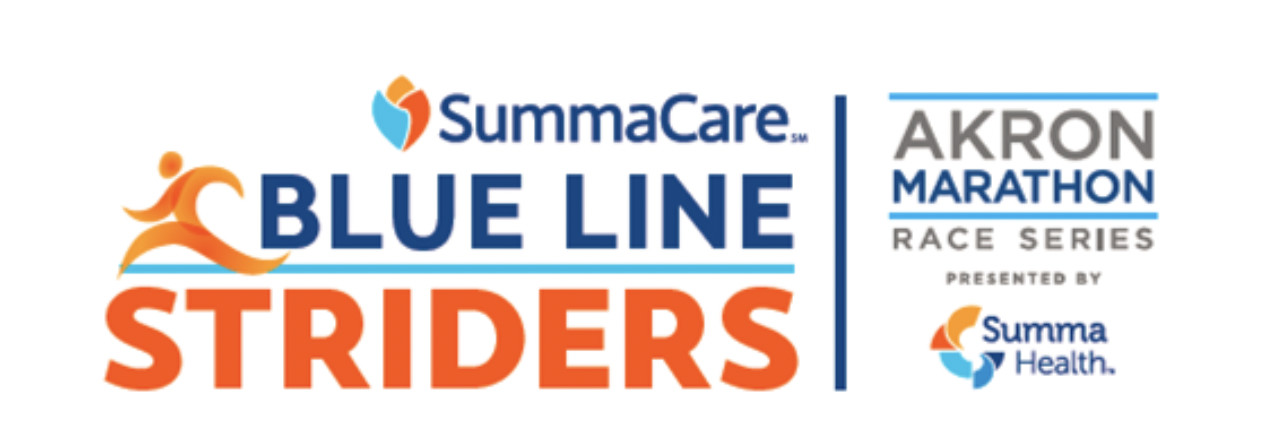
Blue Line Striders training runs will begin at 7:00 a.m. and will preview sections of the FirstEnergy Akron Marathon course:
4 miles: Sat., June 12, Relay Leg 1, 199 S. Broadway St, Akron, OH 44308
7 miles: Sat., July 10, Relay Leg 2, 199 S. Broadway St, Akron, OH 44308
7 miles: Sat., Aug. 21, Relay Leg 4, 1466 N. Portage Path, Akron, OH 44313
12 or 20 miles: Sat., Sept. 4, 199 S. Broadway St, Akron, OH 44308
Runner’s Choice: Sat., Oct. 9, 499 Memorial Parkway, Akron, OH 44310
“As the new presenting sponsor of this year's Akron Marathon Race Series, Summa Health is actively making a deeper connection with our blue liners and supporting runners not only on race day, but throughout their training season in a meaningful way,” states Anne Bitong, president and CEO of the Akron Marathon. “This program is their way to show its incredible level of support, and was designed to act as the perfect complement to the Akron Marathon training calendar.”
Topics discussed by Summa Health physicians will include common spring/summer injuries, the importance of long runs, the importance of cross-training/core work/stretching, personal record tips, avoiding the wall, and post-race recovery.
“We are thrilled to bring the expertise of our physicians to those participating in the Blue Line Striders Training Series,” said Dr. Nilesh Shah, Summa Health Sports Medicine Medical Director. “We know physical activity can sometimes come with injuries. By having these discussions, we hope to foster a safe and fun running environment for all, regardless of pace or experience.”
(05/21/2021) ⚡AMPAkron Marathon Race Series
The marquee event of the Akron Children’s Hospital Akron Marathon Race Series, the Akron Marathon, Half Marathon, & Team Relay presented by First Energy receives a fresh new look ! Runners will experience an unforgettable start inside the historic grounds of Stan Hywet Hall & Gardens before taking an exclusive foot tour of the City of Akron. The Goodyear Half...
more...Košice Peace Marathon registration now open
The oldest marathon in Europe will take place for the 98th time on Sunday, October 3, 2021.
If you want to be part of it, sign up now and enjoy the unique atmosphere of this running feast. Breathtaking history, enthusiastic spectators and a fast course make this marathon one of a kind.
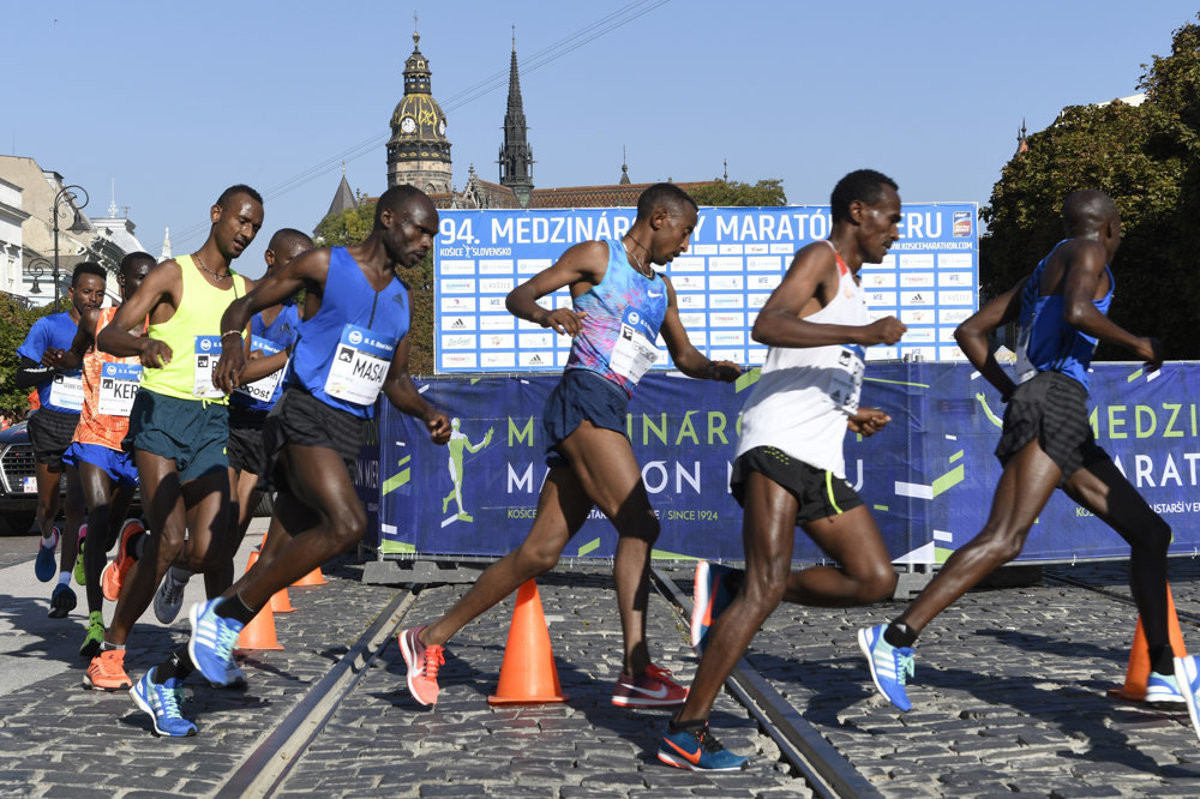
The Košice Peace Marathon offers many other projects and activities throughout the year. One of them is the large charity event called VSE City Run.
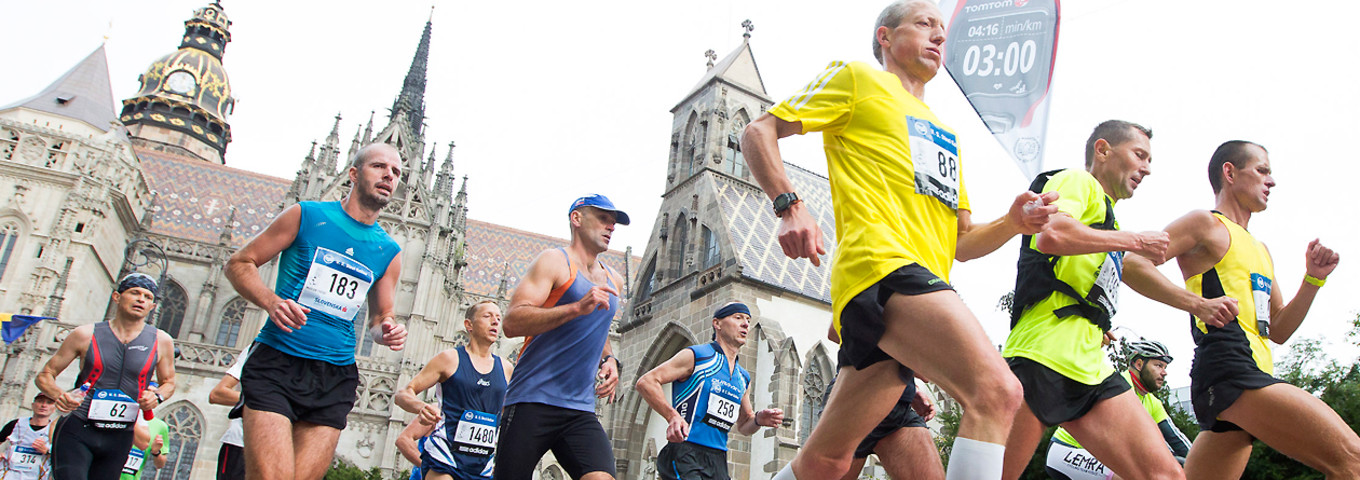
This time we’re going to run for the Mental Health League. It provides irreplaceable services and therapy for those who need to seek help for their soul.
This year, VSE City Run will take place in virtual form. Thanks to the latest technologies, namely the iWatt mobile app, you will be able to participate in this event from anywhere in the world from June 6 until June 20, 2021.
All runners will collect kilometers to reach the common ambitious goal of 400,000 kilometres. Ten times around our planet. And if that goal is met, it will be turned into financial aid for the Mental Health League.
(05/21/2021) ⚡AMPkosice Peace Marathon
The Kosice Peace Marathon is the oldest European marathon.This year for the organizers of Kosice Peace Marathon is also about memories and flashbacks. One of the fastest marathon courses has been created in Košice 20 years ago on that occasion it was the 1997 IAAF World Half Marathon Champioships. Tegla Loroupe and Shem Kororia were awarded from the hands of...
more...Ultra-Marathoners Share Their Top Tips for Every Kind of Runner
Here are their tips to help you achieve your running goals.
Schedule time to run
It might sound silly, but practically every athlete recommended setting time aside in your schedule. “The less I have to decide, the easier it is to get out,” explains Bradley. “I stick to a similar run plan week to week and month to month, so I don’t have to even think about getting out the door, I just do it.”
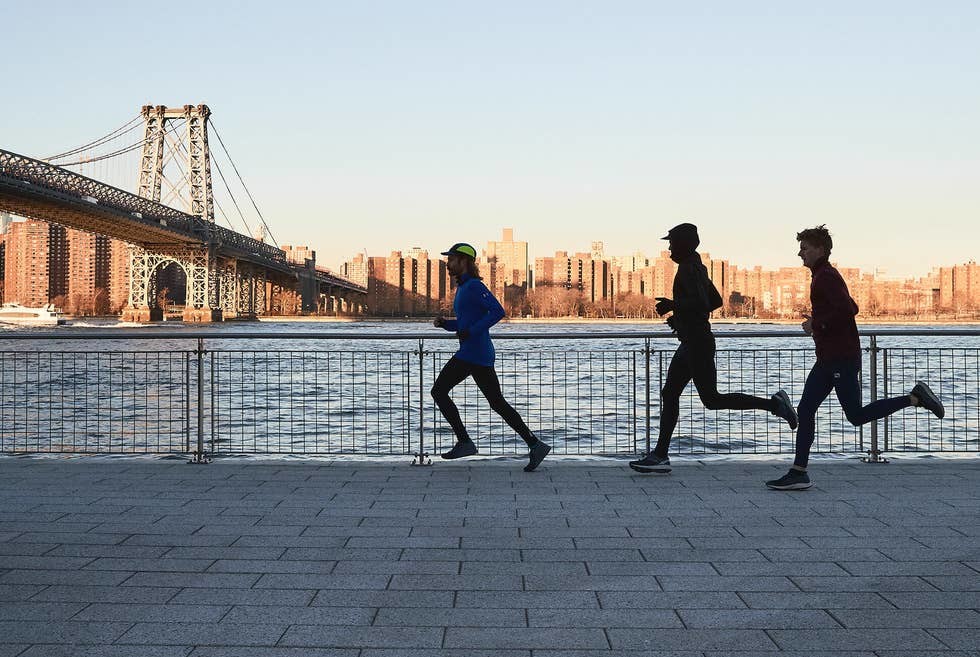
Sharman, the Leadville 100 Trail Champion in 2017, agrees: “Create a routine and stick to it unless you have genuine reasons not to. After a couple of weeks, the routine will become the norm and will be much more self-reinforcing.”
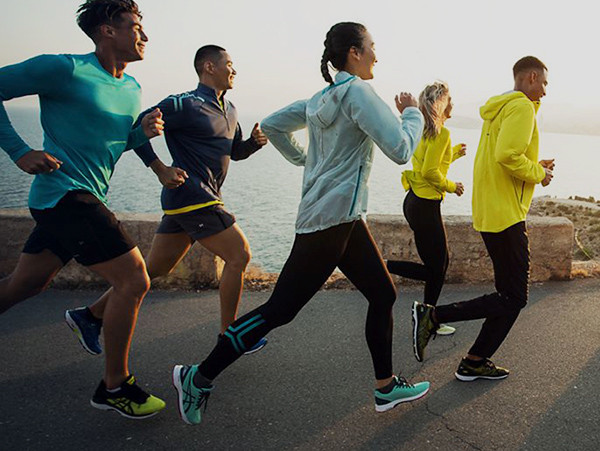
Even when you’re traveling, carve out some time for yourself to run
“For me that involves morning runs/activity to get me out the door and to kickstart my day,” Allen says. “When I travel and don’t know where I’m going, it can seem overwhelming, but if I’m committed to [it], I can have a general plan to explore and it usually works out in the end.”
Sign up for a race
“Find an event to sign up for that is just a little bit outside of your comfort zone,” suggests Boulet. “It will help motivate you to get out and train if you’ve paid your entry fee and declared to your friends and family (some of whom will hopefully join you!) that you will do this event.”
It helps if the race is in a beautiful place or somewhere you’ve had on your bucket list for ages, adds Bradley. “It makes it a lot easier to stick with it when everything starts to fall apart when you are in love with the project, race or goal.”
Hire a coach
While a few of these athletes are paid to run (and do it full time), many juggle full-time jobs with their passion for running. One commonality is the insight a coach can provide. “Not only does it take a lot of the strategic guesswork off my plate, but it also gives me another person to be accountable to,” Bowman says.
If a coach is out of the question, look for support in running groups
Coaches can be expensive, and that might be out of the question for you. There are other options to hold yourself accountable. When Boulet doesn’t feel like running, she reaches out to her network. “I have an extra cup of coffee and call a friend to schedule a running date,” she says. “Making a commitment to meet someone always works for me.”
Get out the door
Mental toughness is something that these athletes have in spades. They head out on practice runs that dwarf my measly 20- to 30-mile weeks. But if you don’t feel you have it, don’t fret. “Toughness is not something you’re born with, it’s a skill you can gain with practice,” Boulet says. “Practice being tough in regular training or it won’t be there on race day,” Sharman adds.
If you don’t feel an urge to get up and run every single day, that’s okay. “I like to get out the door even if I’m feeling tired,” Allen says. “I tell myself to see how I feel for the first ten minutes and I go from there.”
No matter what your training day looks like, remember to listen to your body
Sometimes you’ll jump up out of bed and hit the road. Other days, you might feel lazy and not want to go. Do it for your mental health, or bargain with yourself. “I remind myself how much better I feel after running than I did before,” Boulet says.
But remember to take rest days, too. “A common mistake for newer ultra and trail runners isn’t that they aren’t training hard enough, it’s that they aren’t training smart enough and respecting rest and recovery,” says Krar. “Remember that a single run or single race does not define you. There will be bumps along the way and they’re to be expected. Most importantly, run with a purpose. Show up and do your best.”
A little mental prep goes a long way
Everyone needs a little help to get through a long-distance race. The monotony of one foot in front of the other can use a spike. “I’ve used mediation apps like Headspace and Calm,” says Bowman. “These apps cultivate mental and emotional poise, so when adversity inevitably arises, I’m less likely to be overwhelmed by it.”
Running is a journey (literally), so “don’t aim for the stars, aim for the trees,” Bosio says. “Make resolutions that are reasonably attainable. Don’t beat yourself up if you don’t stick with it 100 percent. Tomorrow is always another day!”
(05/20/2021) ⚡AMP
by Meg Lappe
New York City Marathon could boost city economy
There is yet another sign of the economy jogging steadily forward out of pandemic recession: the organizers of the New York Marathon say it will be run again this year—on November 7—after last year’s event was cancelled. COVID-19 shut down marathons and sporting events of every kind around the world in 2020, which meant a lot of lost revenue for cities and businesses.
This year’s New York Marathon will be smaller. It will have 33,000 runners instead of more than 50,000 in 2019. There will be staggered start-times to prevent crowding, and runners will be subject to whatever COVID restrictions and test protocols are in effect in the fall.

When the 2020 marathon was cancelled in New York City, more was lost than 26-miles of sweat and strain for the runners. “The economic impact is quite significant,” said Scott Rosner, academic director of the Sports Management Program at Columbia University’s School of Professional Studies. He has run in the New York City marathon himself.
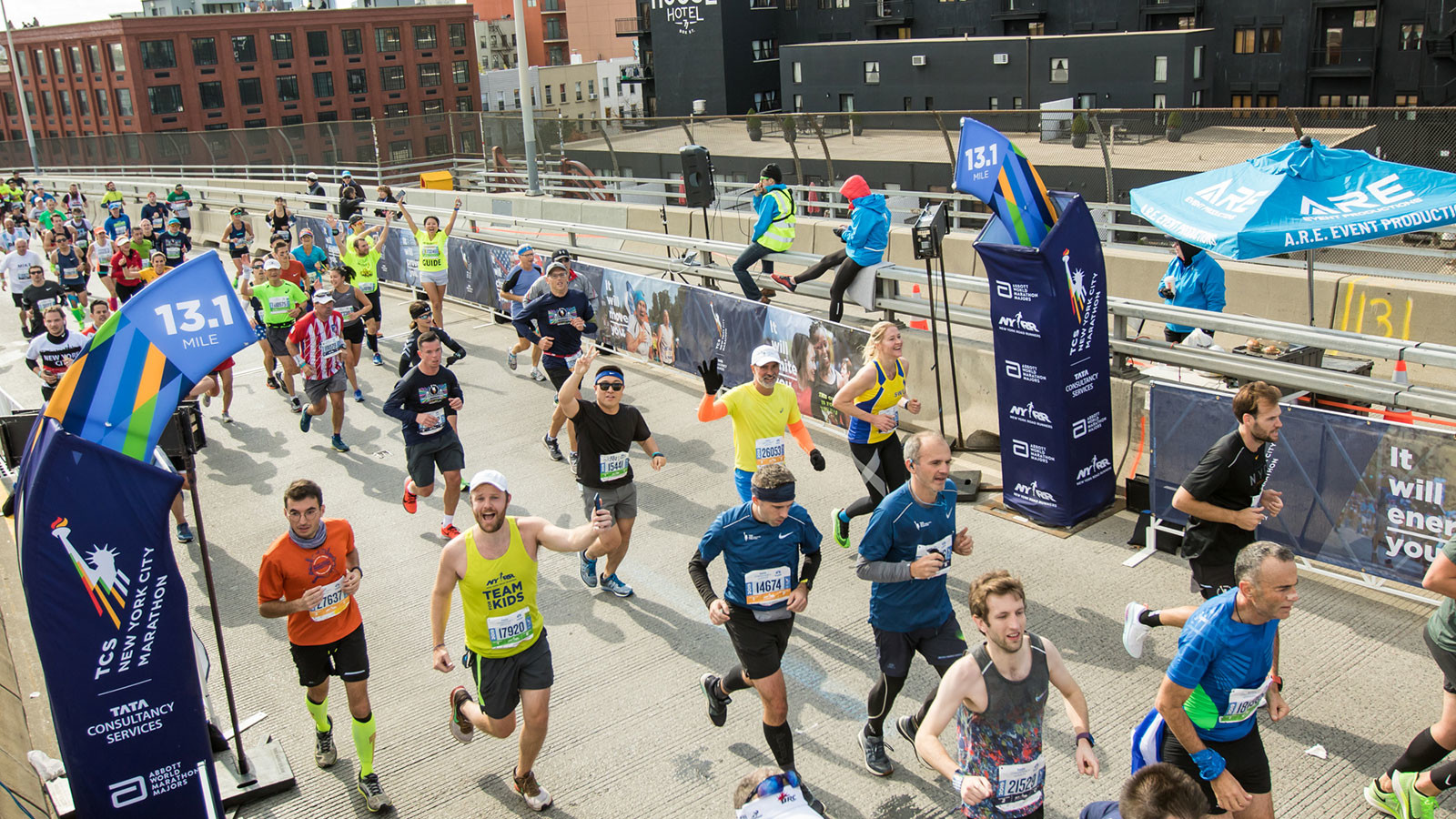
Rosner said that for big cities, marathons bring entry fees and charity fundraising plus “all the visitors.” He said it helps because “hotel occupancy rates are high, you know, street vendors, especially on the race route.”
Overall, this kind of event will likely bring in tens of millions of dollars for New York according to sports economist Andrew Zimbalist at Smith College. But this year it means more than just money, he said “Symbolically, it’s significant because we’re coming back, and with the marathon and sports generally, it’s a community re-establishing itself.”
Zimbalist said, however, the really big money for cities still depends on fully restoring professional team sports like baseball, football, basketball and hockey.
(05/20/2021) ⚡AMPTCS New York City Marathon
The first New York City Marathon, organized in 1970 by Fred Lebow and Vince Chiappetta, was held entirely in Central Park. Of 127 entrants, only 55 men finished; the sole female entrant dropped out due to illness. Winners were given inexpensive wristwatches and recycled baseball and bowling trophies. The entry fee was $1 and the total event budget...
more...2021 Grandma's Marathon announces post race concert
Five local groups will take the stage at Bayfront Festival Park on Saturday, June 19 as part of the 45th annual Grandma’s Marathon weekend, it was announced today.
The all-day celebration, which is free and open to all ages, was moved to Bayfront this year from its traditional place near the finish line in Canal Park. Rock-a-Billy-Revue will kick the off the live show at 9:00 a.m. Saturday and be followed throughout the day by Boxcar, Whiskey Trail, and Big Wave Dave & The Ripples.
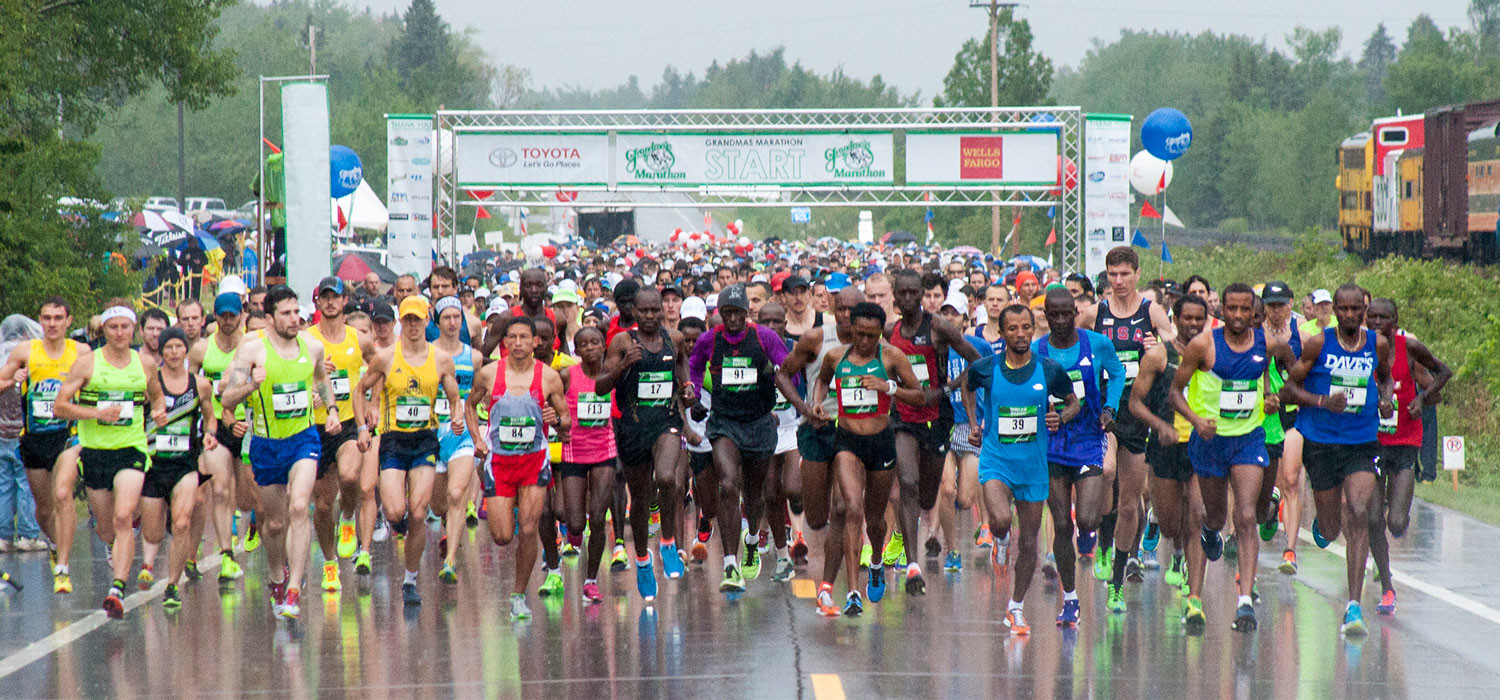
“The past year has been extremely tough for so many in Duluth and our surrounding communities, and we feel very fortunate and honored to have received such generous support through the years,” Finance & Operations Director Linda Hanson said. “This is an opportunity not just to celebrate a job well done but also to provide a huge thank you to everyone who has ever been part of Grandma’s Marathon. There is no doubt we would not be here without each and every one of them.”
Participants in both Grandma’s Marathon and the Garry Bjorklund Half Marathon will receive a free drink ticket after completing their race, and those tickets can be redeemed all day Saturday at Bayfront Festival Park. Beverages will be provided by Superior Beverages & Coca-Cola, and food will be provided by Famous Dave’s.
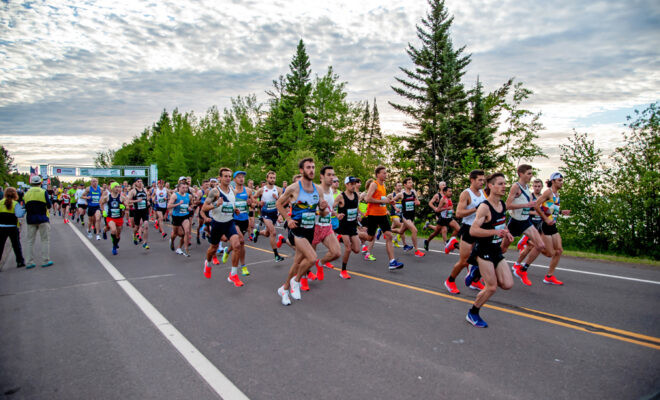
Bayfront Festival Park will be open from 8:00 a.m. until 10:00 p.m. on Saturday, June 19. Sounds Unlimited will play music between sets, and a full lineup of the day’s live music is below:
9:00 a.m. – 12:00 p.m. – Rock-a-Billy Revue
12:30 p.m. – 2:30 p.m. – Boxcar
3:00 p.m. – 5:00 p.m. – Big Wave Dave & The Ripples
5:30 p.m. – 7:00 p.m. – Whiskey Trail
7:30 p.m. – 9:30 p.m. – Big Wave Dave & The Ripples
Boxcar will also play a live set on Friday, June 18 from 6:30 p.m. to 8:30 p.m. following the 27th annual William A. Irvin 5K, which will start and finish for the first time this year in Bayfront Festival Park. Admission for that show is also free and open to all ages.
The musical lineup is one of several pieces Grandma’s Marathon has added back into its 2021 weekend plan following the recent loosening of the state’s COVID-19 restrictions. Another significant change will be that masks or face coverings will no longer be required, though still strongly encouraged, through most parts of the weekend’s events.
“Grandma’s Marathon is a large event that is still going to attract people from all over the country, from all different walks of life, and potentially with many different comfort levels,” Marketing & Public Relations Director Zach Schneider said. “We want everyone involved to feel as comfortable and as safe as possible, so we encourage everyone to take proper precautions in terms of masks and distancing even in areas it’s not technically required by the guidance.”
The only area where masks or face coverings will still be required is on the shuttle bus before and after the race, in keeping with current public transportation guidelines.
(05/20/2021) ⚡AMPGrandmas Marathon
Grandma's Marathon began in 1977 when a group of local runners planned a scenic road race from Two Harbors to Duluth, Minnesota. There were just 150 participants that year, but organizers knew they had discovered something special. The marathon received its name from the Duluth-based group of famous Grandma's restaurants, its first major sponsor. The level of sponsorship with the...
more...American Olympic steeplechaser Colleen Quigley signs with Lululemon
American Olympic steeplechaser Colleen Quigley announced on Instagram on Wednesday that she has signed a new sponsorship deal with Lululemon. The former Nike athlete has been without a sponsor since February, and in her announcement video explained she chose Lululemon because she wanted a sponsor that “understood the whole me.”
This is the second big announcement from Quigley this year, coming a few months after she surprised the running world when, in early February, she left the Bowerman Track Club, where she’d been training for five years. Her new coach is Josh Seitz, who worked with her while she attended Florida State University.
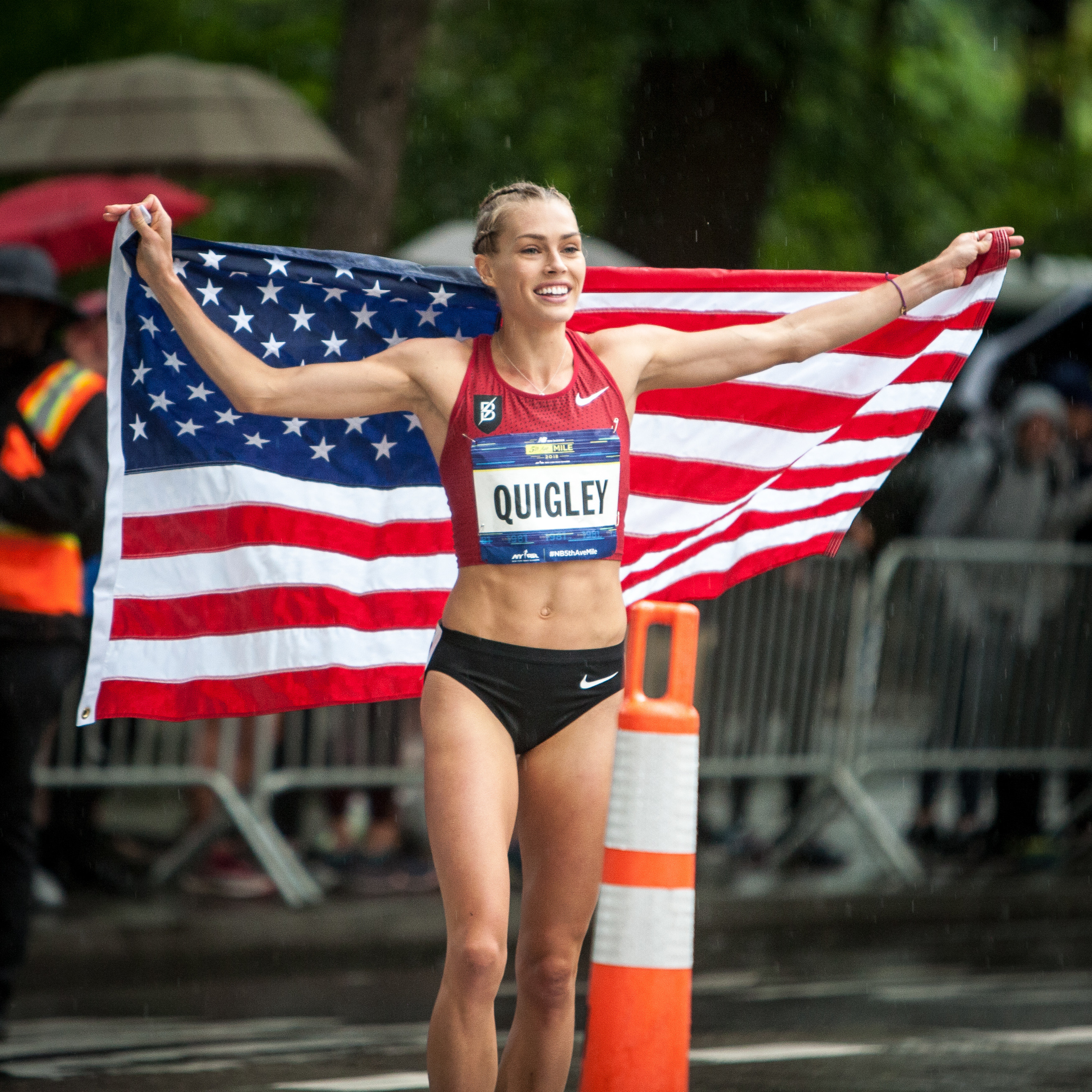
Quigley explains her decision on her website in a post titled “Why lululemon?” In this post, she talks about the expectations that are often placed on professional runners and what they’re told they should or shouldn’t do, and explains that she no longer wants to let that dictate her actions.
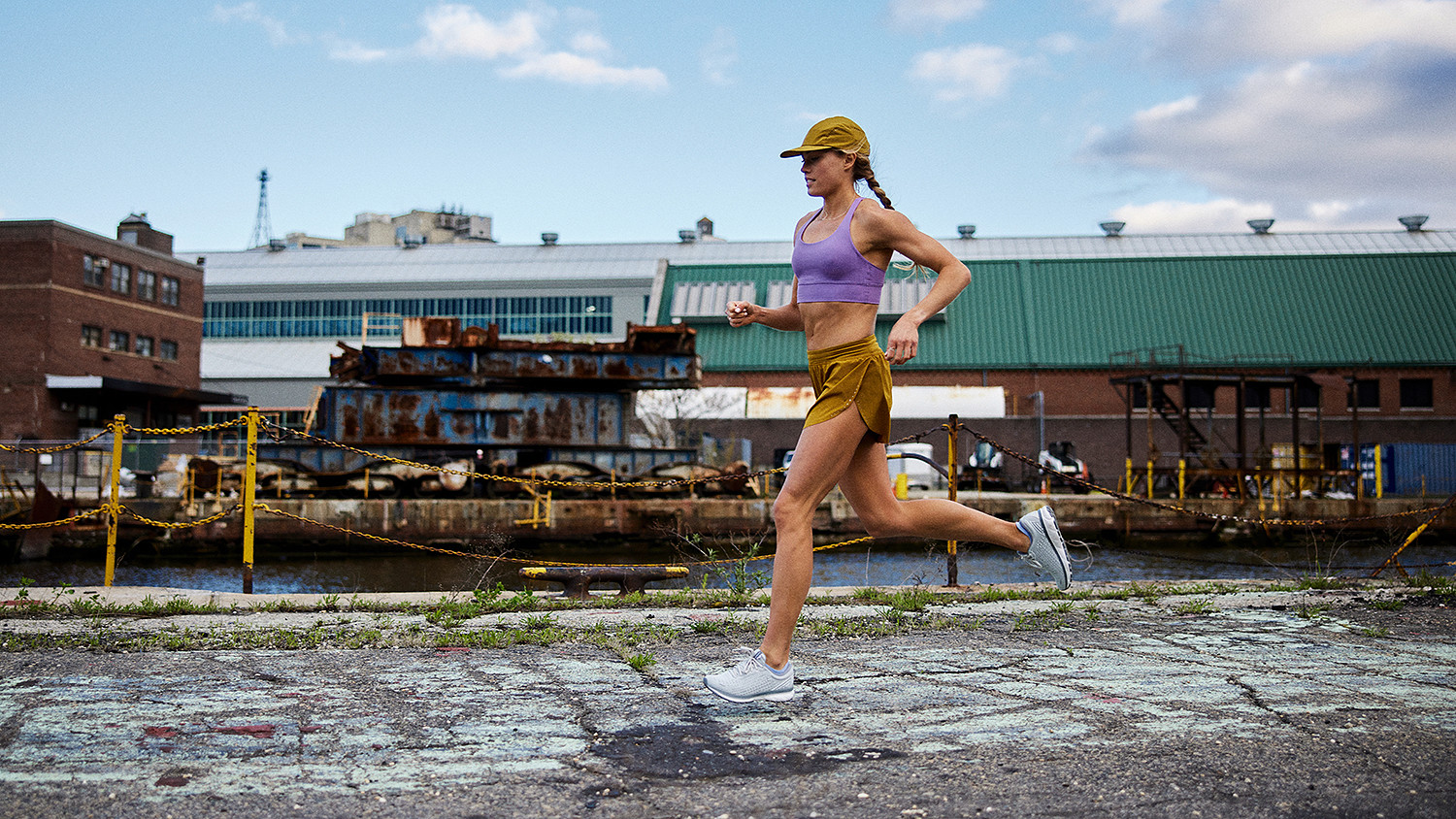
“This runner does more than run. And finally this runner will no longer work with brands or people who don’t accept and even celebrate every side of her both off and on the track,” she said.
Along with her announcement, she has included a contest in which she is giving away four $150 Lululemon gift cards and four pieces of autographed Lululemon apparel. If you want to enter the contest you must first subscribe to Quigley’s newsletter.
(05/20/2021) ⚡AMPby Brittany Hambleton
Ugandan Joshua Cheptegei misses 3K WR in Ostrava
All eyes were on Joshua Cheptegei ahead of Wednesday’s Ostrava Golden Spike meet in the Czech Republic, as the 24-year-old Ugandan was looking to break the 3,000m world record. Cheptegei ended up running to a disappointing finish, falling well short of the record, but the meet was far from uneventful, as several other athletes posted remarkable times. Among these impressive performances were runs from teenaged Brits Max Burgin and Keely Hodgkinson in the men’s and women’s 800m races and an amazing showing from Cheptegei’s compatriot Jacob Kiplimo in the 10,000m.
Cheptegei falls short
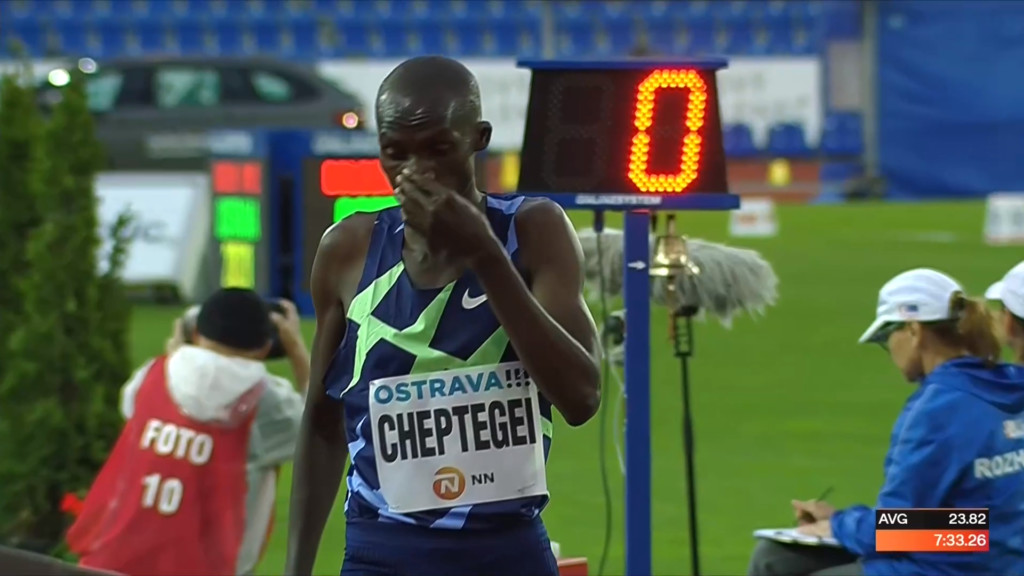
Cheptegei had an incredible 2020 season that saw him run three world records (5K, 5,000m and 10,000m) in four races. He had already raced twice in 2021 ahead of Wednesday’s meet, and he was itching to add another record to his resume, so he targeted Kenyan Daniel Komen‘s 3,000m mark of 7:20.67, which has been the time to beat for 24 years.
Before the run, Cheptegei’s agent, Jurrie van der Velden, told LetsRun.com that this record could be the toughest one Cheptegei has tried to beat, and after he finished 13 seconds behind Komen’s time on Wednesday, that appears to be true. Cheptegei opened the race on world record pace, and he passed through the first 1,600m in 3:55. He proceeded to slow considerably in the following few laps, though, and crossed the line far off the world record.
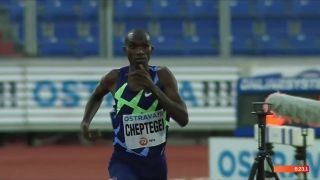
British domination
Young Brits won both 800m races. Hodgkinson’s win wasn’t too much of a surprise, as she has had a tremendous season so far. The 18-year-old opened her season in Austria in January with a U20 indoor 800m world record of 1:59.03 (which American Athing Mu lowered a month later with a 1:58.40 run in Arkansas), and she followed that up with a win in the women’s 800m at the European Indoor Championships. On Wednesday, she broke two minutes for the first time outdoors, winning the women’s race in Ostrava in 1:58.89, which is a new U20 European record.
The men’s 800m was the first race of the season for Burgin, but he ran extremely well and took the win in 1:44.14. Like Hodgkinson, Burgin (who turns 19 on Thursday) now owns the U20 European 800m record, and his result in the Czech Republic is a new world-leading time for 2021. Both Hodginson’s and Burgin’s times are under the Olympic 800m standards.
Kiplimo crushes the 10,000m
With all of the attention on Cheptegei, Kiplimo managed to fly under the radar until his race. Then, lining up in the men’s 10,000m, the 20-year-old flew away from the rest of the field, and 25 laps later, he stopped the clock in 26:33.93. This is a new world-leading time, it crushed the second-place finisher (who crossed the line in 27:07.49) and it shattered Kiplimo’s previous PB of 27:26.68 by close to a full minute. Before the race, Kiplimo said he was hoping to break 27 minutes, and he accomplished this goal with ease. His result now puts him at seventh-best in history at the distance.
Canadian sprints
Canadian sprinters Andre De Grasse and Aaron Brown were both in action in Ostrava. De Grasse raced the 100m, and he crossed the line in 10.17 seconds. He finished in third place behind American Fred Kerley (9.96) and Justin Gatlin (10.08). Brown also finished in third place, although he raced the 200m. Brown ran 20.40 seconds, and he finished behind Kenny Bednarek of the U.S. (19.93) and Kerley (20.27). Both De Grasse and Brown are set to race at the Gateshead Diamond League on Sunday in the U.K.
(05/19/2021) ⚡AMP2021 Boilermaker Logo Unveiled
The Boilermaker Road Race conducted a press conference on Wednesday to commemorate one of its favorite traditions, the unveiling of an annual race logo. Since 1992, the non-profit organization has sought to create a distinct design, both identifiable with the Boilermaker brand yet unique to each and every race.
The 2021 logo, designed by race sponsor McGrogan Design, is especially significant for a variety of reasons. Most notably, it is associated with a historic version of the almost 44-year old road race. 2021 will see the first live, in-person Boilermaker run outside of its traditional second Sunday in July date. The new logo prominently features the permanent finish line arch on Court Street, a Utica landmark, and also represents a shift from the organization’s recurring color scheme to a fall-themed color palette.

“This unique take on Boilermaker 44 pays respect to the challenging and historic circumstances we find ourselves in while also looking forward to much better days, just ahead,” said Boilermaker Marketing Director, Jordan Peters. “The beloved finish line arch is a perfect symbol for the reunion of the Boilermaker with its community this fall.”

Race officials also addressed registration dates and information for the 2021 race at the press conference. Although not yet in a position to open registration due to questions surrounding its permitted race capacity, officials are targeting mid-June to make such information available with registration shortly thereafter.
Coinciding with the logo unveiling, the Boilermaker has made available, for online purchase only, a small number of limited edition performance shirts featuring the new logo set against an outline of the iconic race course. They can be found by visiting boilermaker.com while supplies last.
(05/19/2021) ⚡AMPBoilermaker 15k
The Boilermaker 15K is the premier event of Boilermaker Weekend. This world krenowned race is often referred to as the country's best 15K. The Boilermaker 15K is recognized for its entertaining yet challenging course and racing's best post-race party, hosted by the F.X. Matt Brewing Company, featuring Saranac beer and a live concert! With 3 ice and water stops every...
more...British sprinter Dina Asher-Smith lays down Tokyo marker with 200m win
Seb Coe, who knows a thing or two about winning Olympic titles, is convinced that Dina Asher-Smith will be Team GB’s poster girl in Tokyo. Her rivals in the 100m and 200m will have something to say about that, but there were encouraging signs as Asher-Smith blitzed her way to victory in her first outdoor race of the season in Savona.
Asher-Smith has not competed in the 200m since winning world championship gold in Doha in October 2019. But in a low-key meeting in Italy all her familiar traits – including a lightning start and a bend so exquisite that the Italian commentator shouted “mamma mia!” as she powered round it – were evident as she came home in 22.56sec.
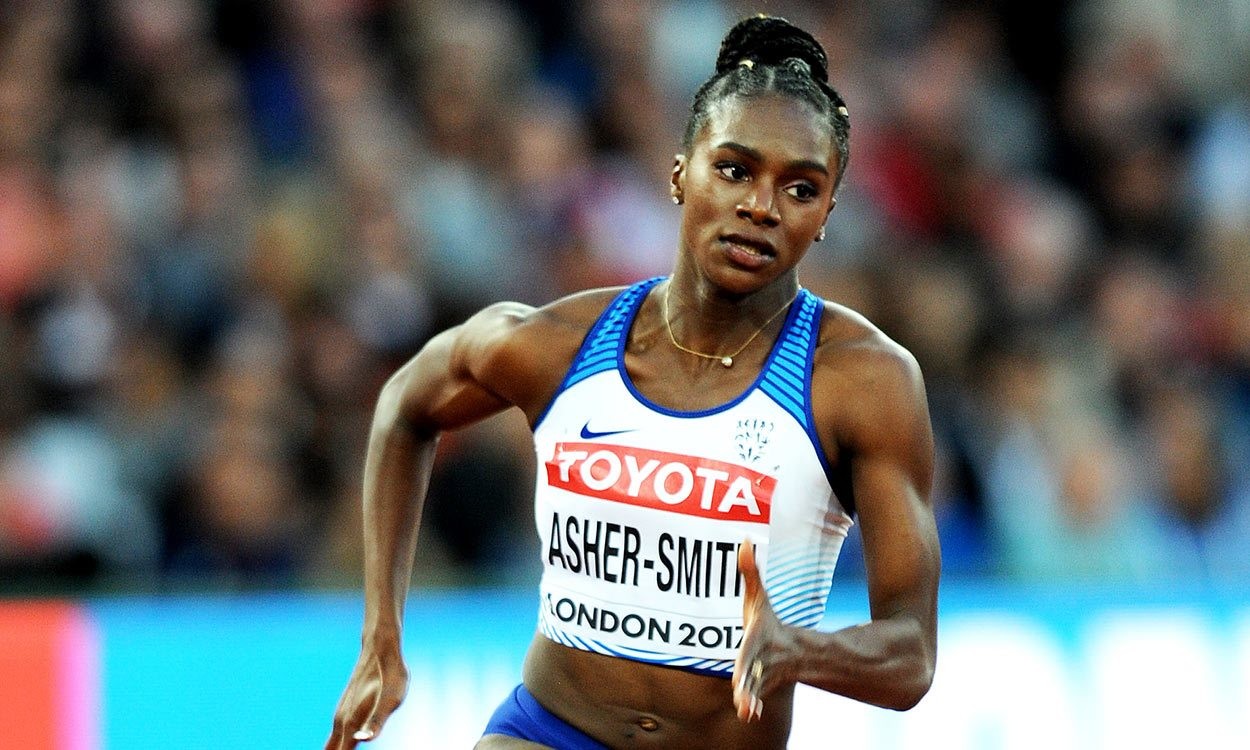
The 25-year-old would have perhaps wanted to go a touch faster, given the Olympics are scheduled to start in 10 weeks. But her dominance was clear with her closest challenger, Britain’s Beth Dobbin, more than half a second back at 23.06sec.
“It’s good to be back on track and it’s good to be back doing the 200m,” Asher-Smith said. “It has been a year-and-a-half since the world championships in Qatar and since I was doing my last 200m, so it’s nice to be back over that distance again.”
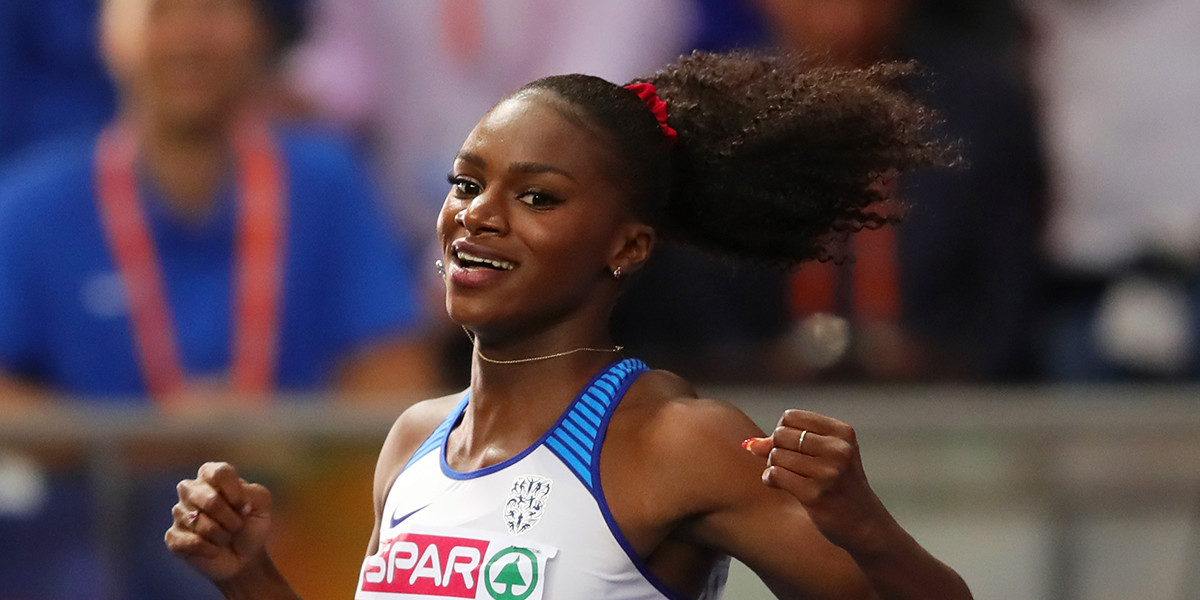
However she knows bigger tests await, starting in 10 days when she races in Gateshead against the reigning 200m Olympic champion, Elaine Thompson-Herah, the double Olympic 100m champion Shelly-Ann Fraser-Pryce, and the new American sensation Sha’Carri Richardson. “My next race is the Diamond League in Gateshead,” said Asher-Smith. “I am really excited to be running at home. It will be nice.”
Another Briton, Andrew Pozzi, opened his summer with victory in the 110m hurdles with 13.42sec. But the performance of the night came from the Italian Marcell Jacobs, who set the national record in the 100m with a storming 9.95sec run.
(05/19/2021) ⚡AMPby Sean Ingle
Tokyo 2020 Olympic Games
Fifty-six years after having organized the Olympic Games, the Japanese capital will be hosting a Summer edition for the second time, originally scheduled from July 24 to August 9, 2020, the games were postponed due to coronavirus outbreak, the postponed Tokyo Olympics will be held from July 23 to August 8 in 2021, according to the International Olympic Committee decision. ...
more...The athletes' NN Running Team is organizing a global online mass run and Kipchoge, Bekele and Cheptegei are set to participate
Olympic marathon champion Eliud Kipchoge is set to take part in an online virtual mass run this weekend (22-23 May) along with some 30,000 members of the public who have signed up.
Organised by the Kenyan's Dutch-based NN Running Team, the event - dubbed MA RA TH ON - is being held for the second time. In 2020, some 106,000 registrations were accepted, with participants clocking a distance far enough to run around the world 28 times.
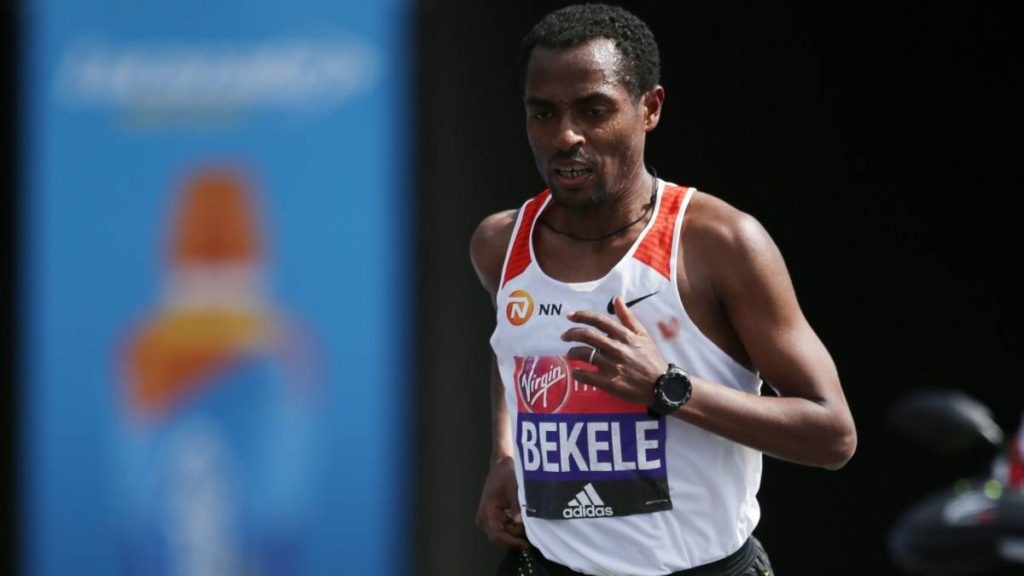
"I am really excited for this coming Saturday and Sunday as the world is running as one," Kipchoge said in quotes reported by the Kenyan Broadcasting Corporation.

"It’s not about running fast, it’s not about winning, but it’s all about participating."
The event sees teams of four around the world run just over 10.5 kilometers each, for a total of the marathon distance 42.195 km.
Each runner runs alone, and records their activity on the Strava application. Additionally, ten teams will each have an NN Running Team athlete compete alongside them.
Among the elite athletes competing are Kipchoge, his fellow Kenyan Geoffrey Kamworor, Ethiopia's Kenenisa Bekele, and 5 km and 10 km world record holder Joshua Cheptegei of Uganda.
"I am very happy that we organize this event again. It has given all the participating athletes a huge motivation in a difficult year," Kamworor said according to the KBC.
Kipchoge's last event was the NN Marathon in Enschede, Netherlands, in April, which he won in 2:04:30.
Kamworor finished second in the Istanbul Half Marathon in 59:38 in April; Bekele won a half marathon in London (1:00:22) at the start of March; while Cheptegei's last outing was a third place finish in a 1500m race at the Ugandan Athletics Federation Trials in April.
(05/19/2021) ⚡AMP2021 Marine Corps Marathon races will be held in person
Lace up those running shoes, because the Marine Corps Marathon is returning live and in-person.
The event’s races, hosted annually in D.C. and Arlington, will be held in-person from Oct. 29 to Oct. 31 after it ran as a virtual-only event last year.
Race Director Rick Nealis told WTOP that despite not holding a physical marathon in over a year, organizers have “adapted” in hosting smaller events with similar layouts. With that experience along with his military logistics background, Nealis said the event will go off without a problem while working together with local officials to ensure everyone’s safety.
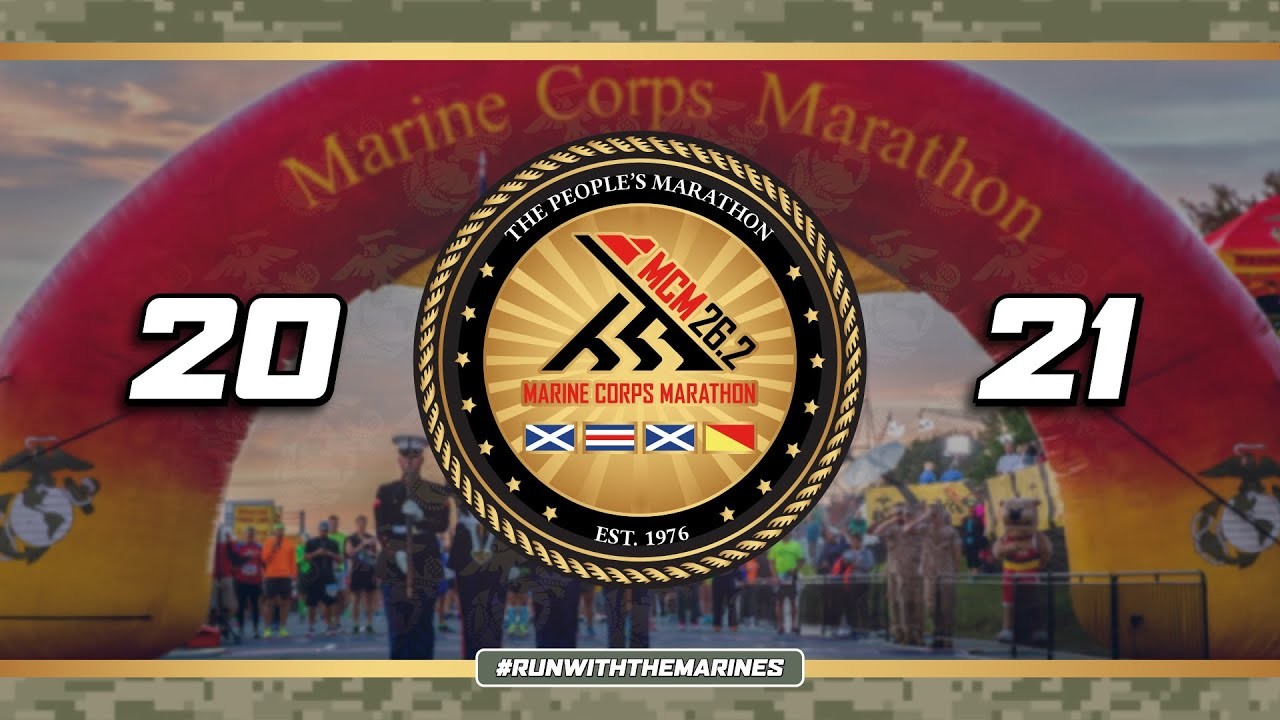
“You almost have to pinch yourself when you realize it will be two years since we’ve had that many runners come across the finish line, as we’ve transitioned through a real tough year in 2020,” said Neails.
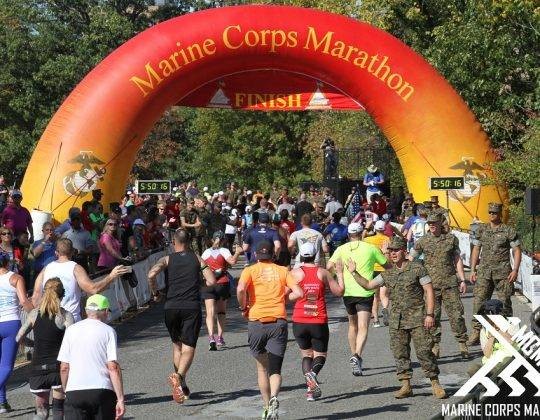
Health and safety measures will be in place adhering to local guidelines, including a reduction in the size of the field and dividing runners into scaled and socially-distanced start times. Nealis said he expects the race to have two-thirds of its usual field of runners, about 15,000 participants, because of restrictions.
The races usually generate about $100 million for the region. While that may not happen this time, they will bring some necessary aid to local businesses impacted by the pandemic.
“The fact that it’s Halloween just makes it even kind of more magical that it’s a treat,” said Nealis. “There’s no trick in what we’re doing. This is all about treats.”
Those who are currently registered for a virtual run or deferred from the 2020 events will have the first opportunity to switch to the live event. All three races have a virtual option. They can be run from Oct. 1 to Nov. 11.
Access to the virtual event is closed at this time. General entries will be made available to the public at noon on Wednesday, May 26.
Despite the allure of running in the event, Nealis said there may be “little trepidation” from some runners about coming back. For those who do participate this year, organizers hope the races run as smoothly and safely as possible.
(05/19/2021) ⚡AMPby Abigail Constantino
Marine Corps Marathon
Recognized for impeccable organization on a scenic course managed by the US Marines in Arlington, VA and the nation's capital, the Marine Corps Marathon is one of the largest marathons in the US and the world. Known as 'the best marathon for beginners,' the MCM is largest marathon in the world that doesn't offer prize money, earning its nickname, “The...
more...Kenya's 2017 World Under-18 400m hurdles silver medalist Moitalel Mpoke has qualified for the Tokyo Olympic Games.
The 20-year-old Mpoke clocked 48.89 seconds to win his 400m hurdles on Saturday during the South Eastern Conference Outdoor Championships at the E.B Cushing Stadium, Texas, United States.
Mpoke met the Olympic qualifying standard by 0.01 seconds to also improve his personal best within three weeks by 0.72 seconds.
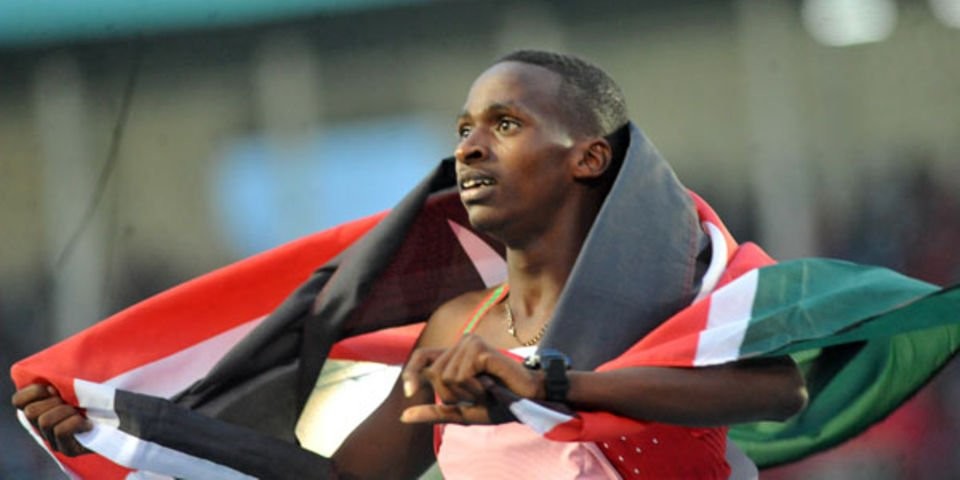
Following his win, Mpoke became the first athlete in the history of Texas University to run a sub 49 seconds in the 400m hurdles breaking a 34-year-old record of 49.05, which was previously held by Craig Calk.
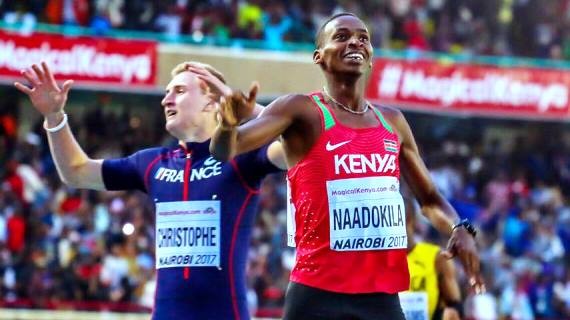
Mpoke becomes third athlete from Kenya to qualify for Tokyo Olympic Games in sprint events after Hellen Syombua and Emmanuel Korir all in 400m.
However, Korir, who is a specialist in 800m qualified for Tokyo Olympics when he doubled up in 400m and 800m at the 2019 Doha World Athletics Championships.
Surprisingly, Korir reached the semi-finals in 800m but stormed the final of the 400m to finish sixth. He run an Olympic qualifying standard time of 44.37 seconds in the semis.
Syombua qualified during the 2019 African Games trials running 51.09 seconds to also set a new 400m national record.
So far 51 Kenyan athletes have attained the Olympic qualifying standards ahead of the national trials set for June 17 to 19 at Kipchoge Keino Stadium, Eldoret.
However, the number includes eight athletes named in the final men and women's marathon team.
(05/18/2021) ⚡AMPTokyo 2020 Olympic Games
Fifty-six years after having organized the Olympic Games, the Japanese capital will be hosting a Summer edition for the second time, originally scheduled from July 24 to August 9, 2020, the games were postponed due to coronavirus outbreak, the postponed Tokyo Olympics will be held from July 23 to August 8 in 2021, according to the International Olympic Committee decision. ...
more...The Australian Olympic Committee (AOC) unveiled the official opening ceremony uniforms for the Australian Olympic team for Tokyo 2020 at Sydney's Wylie's Baths on Tuesday.
The uniforms, designed by Australian lifestyle fashion brand Sportscraft, include a blazer, shirt, semi-formal shorts, dress, and some accessories, while Australian sneaker brand Volley designed the footwear.
Nine athletes, from Olympic medallists to those making their Olympic debut in Tokyo, including dual Olympic medalist in canoe slalom Jess Fox, showcased the uniforms at the side of the ocean pool.
The design process was inspired by the electric lights, vibrant colors, and bustling atmosphere synonymous with Tokyo. In order to ensure the uniforms represented Australian culture, the design opted for a minimalist and timeless design, whilst creating impact by showcasing Australia's iconic green and gold colors. The angles used in the designs were inspired by Japan's famous Shibuya Crossing intersection, along with elements of the Southern Cross.
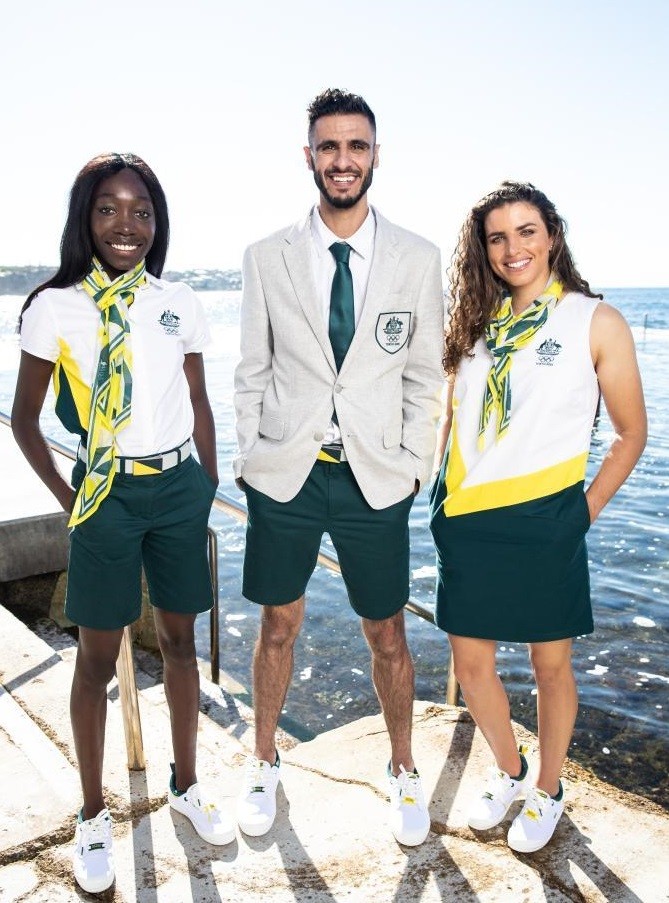
Chef de Mission of the Australian Olympic team Ian Chesterman said unveiling the uniform was a fantastic milestone for athletes on their journey to Tokyo.
"The design has a distinct Australian feel and I look forward to the Australian community seeing the official Australian Olympic uniforms for Tokyo 2020."
(05/18/2021) ⚡AMPby Xinhua News
Tokyo 2020 Olympic Games
Fifty-six years after having organized the Olympic Games, the Japanese capital will be hosting a Summer edition for the second time, originally scheduled from July 24 to August 9, 2020, the games were postponed due to coronavirus outbreak, the postponed Tokyo Olympics will be held from July 23 to August 8 in 2021, according to the International Olympic Committee decision. ...
more...Joshua Cheptegei will go for Komen's legendary 3000-Meter World Record on Wednesday
Last year, Uganda’s Joshua Cheptegei set world records in the 5,000 and 10,000 meters as part of an unforgettable 2020 season.
On Wednesday at the Golden Spike meet in Ostrava, he will try to go one better and become just the third man to hold the 3,000, 5,000, and 10,000 records simultaneously. Yes, that’s right. Cheptegei will attempt to break Daniel Komen‘s legendary 7:20.67 3,000-meter world record which has stood for nearly 25 years — since September 1, 1996.

Cheptegei´s camp is under no illusions as to the difficulty of the feat.
“It’s a big ask for Joshua to break [the 3,000-meter world record], we have to be realistic about that,” Cheptegei’s agent Jurrie van der Velden told LetsRun.com. “But we believe it’s possible with the training he’s done. It will be the toughest attempt for him thus far.”
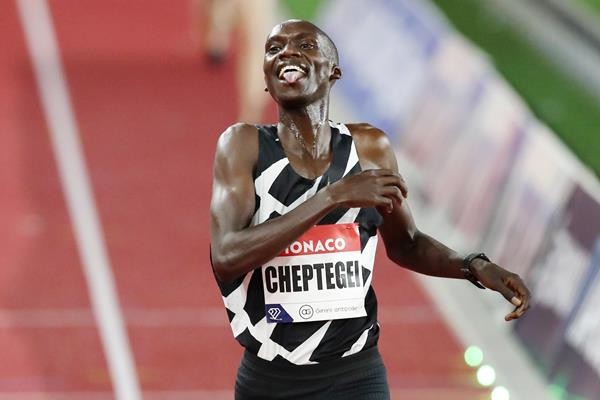
There are several reasons why. First is the 3,000-meter record itself is one of the longest-standing men’s world records and has scarcely been challenged since. Only Hicham El Guerrouj, who ran 7:23.09 in 1999, has come within four seconds of the mark. Even the great Kenenisa Bekele, previous holder of the 5,000 and 10,000 records, never ran faster than 7:25.79.
Second is Cheptegei’s skillset. While the World Athletics scoring tables say 7:20 is equivalent to 12:36 and 26:15 for 5,000 and 10,000 — both marks Cheptegei has bettered — it will be tougher for Cheptegei who, as a distance specialist, is more suited to the longer events. He will need a lot of speed to break 7:20.67 — it’s 3:56 mile pace for seven-and-a-half laps — and Cheptegei, whose 3,000 pb is 7:33.26, has yet to demonstrate the raw 1500 speed of Komen, who had a personal best of 3:29.46.
In Cheptegei’s defense, he has barely raced the 1500. His Tilastopaja profile lists just three races at the distance, the most recent of which was a pb of 3:37.36 on April 24 in Kampala (elevation: 3,937 feet). He will have to run close to that pace for twice the distance to break Komen’s record.
Cheptegei does have a few things working in his favor, however. He has an ace pacemaker in Australia’s Stewart McSweyn, who ran 3:30 and 7:28 last year, and will also benefit from the pacing light system that aided Cheptegei in his world records in Monaco and Valencia last year. The pace is scheduled for 2:26-2:27 per kilometer, with Dutchman Richard Douma serving as the first pacer through 1200 meters before giving way to McSweyn, who will attempt to go through 2000.
Cheptegei also has Nike’s superspikes, which have made Komen’s once-untouchable record seem more attainable. For eight years — from 2012 through 2019 — no man broke 7:28 for 3,000. In the last eight months, five men have done it, all in Nike spikes.
(05/18/2021) ⚡AMPby Jonathan Gault
Sebastian Coe says that Tokyo Olympics can be delivered safely and securely
Japan is currently battling a fourth wave of coronavirus infections and Tokyo, along with several other prefectures, remains under a state of emergency until the end of May.
Against that backdrop, a petition calling for the cancellation of the Tokyo Olympics has been submitted to organizers after garnering hundreds of thousands of signatures, and the CEO of leading Japanese e-commerce company Rakuten has called plans to host the Games a “suicide mission.”
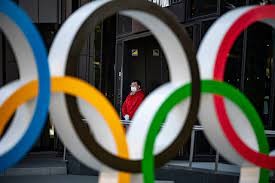
But Coe remains confident that the Olympics, already postponed by a year amid the pandemic, will be able to get underway as scheduled on July 23.
“Should we have the Games? Yes, we should. Can we have them safely and secure? I believe we can,” Coe, a four-time Olympic medalist and president of World Athletics since 2015, told CNN Sport.
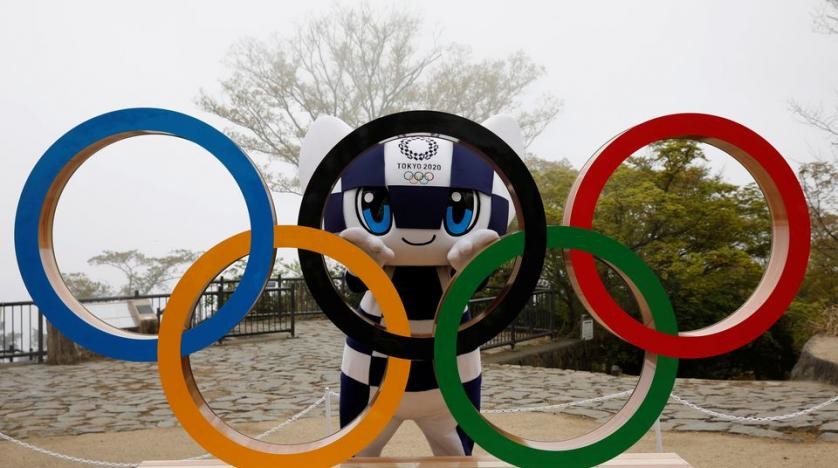
“I’m not cavalier about that. But I do think there are systems that are now tried and tested. We know so much more about these systems than we did a year ago.”
Organizers have outlined strict plans in the hope that the Games can be staged safely, including rigorous test and trace measures and restricted movements for athletes.
“For the athletes, it’s going to be a sterile experience,” added Coe.
“I think we have to accept that. Their day will almost certainly be village to venue, venue back to village and maybe training tracks in between.
“There is going to be no sightseeing, there are going to be no karaoke bars. I mean, the serious athletes would not be looking for that anyway, but it’s going to be tough.”
Coe, who was chairman of the London 2012 organizing committee, said he “can’t really speculate” on a scenario where the Games would be canceled — a decision that Japanese Prime Minister Yoshihide Suga has said rests with the International Olympic Committee.
He also highlighted the importance of hosting the Olympics for the thousands of athletes who qualify to compete in Tokyo.
“There’s a rather sobering statistic: 70% of competitors that are chasing an Olympic slot are only going to have one chance of this,” said Coe.
“To pull the plugs on an Olympic Games when football, tennis, rugby and so many other sports are now up and running — and some even with crowds — where cities are coming out of lockdown and are moving towards normalcy, I can see no good reason why you wouldn’t want to do everything you possibly can to make sure that you’re not discarding a generation of athletes who have spent over half their young lives in pursuit of this one moment which is real life for them and their families and their friends and the systems that have been in place to support them.”
With infection rates and vaccine rollouts varying around the world, there are fears that some countries may not be in a position to send athletes to Tokyo come July.
Organizers have said that vaccines are part of a “toolbox” of countermeasures for the Games to be held safely, but also said that they won’t be mandatory for athletes in order to compete.
“I do think that the bulk of the world will be at the Games, and I really hope that they are able to avail themselves if they have vaccines going in their communities,” said Coe.
“At the moment, the National Olympic Committees around the world are in dialog with their own governments in different ways.
“I’ve not been one that has actually favored mandating it, that athletes have to be vaccinated to be there, but I do encourage them if they are available to avail themselves of them.”
(05/18/2021) ⚡AMPby Gina Moralez
Tokyo 2020 Olympic Games
Fifty-six years after having organized the Olympic Games, the Japanese capital will be hosting a Summer edition for the second time, originally scheduled from July 24 to August 9, 2020, the games were postponed due to coronavirus outbreak, the postponed Tokyo Olympics will be held from July 23 to August 8 in 2021, according to the International Olympic Committee decision. ...
more...New York City Marathon Will Return in November
The race will have 33,000 entrants, instead of the usual 55,000. But staging it will satisfy runners desperate to run again.
The New York City Marathon, one of the biggest events staged in the city each year, will return in November with a reduced but still sizable field of runners, Gov. Andrew M. Cuomo announced on Monday.
The race will take place on its usual date, the first Sunday in November, with about 33,000 runners instead of the typical 55,000 leaving the starting line on the Verrazzano-Narrows Bridge in Staten Island. The 26.2-mile race through the five boroughs, months after the returns of teams and fans to baseball stadiums and indoor arenas, is expected to be a milestone in New York’s recovery from the coronavirus pandemic.
“It’s the North Star,” Ted Metellus, the race director, said of the marathon’s return. “It’s the thing that says we’re back.”
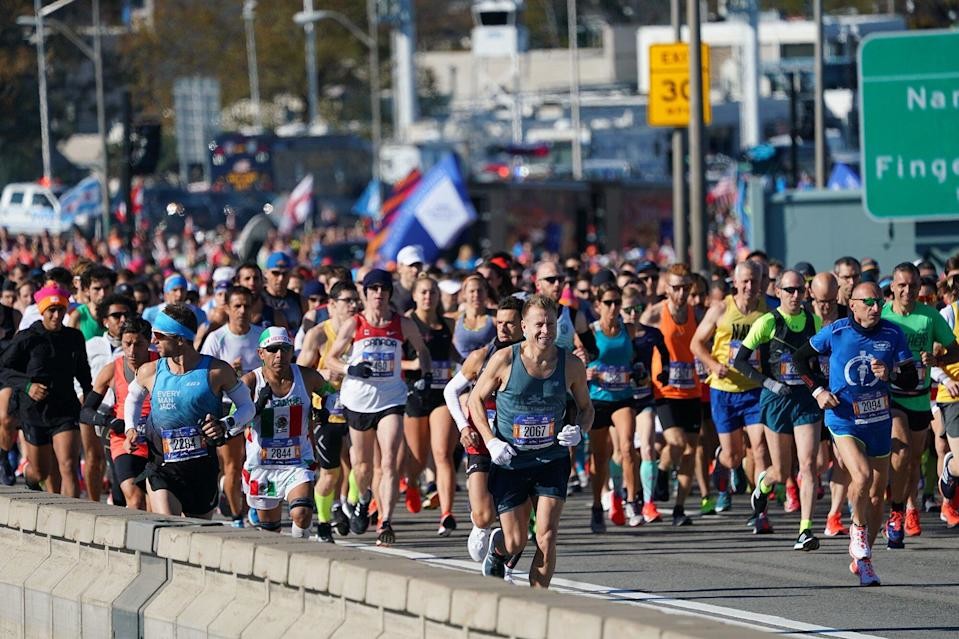
The announcement comes as New York continues to emerge from the kind of pandemic restrictions that led to the cancellation of last year’s marathon. With vaccinations rising and coronavirus cases decreasing, the city and state continue to end or ease rules on everything from dining in restaurants to attendance at ballparks and fitness centers.
For months, city officials and health experts have been in discussions with leaders of New York Road Runners, the organization that owns and operates the marathon, about the scale of this year’s race.
Officials agreed to reduce the size of the field this year to prevent overcrowding, though any plan to control crowds along the course — and any restrictions that might be imposed on them — remain unclear.
The smaller field will help to reduce the number of people on the ferries and buses that shuttle runners to the starting village at Fort Wadsworth in Staten Island and create more room for social distancing among participants once they arrive.
Officials plan to begin the race with a staggered start, sending runners onto the course a few at a time, every few seconds. The process, which will take several hours, is one that the Road Runners have been using in smaller races for several months.
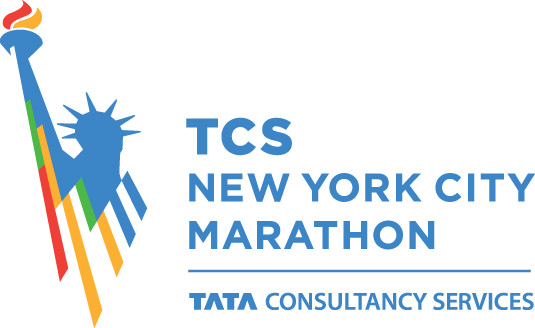
The change, however, will also lengthen the race day, and require the city to close streets for more hours than usual.
To compete, runners will be required to test negative for the coronavirus in the days before the race or show proof of full vaccination, though organizers must still determine policies about when tests will take place, who will pay for them and the consequences for someone who tests positive. Runners will not be required to wear masks while on the course.
Those requirements may change, Metellus said, as organizers monitor changing guidance from the Centers for Disease Control and Prevention as well as state and local mandates.
“Those changes will dictate a lot of change we see in the event,” said Metellus, who predicted the guidance would continue to evolve until race day.
For now, the organization said it was re-evaluating just about anything that may cause crowding, including rethinking aid stations, which are usually set up on every mile of the course, and reimagining bag drop off and pick up. First aid will remain at every mile marker, but hydration stations may be more spaced out, with volunteers following various safety guidelines. And while runners will still be able to drop off a bag of their belongings, they will not be able to bring their bags to the start.
A field of more than 30,000 runners will provide plenty of room for everyone who had registered for the 2020 race before it was canceled or who opted to defer to 2021. (About 54 percent of the 30,000 early registrants for the 2020 race opted to run the 2021 race.)
ImageVolunteers handing out water in 2019. Organizers expect monitoring guidance from health officials as they plan everything from aid and hydration stations to the size of the field.
Volunteers handing out water in 2019. Organizers expect monitoring guidance from health officials as they plan everything from aid and hydration stations to the size of the field.Credit...Sarah Blesener for The New York Times
The organization is still figuring out how to fill all the spots in the race, but it has decided not to hold a new drawing. Other avenues of entry into the race will include runners who complete and volunteer for a specified number of New York Road Runners events and those who have completed 15 or more New York City Marathons. Registration for those who qualify for a guaranteed entry will take place during the second week in June.
Organizers also plan to have a significant contingent of charity runners who pledge to raise about $3,000 for a chosen organization when they participate.
Many charities rely on the marathon to raise hundreds of thousands of dollars every year. But New York Road Runners also relies on charities for a significant portion of its revenue, since the charities pay about three times as much as an individual runner does to secure a place in the race. The individual registration fee for the 2020 race was $295.
Organizers expect interest in any open spots to be high. The Boston Marathon, scheduled for Oct. 11, was oversubscribed by more than 9,000 runners, all of whom had met the qualifying standard for their age groups.
Officials with New York Road Runners had predicted earlier in the spring that the 2021 race would take place without revealing the size and scope of the event. New York’s event will join an unusually crowded calendar of major marathons, a situation that will force top runners into difficult decisions about where and when to race.
Marathons in Boston, London, Los Angeles and Tokyo that usually take place in February, March and April have moved to the fall this year, joining races in Berlin, Chicago, New York and Washington. Elite runners usually do only one race in the spring and one in the fall. The Berlin Marathon (Sept. 26), the London Marathon (Oct. 3) and the Tokyo Marathon (Oct. 17) all have plans to take place before New York’s race in November.
Organizers can’t quite plan how New Yorkers will respond to their beloved marathon returning to all five boroughs. While there are significant modifications to the course experience, including limiting mass gathering locations, “it’s still New York City,” Metellus said. “The city will still live and breathe.”
(05/17/2021) ⚡AMPby Matthew Futterman and Talya Minsberg (NY Times)
Every runner should keep a training log, Logging your workouts can be a great way to gain confidence
Most runners have set training plans as they work through the season and toward specific goals and races. It can be easy to always look ahead at what’s on your schedule today and tomorrow, but sometimes it can be beneficial to look back on the training you’ve done and the work you’ve put in to get to a race. Keeping a training diary and logging details about your workouts can give you a boost of confidence whenever you’re lacking motivation. Here are a few tips for keeping a training log, and reasons why you should do it.
Remembering the good
Everyone knows how great it feels to really crush a workout. Unfortunately, runners tend to have short memories, and not long after a great run, you can forget all about your triumph from a few days before. Taking notes on how you felt and reminding yourself of the times you ran can give you a big shot of confidence when you re-read your diary before a big race.

Embracing the bad
Bad workouts suck, and while it would be nice to just forget about them as soon as they’re finished, they can help you down the road. If you trudged through a long run at a snail’s pace or bonked mid-workout but managed to push through, you can improve your mental game by looking back on those bad times. You went to the bottom of the well in training and survived, so you know you’re capable of doing it again on race day.
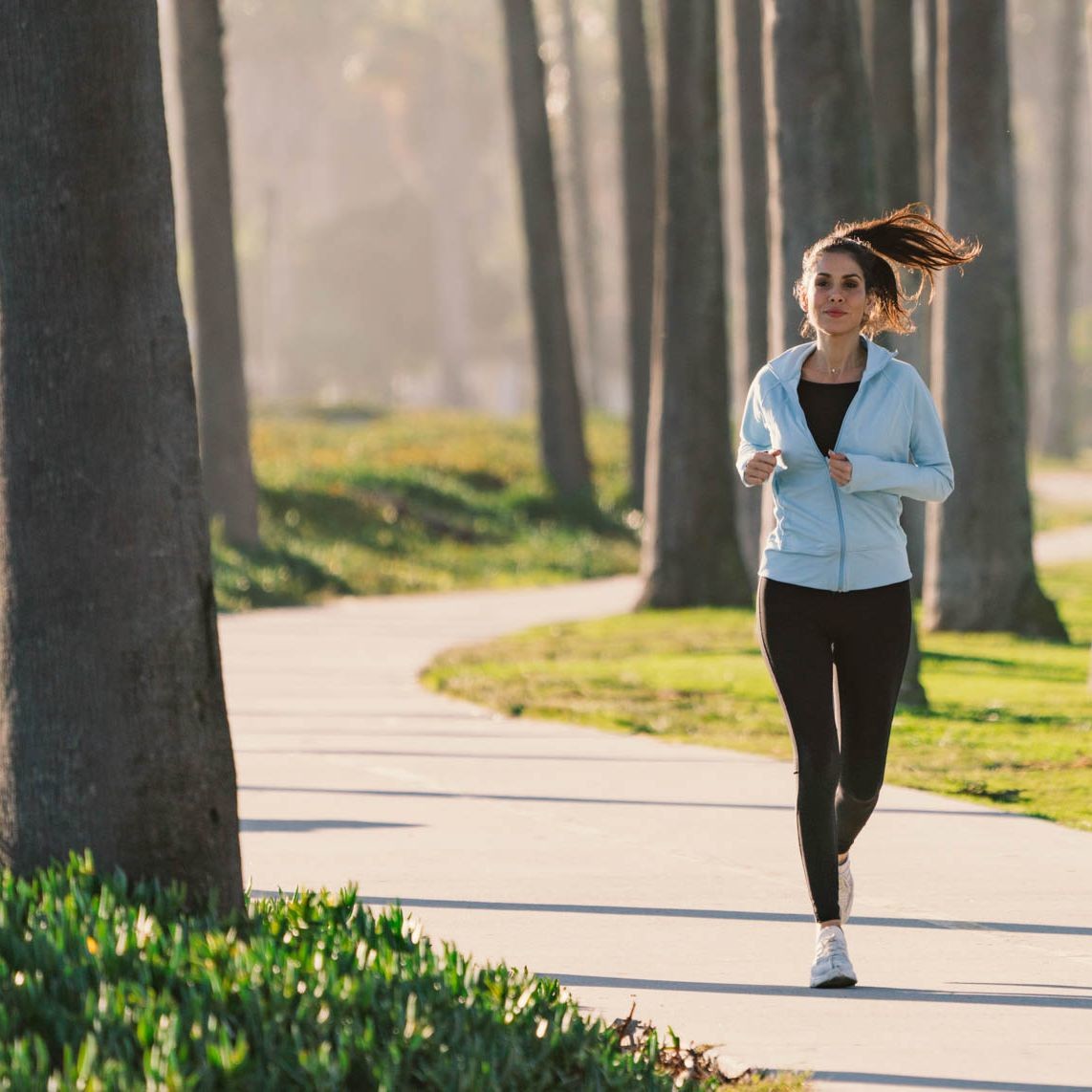
You should practise nutrition and hydration plans in training so you don’t have any mishaps on race day, so it’s a good idea to keep track of what works for you and what doesn’t . Then, when you’re preparing for your race, you can get a reminder from your past self and plan accordingly.
Entries can be short
You don’t have to write a long, in-depth entry for every workout, but be sure to include some details so that when you re-read each log, you’ll have an easier time remembering how it felt on the day. Details could include temperature/weather conditions, clothing choices, how you felt, who you ran into (or ran with, if applicable), you average pace, any troubling aches or pains you may have experienced and your splits.
Lots of options
You can record details of your training in workout tracking apps, you can write in a document on your computer or you can go the old-fashioned route and write handwritten notes. You can even make voice recordings after each workout and add them to one big audio file that you can listen to as you drive to and warm up for a big race. With so many options, there’s no reason not to keep a training diary.
(05/17/2021) ⚡AMPby Ben Snider-McGrath
IOC to plant forest in Africa to offset carbon emissions
The announcement is part of the International Olympic Committee's goal of hosting a future carbon-positive Games.
In January 2021, the International Olympic Committee (IOC) announced its plan to become climate positive by 2024, with the goal of reducing its carbon emissions by 45 per cent by 2030. On Wednesday, the organization revealed that it has committed to planting an “Olympic forest” to offset more than 100 per cent of the carbon emissions created by the Olympic Games.

The Olympic forest will be back by the United Nations as a part of the Great Green Wall initiative to restore the Sahel region in Africa, between the Saharan desert and the Sudanian savanna. According to Inside the Games, experts are expecting the population in that area to grow significantly in the coming years, and this forest will create biodiversity and improve food security in the region.

The IOC claims that both the upcoming Tokyo Olympics and the Beijing Olympics are on track to being carbon-neutral, and they are looking to host climate-positive Games in the future as a part of their Olympic Agenda 2020+5.
(05/17/2021) ⚡AMPby Brittany Hambleton
Tokyo 2020 Olympic Games
Fifty-six years after having organized the Olympic Games, the Japanese capital will be hosting a Summer edition for the second time, originally scheduled from July 24 to August 9, 2020, the games were postponed due to coronavirus outbreak, the postponed Tokyo Olympics will be held from July 23 to August 8 in 2021, according to the International Olympic Committee decision. ...
more...World record-holders will headline a stunning cast of athletic talent for the 60th edition of the Golden Spike in Ostrava
Paul Chelimo, Joshua Cheptegei, Genzebe Dibaba, Barbora Spotakova and Anita Wlodarczyk have all gone where no other athlete in history has, while with his indoor world record of 18.07m earlier this year, Hugues Fabrice Zango showed he has the potential to one day surpass Jonathan Edwards’ triple jump world record of 18.29m.
With 1500 fans allowed in the stadium, every set of eyes will be trained on Cheptegei when he takes to the track for the men’s 3000m, the final event on the programme. Edged by Duplantis for Male World Athlete of the Year in 2020, the Ugandan 24-year-old has been untouchable on the track since 2019, setting world records at 5000m and 10,000m.
Cheptegei’s current best for 3000m is 7:33.26, but the enlisting of Australia’s Stewart McSweyn – a 7:28 man – as pacemaker suggests the Ugandan is ready to take a massive chunk off that. If conditions are favourable, he looks primed to challenge Daniel Komen’s 3000m world record of 7:20.67, which has stood for 25 years. The world 10,000m champion sharpened his speed last month with a 3:37.36 1500m PB at altitude in Kampala. Olympic 5000m silver medallist Paul Chelimo is likely to be his closest pursuer.
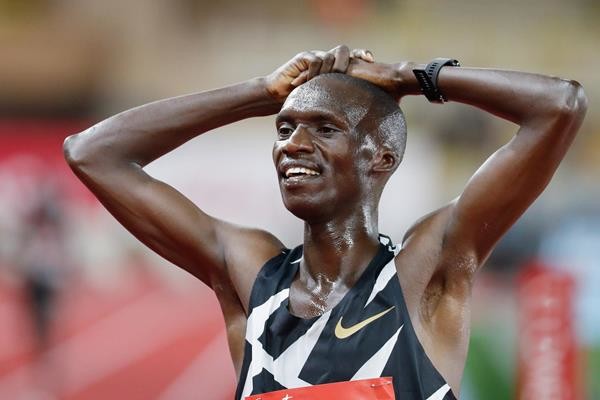
Elsewhere in the distance events, world half marathon champion Jacob Kiplimo will open his season over 10,000m where it seems the 20-year-old Ugandan’s personal best of 27:26.68 is due for serious revision. In the men’s 3000m steeplechase, 2019 Diamond League champion Getnet Wale of Ethiopia will be looking to improve on his best of 8:05.21, having clocked a blazing 7:24.98 for 3000m indoors back in February.
Poland’s world bronze medalist Marcin Lewandowski takes on Ugandan record-holder Ronald Musagala in the men's 1500m. European Indoor 800m champion Patryk Dobek will race the two-lap distance in Ostrava, and the Pole remains undecided between the 800m and the 400m hurdles for the Tokyo Olympics. He should get a good indicator of his medal chances at the longer distance on Wednesday as he takes on seasoned veterans Adam Kszczot and Amel Tuka.
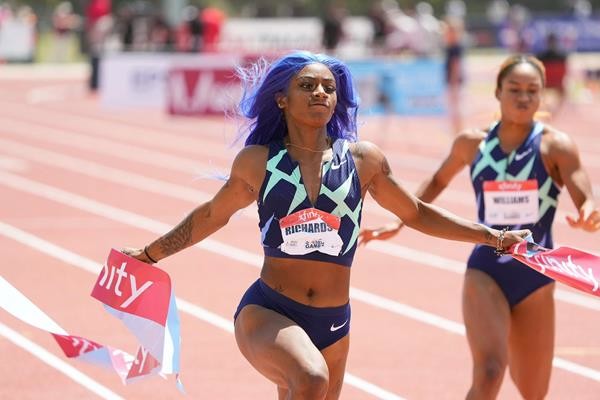
Genzebe Dibaba is the star attraction in the women’s 1500m, her first outing at the distance in which she holds the world record since August 2019. The Ethiopian made an eye-catching half marathon debut last December when clocking 1:05:18 in Valencia, but she failed to finish on her only outing since, an indoor 3000m in February. Uganda’s Winnie Nanyondo should be her biggest rival. In the women’s 800m, European indoor champion Keely Hodgkinson should be tough to beat.
Richardson takes on Schippers and Okagbare
In the sprints, the women’s 200m will take top billing, with fans eager to see what Sha’Carri Richardson can produce after her red-hot form in recent weeks. The 21-year-old US sprinter clocked wind-legal 100m times of 10.72, 10.74 and 10.77 already this season and she seems primed to dip below 22 seconds over 200m for the first time. Also in the field is two-time world champion Dafne Schippers and Nigeria’s Blessing Okagbare.
Olympic 100m bronze medallist Andre De Grasse will face 2004 Olympic champion Justin Gatlin in the men’s 100m and while both have edged below 10 seconds this year, they will have it all to do to beat 400m specialist Fred Kerley, who clocked 9.91 (2.0m/s) in Miami last month.
Kerley is also slated for the 200m, which takes place 80 minutes after the 100m. In the latter, Kenny Bednarek should prove tough to beat, having run 19.94 behind Noah Lyles at the USATF Golden Games recently.
In the men’s 400m, 2012 Olympic champion Kirani James will be looking to return to his best as the clock counts down towards the Tokyo Games. The Grenadian opened his season with a 44.88-second clocking in Phoenix, USA, last month, though Vernon Norwood is the quickest in the field this year with his 44.64.
Olympic bronze medallist Yasmani Copello headlines the men’s 400m hurdles, while Denmark’s Sara Slott Petersen is the quickest on paper in the women’s event.
(05/17/2021) ⚡AMPby World Athletics
Athing Mu continues breaking records
Athing Mu broke an American under-20, 400-meter record with a time of 49.84 to win the SEC title Saturday night at E.B. Cushing Stadium.
The Aggies claimed six event titles across the three-day meet that finished with the women’s team placing fourth in overall team points with 82 and the men’s team placing seventh with 67 points. Winners included Deborah Acquah in the long jump, Moitalel Mpoke in the 400-meter hurdles, Tyra Gittens in the heptathlon, Brandon Miller in the 800-meter, Mu in the 400-meter and the women’s 4x400-meter relay team. The Aggies will practice next week to prepare for the NCAA West Prelims at E.B. Cushing Stadium.
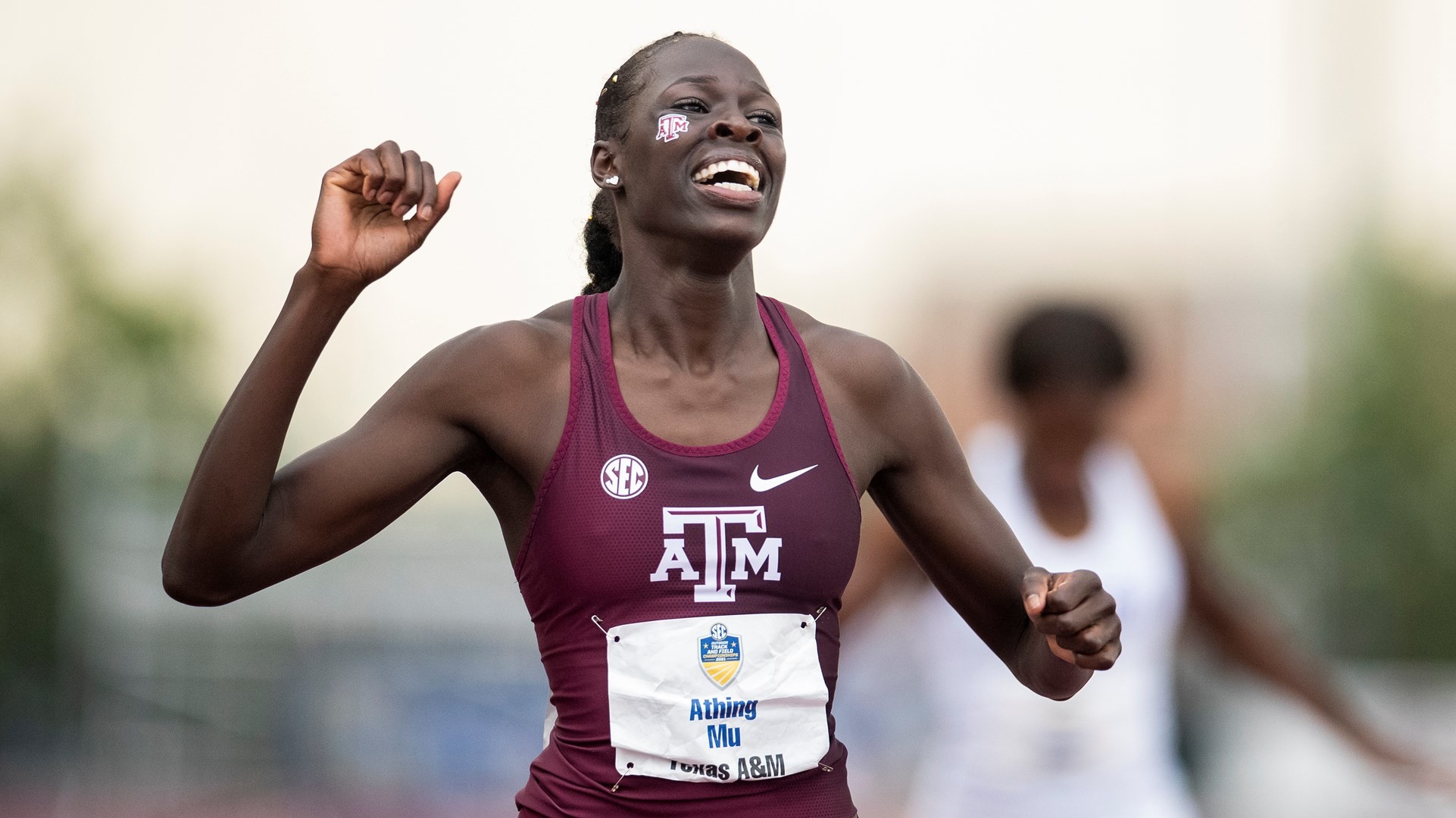
Mu won the women’s 400-meter in record-breaking fashion, more than a full second faster than all other runners to set an American under-20, SEC meet, facility and Texas A&M program record. She now is the third fastest collegian all-time and ranks fifth on the all-time world under-20 list. Mu usually runs the 800-meter but opted to run the 400-meter this week.
“There is no reason to overrun the 800-meter when I’ve already ran a fast time,” Athing Mu told 12thman.com. “I came in this weekend with the plan to run a secondary event and help continue to keep my legs moving without doing the 800-meter.”
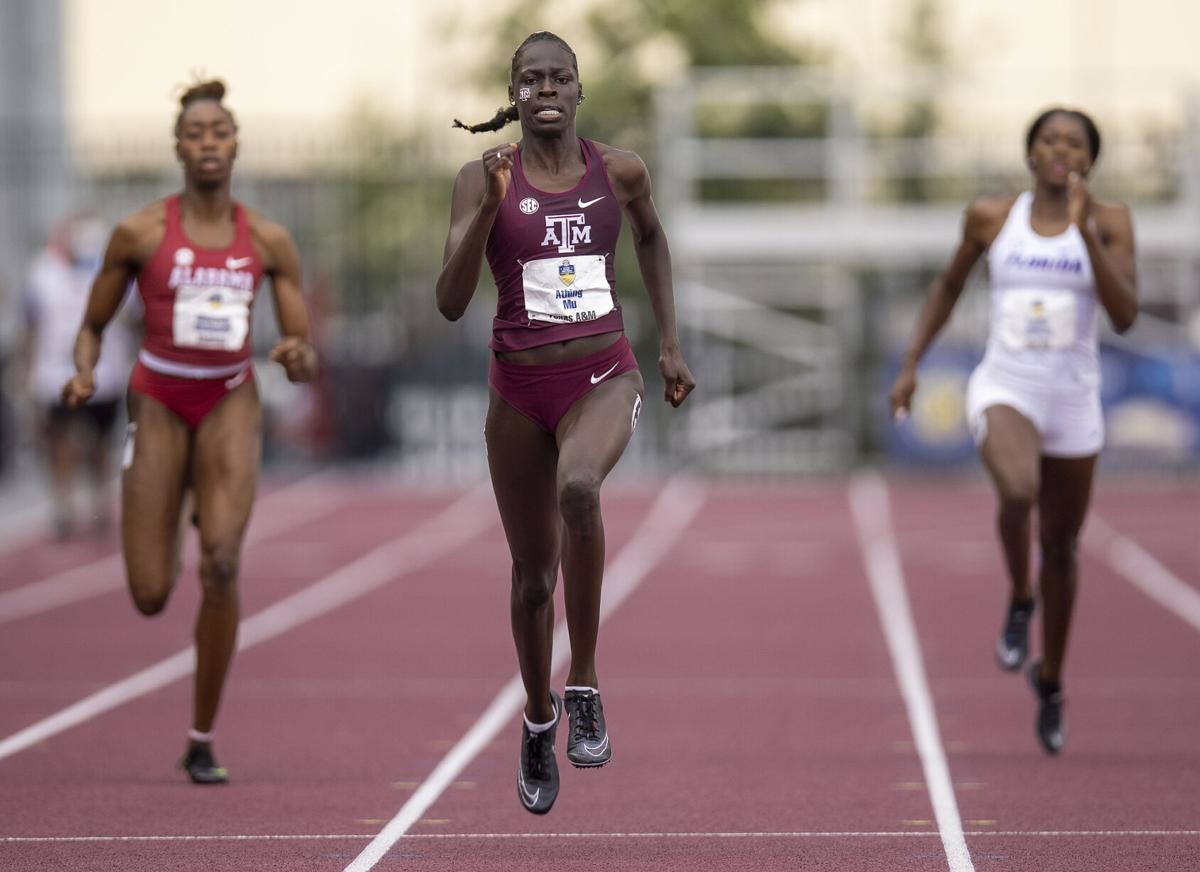
The time was the second American under-20 record Mu set this outdoor season as she broke the 800-meter record at 1:57.73 in April at the Michael Johnson Invitational. This time she was able to set it in front of a near-capacity crowd, a first for this outdoor season.
“When I was cheering on the men’s 800-meter, I thought, ‘Wow, it’s actually feeling like track and field again,’” Mu told 12thman.com.
Miller won the men’s 800-meter title with a personal best time of 1:45.95 to become the fourth fastest American on the under-20 all-time 800-meter list. This is Miller’s second SEC Championship this year as he won the 2021 SEC Indoor 800-meter Championship in February.
Mpoke became the first athlete in school history to run a sub-49 in the 400-meter hurdles with a collegiate-leading time of 48.89. The previous record was held by Craig Calk and stood for 34 years. Mpoke met the Olympic qualifying standard by .01 seconds.
“I don’t think there was a poor event in the whole championship and this meet will probably stick out as one of the best meets in the country this year,” A&M coach Pat Henry told 12thman.com.
Bryce Deadmon clocked a personal best time of 44.50 in the men’s 400-meter to make him the third best performer in school history and ninth best all-time. He also ran the anchor in the men’s 4x400-meter with a 43.82 split as he, Mpoke, Omajuwa Etiwe and Devin Dixon finished second at 3:01.73, good for the No. 5 time in the NCAA this season.
Acquah placed second in the triple jump at 14.13m (46-4.25) after claiming the women’s long jump SEC title at 6.80m (22-3 ¾). Gittens placed second in the women’s high jump at 1.93m (6-2.25) after winning the SEC heptathlon title. Lamara Distin finished third in the women’s high jump at 1.93m (6-2.25), but because she failed her first two attempts, she dropped to third overall. It was her first top-three finish in an SEC event.
(05/17/2021) ⚡AMPby Cade Draughon
Petition to cancel Tokyo 2020 Olympics submitted with 350,000 signatures
A petition calling for the cancellation of the Tokyo 2020 Olympic Games has been submitted to organisers, having reached 350,000 signatures in just nine days.
The submission of the petition comes amid rising COVID-19 cases in Japan, while concerns over the fate of the Games have grown due to Japan's low vaccination rate, the spread of new variants and the state of emergency in place in Tokyo and other prefectures.

"Stop Tokyo Olympics" campaign organiser and former Tokyo Governor candidate Kenji Utsunomiya said the Games, due to open on July 23, should only be held when Japan can welcome athletes and foreign visitors with little restriction.
"We are not in that situation and therefore the Games should be cancelled," Utsunomiya said.
"Precious medical resources would need to be diverted to the Olympics if it's held."
Utsunomiya, who is also a lawyer, finished second in last year's Tokyo gubernatorial election behind incumbent Yuriko Koike after winning over 800,000 votes.
The petition was also submitted to Tokyo Governor Koike.
Tokyo is to remain under a state of emergency until at least the end of the month due to rising COVID-19 cases.
Japan recorded 7,058 new cases of COVID-19 yesterday, close to the daily high of 7,855 from January 9.
Another 101 deaths related to the virus were also reported in the Olympic and Paralympic host country yesterday.
When asked about the petition, Koike said she would work towards a "safe and secure" Olympics.
"Though there is a global pandemic, it is important to hold safe and secure Tokyo 2020 Games," she said, according to Reuters.
High-profile Japanese athletes like Masters golf champion Hideki Matsuyama and women's tennis great Naomi Osaka have expressed their concerns with the Olympics going ahead during the COVID-19 pandemic.
To date, Japan has reported over 658,000 COVID-19 cases, resulting in the deaths of at least 11,165 people.
(05/16/2021) ⚡AMPEkiru and Gebrekidan break Italian all-comers’ records in Milan
Kenya’s Titus Ekiru and Ethiopia’s Hiwot Gebrekidan recorded world-leading times of 2:02:57 and 2:19:35 to break the Italian all-comers’ records at the Generali Milano Marathon, a World Athletics Label road race, on Sunday (16).
It was Ekiru’s second victory in Milan, having won in 2019 in 2:04:46, the previous Italian all-comers’ record. Gebrekidan, meanwhile, was competing in Italy for the first time and was rewarded with a four-minute PB.
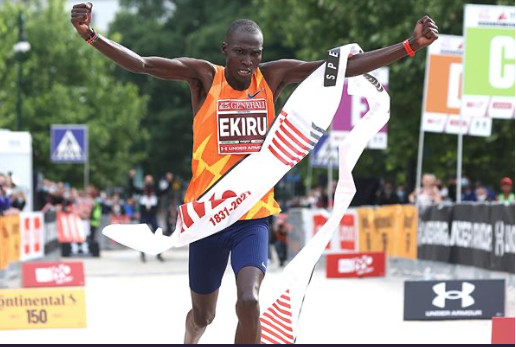
This year’s race, held in ideal 13C temperatures, was staged on a 7.5km circuit in front of the Castello Sforzesco in the heart of Milan.
In the men’s race, the leading pack of 10 athletes set a consistent pace in the first half, passing 5km in 14:47, 10km in 29:28 and 15km in 44:13. Leading South African runner Stephen Mokoka, acting as a pacemaker in Milan, reached the half-way mark in 1:01:48.
Ekiru started to push the pace after 30km, covering the next five-kilometre segment in 14:11 and the following one in 14:34. He maintained that pace to the end and, having covered the second half in 1:01:09, went on to cross the finish line in 2:02:57.
The 29-year-old now moves to fifth on the world all-time list, level with former world record-holder Dennis Kimetto.
The first five men finished inside the previous Italian all-comers’ record. Reuben Kipyego finished second in 2:03:55 ahead of Barnabas Kiptum (2:04:17), 2018 Milan Marathon winner Seifu Tura from Ethiopia (2:04:29), Leul Gebrselassie from Ethiopia (2:04:31), and Gabriel Gerald Geay, who set a Tanzanian record of 2:04:55.
“At 20 km I felt in very good shape and I tried to push the pace,” said Ekiru, the 2019 African Games half marathon champion. “I feel emotional. Maybe I can run 2:01 in the future.”
Unlike the men’s contest, the women’s race was a one-runner affair with Gebrekidan making a break in the early stages.
After covering the first 5km in 16:43 as part of a leading pack, the 26-year-old Ethiopian made a break and went through the half-way point inside 70 minutes with a lead of 20 seconds, hinting at a finishing time inside 2:20.
By the time she reached 30km in 1:38:28, Gebrekidan’s lead over Kenya’s Racheal Mutgaa had grown to 84 seconds. Gebrekidan’s pace dropped only slightly in the second half and she held on to win in 2:19:35, breaking the previous world-leading time and Italian all-comers’ record of2:20:08 set by Kenya’s Angela Tanui in Siena last month.
"I trained very well and I prepared for this race at the Istanbul Half Marathon," said Gebrekidan, whose previous PB of 2:23:50 was set at the 2019 Guangzhou Marathon. "I will celebrate this win with my family."
Mutgaa went on to finish second in 2:22:50 ahead of Bahrain’s Eunice Chumba (2:23:10). With the first seven women finishing inside 2:25, it was the deepest ever women’s marathon held in Italy.
(05/16/2021) ⚡AMPMilano Marathon
Passion is what allows us to go beyond our limits. It’s what makes us run when our heath is bursting in our chest, it’s whats makes our legs move even if they’re worn out. It’s passion against sacrifice, and the winner will be declared though hard training, hearth and concentration. Milano Marathon has been presented in the futuristic Generali Tower,...
more...Spanish UTWT race launches campaign to get trail running into the Olympic Games
The organizing team of the Penyagolosa Trails race in Castellón, Spain, has launched a campaign titled Make Trail Olympic in an attempt to get the International Olympic Committee (IOC) to add off-road running to the 2028 Summer Games in Los Angeles. Organizers of the race, which is a stop on the Ultra-Trail World Tour, have written a manifesto in which they include eight reasons why trail running deserves a spot in the Olympic program, and they have also created a petition that they hope will sway the IOC.
The Penyagolosa Trails team introduced this campaign on Thursday, three years to the day that they hosted the Trail World Championships on their home course in Spain. In their manifesto, the team notes that trail running not only deserves to be included in the Olympics, but that it meets the IOC’s requirements for a sport to be added to the Games.
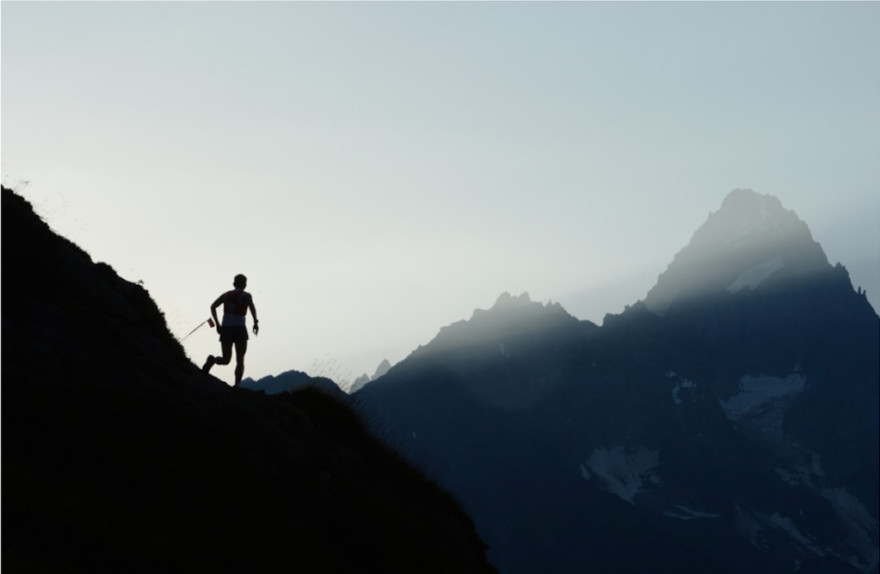
Trail running “is present in more than 75 countries and five continents,” the manifesto reads, adding that the sport has an established world championship system, which as another important note for the IOC. They add that trail running represents the “core values” of the Olympics, which are “excellence, friendship and respect.”
On the more technical side of the Games, doping control is mentioned. “Trail running fights against doping through the global anti-doping system based on the intrinsic value of sport, which is often referred as ‘sportsmanship,'” the manifesto says. “Anti-doping programmes are designed to protect the health of athletes and provide them with the opportunity to pursue excellence without the use of prohibited substances or methods.”
One of the most important parts of the manifesto (and perhaps the point that would have the most impact on the IOC if they view this petition) quickly dives into the popularity of the sport. As the authors explain, there are millions of trail runners worldwide, and the sport has seen tremendous growth in recent years. This growth isn’t slowing down, and trail running sees more and more new members each year, as well as new deals with major athletic brands.
he U.S. is a country where trail running is extremely popular, which is why the team from Penyagolosa Trails say the 2028 Games will be a perfect time to add the sport to the Olympic program. “The United States has a great history in organizing ultra-trail races,” the manifesto says, “and California hosts the world’s oldest 100-mile race, which in turn is one of the most prestigious: the Western States Endurance Run.”
It might be a long shot to get another running event into the Olympics, but the Penyagolosa Trails organizers make some valid points. It’s certainly fun to imagine an Olympic trail race, and if that one day becomes a reality, it will no doubt contribute to the already booming sport. To view the full manifesto and to sign the petition to have trail running added to the Olympics, click here.
(05/16/2021) ⚡AMPby Running Magazine
What Happens In Your Brain While You Run
Chemically, running does a lot for your brain-it may stimulate more brain tissue, and over time, more than just your body changes. (Read more about the powerful benefits of running on the brain here.) And beyond the physical, what happens to your brain when you run can improve your mental health, as well.
A Timeline of Your Brain When You Run
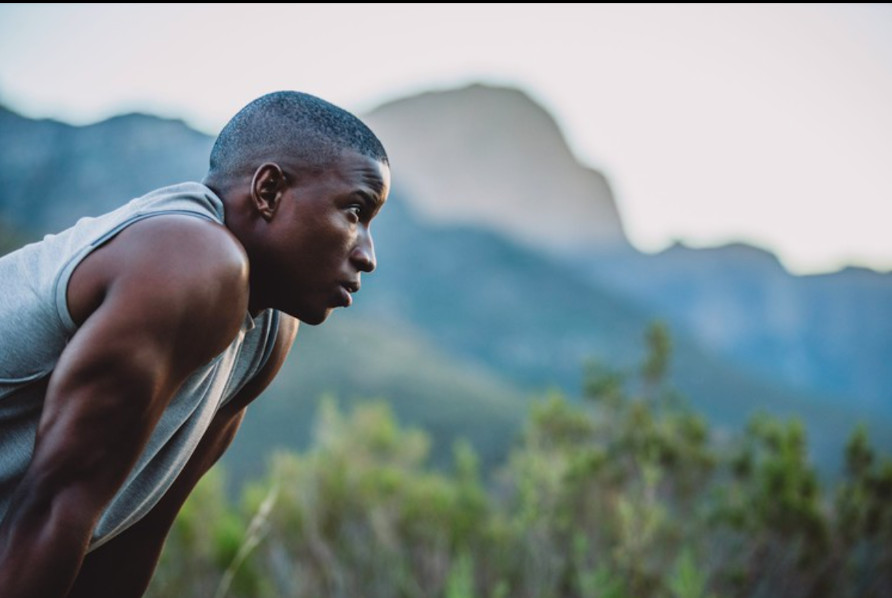
Have you ever wondered why running can make you feel so good? We've broken down exactly what's happening up there, stride by stride.
As you get ready to head out
Depending on how long since your last run, you have still have some feel-good chemicals hanging around. (The acute mood-boosting benefits of exercise might last a day or even two.)
If not, you have the memory of the high you've felt before, which can motivate you to get you out the door.
Once you begin running
Your muscles, organs, and other tissues-including liver and fat cells-release chemicals called cytokines.
Endocannabanoids flow, triggering a euphoric feeling.
So do endorphins, decreasing perception of pain.
Levels of neurotransmitters like serotonin, dopamine, and acetylcholine stabilize, enhancing mood, motivation, and memory.
When you form a running habit
Your levels of BDNF-brain derived neurotrophic factor, a compound that protects existing neurons and promotes the growth of new ones-increase.
You'll sprout new blood vessels to shuttle more oxygen-rich blood to the brain.
Your hippocampus-important in emotion, learning, and memory-grows.
If rodent research carries over to humans, this is due to neurogenesis, or the development of new neurons. (It's thought that MAP training, or combining meditation and aerobic exercise like running, works the same way-and can change your brain enough to fight off depression).
How Real Runners Benefit
The physiological effects running has on your brain can help you be more creative, resilient, and maybe even smarter. Here's how four women use running to boost their brain power.
"I'm working on a fantasy novel about running. When I get stuck with it, I go to the woods for a trail run, pretend to be my main character, and work through the plot point that's giving me trouble, all while listening to epic fantasy music. It's amazing how well it works!" -Julie Verone, author, Merrick, New York
"I use running as an escape from thinking or processing. Running allows me to just exist without having to face any of the potentially hard things in my life for just a moment. If anything, it helps me pause and clear my head so that I can come back to my emotions or whatever issue might be at hand from a much more grounded place." -Carmen Knowles, running coach, Indianapolis
"I use runs to practice for presentations at work! I look and sound crazy to anyone I pass but it helps me get my nervous energy out and I definitely notice that I am more confident and relaxed when delivering a presentation I've practiced while running. I'm also able to remember my talking points better." -Molly Bankuti, public accountant, Boston
"After a brief hospitalization for depression and anxiety, I discovered the benefits of running for mental health. It's now a part of my toolkit, which includes medication and therapy. I started a whole non-profit on the connection of running and mental health-and to this day we're the only non-profit and running community in the country to do so."
(05/16/2021) ⚡AMPby Trail Running
5 Mental Tricks To Get Trail Race Ready
Running a race can be a scary thing. Whether you're toeing the line for your first 10K, or an elite level marathoner trying to qualify for the Olympic Trials, knowing that you're about to push your body's limits is reasonable cause for anxiety at any level. How do you mentally prepare for the coming pain and effort of the race? Longer long runs and faster track workouts may increase your lung capacity and your leg strength, but how can your brain make the most out of all the work you've put in?
Here are five tips from top coaches and sport psychologists on how to mentally prepare to race your best when the gun goes off.

1. Boost your confidence through visualization.
"The human brain is strange in that instead of always looking to build up confidence, we seem to have a tendency to focus on the negative. Runners often can have 100 good workouts and one bad [workout] yet they will focus on that one bad one and let it erode their confidence for race day," says coach Greg McMillan, founder of McMillan Running. "Successful athletes develop strategies to boost self-confidence, defeat negative thoughts and keep the positive 'I can do it' attitude more often. Formulate a picture of success on race day. They then replay this scenario over and over across the training plan and even come up with how they will deal with other scenarios that may come up so that race day, they are prepared for anything and can have a successful race."
2. Find the optimal zone.
"When it comes to mental preparation before a race, I'm a firm believer that everyone benefits from identifying their optimal zone of arousal. Some people may need to be extremely relaxed before a race whereas others might need to be really pumped up," explains Dr. Jen Gapin Farrell, a Certified Consultant through the Association for Applied Sport Psychology. "You can find your optimal zone by reflecting back on previous performances and gaining awareness of what you were physically and mentally doing before races in which you ran well and those in which you didn't run so well."
If you need help relaxing to find that optimal zone, Farrell recommends techniques in deep breathing and progressive muscle relaxation.
Deep Breathing: "Inhale slowly through your nose, drawing air deep into your lungs. Hold your breath for about five seconds, then release it slowly. With each exhalation, imagine that you are getting rid of any stress or fatigue that might prevent you from performing your best. Focus only on each breath. Repeat the exercise five to 10 times. Repeat 'energy in' while inhaling, and 'fatigue out' while exhaling."
Progressive Muscle Relaxation: "Isolate and contract muscle groups, creating tension for 8 to 10 seconds, then relax the muscles and let the tension go. Concentrate on the feel of your muscles, specifically the contrast between tension and relaxation. In time, you will recognize tension in any specific muscle and be able to reduce it. Use words and phrases as you progress through the muscle groups like 'relax,' 'let go,' 'release,' 'stay calm,' and 'feeling fresh.' Commonly-used muscle groups are the legs, shoulders and neck, and face."
3. Accept negative thoughts and then say goodbye to them.
"The top athletes have an acceptance-commitment mindset, which accepts thoughts are just that. They are not reality," says John Coumbe-Lilley, a Certified Consultant of the Association for Applied Sport Psychology and Director of Undergraduate Studies & Clinical Assistant Professor of Kinesiology and Nutrition at The University of Illinois at Chicago. "A runner can have a negative mindset approaching a race, but their strategy is that they are aware and know their thoughts are harmless. As they approach competition they accept them and say goodbye to them, shifting their focus to the approach they need for the race."
4. Begin your mental race preparation routine early.
"For many athletes, a successful routine doesn't begin on race morning, but can encompass elements of travel, pre-race routine or the hours leading up to competition," says Drew Wartenburg, head coach of the Sacramento-based NorCal Distance Project. "Like most race-day behaviors, relaxation techniques should be practiced in advance. The sports psychologist that our team uses helps introduce a variety of techniques from breathing exercises to visualization and mental cues for our athletes to experiment with as they refine their personal routines."
5. Enjoy the moment.
"On race day, rather than stressing out about the end result or trying to impress others, focus on the process of racing your best and use the love of the event(s) and the joy of competition as your primary motivation," says Dr. Jim Afremow, a leading mental performance consultant and author of The Champion's Mind: How Great Athletes Think, Train, and Thrive. "Feel like you're smiling broadly on the inside because of how hard you've trained, how much you enjoy racing, and having this golden opportunity to discover how good you can be."
(05/16/2021) ⚡AMPby Trail RUNER Magazine
New study finds that exercise boosts immunity and makes vaccines more effective
The availability of vaccines has brought hope for the end of the pandemic. Yet COVID deaths and cases are still surging around the world. As we try to immunise the world, the most likely scenario for the next few years is that COVID-19 will be like other infectious diseases, such as flu, that we will need to continuously manage and protect ourselves against.
One of the best ways to do that is by being physically active.
Now, a new systematic review of evidence by me and my colleagues shows that regular physical activity strengthens the human immune system, reduces the risk of falling ill and dying from infectious disease by more than a third and significantly increases the effectiveness of vaccination campaigns.
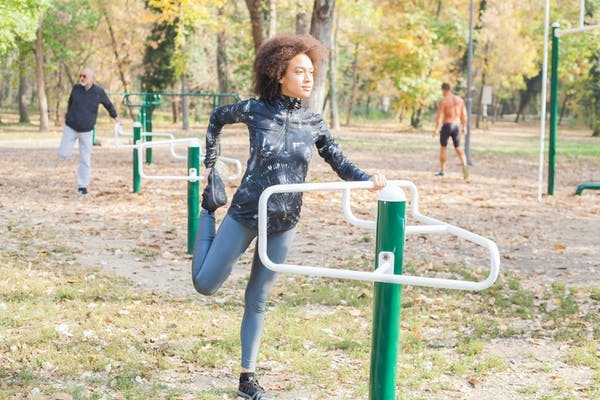
The study was conducted too early in the pandemic to include research into COVID-19 itself, but the findings are highly relevant to the current pandemic response.
We found consistent and compelling evidence across six studies involving more than a half million participants that meeting the recommended guidelines for physical activity – 30 minutes of activity, five days a week – reduces the risk of falling ill and dying of infectious diseases by 37%.
This adds to the results of another new study conducted in the United States specifically on COVID-19. The effect is at least as strong if not more so than the effect reported for other risk factors of COVID-19 such as age or having a pre-existing condition such as diabetes.
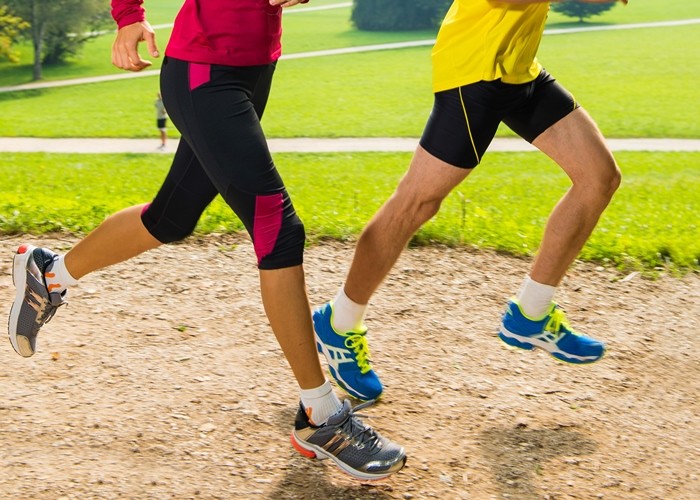
We also found reliable evidence that regular physical activity strengthens the human immune system. Across 35 independent randomised controlled trials – the gold standard for scientific evidence – regular physical activity resulted in elevated levels of the antibody immunoglobulin IgA. This antibody coats the mucosal membrane of our lungs and other parts of our body where viruses and bacteria can enter.
Regular physical activity also increases the number of CD4+ T cells, which are responsible for alerting the immune system of an attack and regulate its response.
Finally, in the randomised controlled trials we studied, vaccines appear more effective if they are administered after a programme of physical activity. A person who is active is 50% more likely to have a higher antibody count after the vaccine than somebody who is not active.
This can be a cost-effective and easy way of boosting vaccination campaigns. Considering the difficulties in supply chains, this could be a wise move to make every dose count.
How physical activity wards off disease
There are three mechanisms that make physical activity an effective medicine against infectious diseases.
First, it protects against risk factors of severe and fatal infection. Physically active people are less likely to develop obesity, diabetes, respiratory and cardiovascular conditions. Epidemiological studies have shown that COVID-19 and other respiratory infectious diseases are more severe for people who have these conditions.
Physical activity also reduces stress and chronic inflammation, in turn reducing the likelihood of adverse and fatal infections. Most COVID-19 and pneumonia fatalities have been as a result of uncontrolled inflammatory response.
Finally, our immune system is stronger if we are physically active.
Physical activity is undeniably an important way to make populations less vulnerable to infectious diseases and future epidemics and pandemics. It should be used more urgently and effectively in fighting the current COVID-19 outbreak, but also as a long term investment to prevent the devastating social and economic impacts this pandemic has had on society.
(05/15/2021) ⚡AMPby Sebastien Chastin
Young track star Keegan Smith wins 3,200m in 9:24
With everything else going on in the running world, we don’t often pay attention to what’s happening at the younger level of track and field, but every so often, an athlete comes along who can’t be ignored. Eighth-grader Keegan Smith is one of those runners, and after his 9:24.42 3,200 on Wednesday, the 14-year-old from Tennesee has caught the attention of runners everywhere.
Despite his young age, Smith has already had a string of impressive performances. According to the Knoxville news station, WVLT 8, he has won 23 national titles, and in February he won the Adidas Indoor Nationals 1-mile run for middle school Rising Stars in a record-breaking time of 4:34.65.
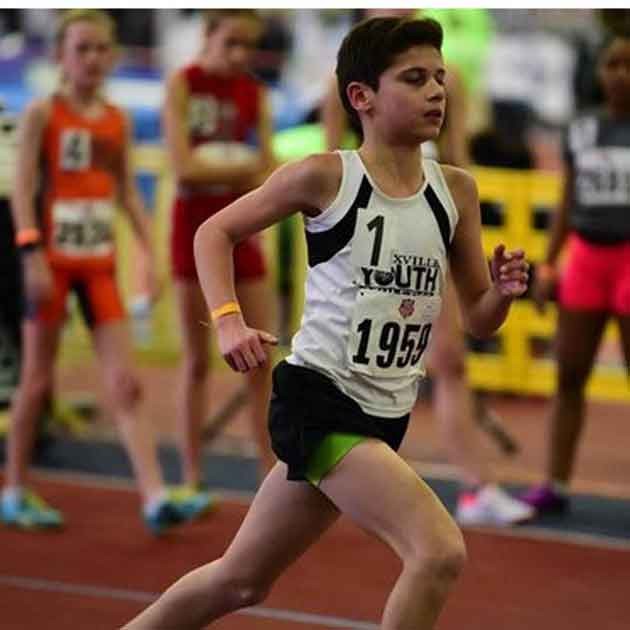
His coach, former U.S. Olympic steeplechaser Tony Cosey, says Smith is a special talent, but since he’s still growing, the main goal is to keep him injury-free. Still, he says “the sky’s the limit” for the young track star. Smith, for his part, is full of determination and dedication, and has lofty goals for his future.
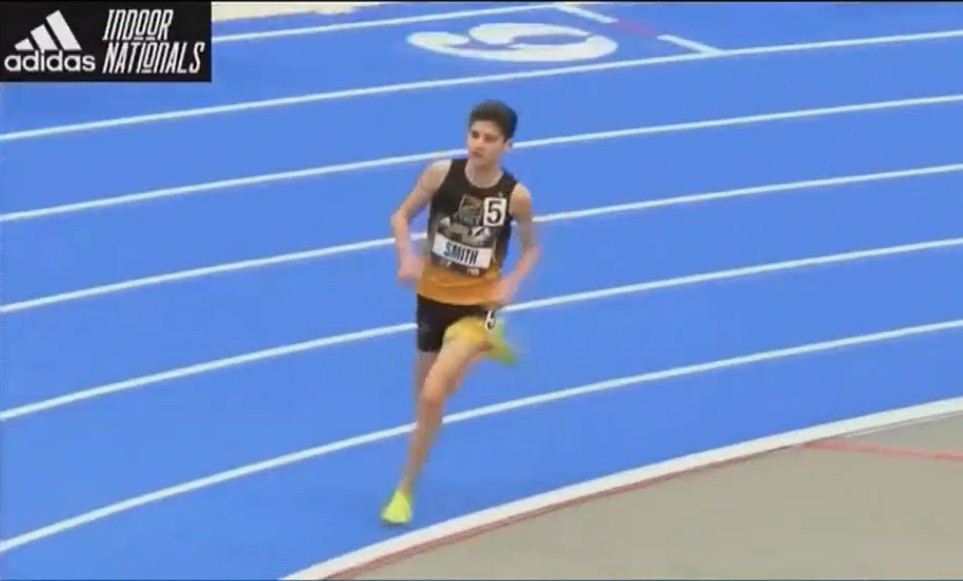
“If I can make it and keep going I want to run the Olympics 5K and 10K,” says Smith. “It’s my ultimate goal and that’s been my ultimate goal.”
As Smith heads to high school next year, track fans everywhere will certainly be watching to see what kind of results the young runner will produce when given the opportunity to race against stronger competition.
(05/15/2021) ⚡AMPby Brittany Hambleton
Michael Versteeg wins inaugural Cocodona 250-miler, Maggie Guterl still running in 7th overall
Ultrarunner Michael Versteeg of Prescott, Ariz., won the inaugural Cocodona 250-miler on Thursday morning, crossing the finish line in Flagstaff after 72 hours of racing. Versteeg finished ahead of Flagstaff local Peter Mortimer, who is still in the final miles of his run toward second place. Maggie Guterl is currently the top woman in the race, and at the time of writing, she completed 228 miles (366K) of what event organizers describe as a “250ish-mile footrace,” which works out to a total of about 400K. Guterl sits in seventh overall
Versteeg’s win
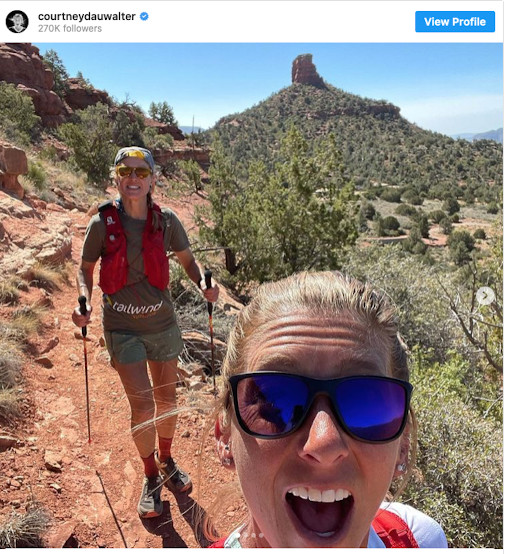
This is the inaugural running of the Cocodona 250, which was organized by the team at Aravaipa Running. The race started in Black Canyon City, about an hour north of Phoenix. From there, runners travelled north, passing through multiple towns (including Versteeg’s hometown of Prescott) before eventually making it to Flagstaff, 1,500m higher above sea level than where the race started. In total, the race features close to 13,000m of elevation gain, which is like running the height of one and a half Mount Everests.
The uphill battle, the heat of the desert and the sheer distance of the race didn’t stop Versteeg, who was at the front of the race throughout the 400K journey. This isn’t Versteeg’s first time stamping his name in the history books, as he won Aravaipa Running’s inaugural Whiskey Man Series in 2016 as well. On top of that, he has recorded many other ultramarathon race wins.
The chasers
Among the chase group (which is the rest of the Cocodona field, as Versteeg is the only finisher so far) is Guterl, who is in seventh place and currently being paced to the finish by fellow American ultrarunning star Courtney Dauwalter. Guterl and Dauwalter know each other well, and earlier this year, they both competed at the Barkley Marathons (although, like everyone else at this year’s race, they registered DNFs).
Like Dauwalter, Guterl is well known in the world of ultrarunning, and she has several big race wins to her name, including Big’s Backyard Ultra in 2019. Now, Guterl is looking to add another win to her resume, and with a 16K lead on the second-place woman Jessi Morton-Langehaug, the Cocodona crown is hers to lose.
Also racing this week was Gene Dykes, a 73-year-old runner from Pennsylvania who owns multiple age group records, including the American 100-mile and 24-hour bests (21:06:07 and 179.98K). Unfortunately, Dykes didn’t make it to the finish line, and he (along with close to 60 other runners, so far) recorded a DNF.
The race is ongoing, and despite the many DNFs, there are still dozens of other runners on the course making their way to the finish. To track live results of the Cocodona 250, click here.
(05/15/2021) ⚡AMPby Running Magazine
Sara Hall, Eliud Kipchoge among runners chosen for Sports Illustrated's Fittest 50 honours
Sports Illustrated has released its Fittest 50 list, and as usual, multiple runners were included. The Fittest 50 is SI‘s attempt to list the fittest men and women in the world, looking at athletes from any and all sports. This year, nine runners were selected, with six of the 25 women and three of the 25 men coming from the track, trails or road. Here’s a breakdown of where each individual placed and why the SI panel (which included Dr. Michael Joyner of the Mayo Clinic) chose them.
The women
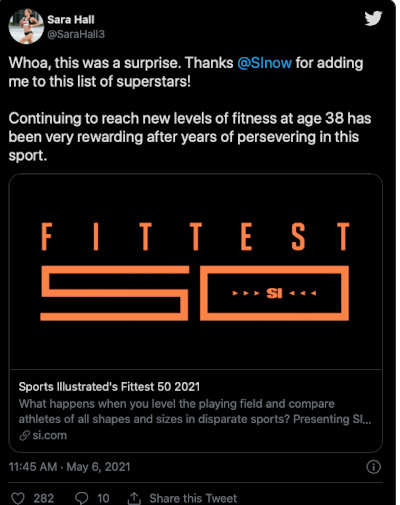
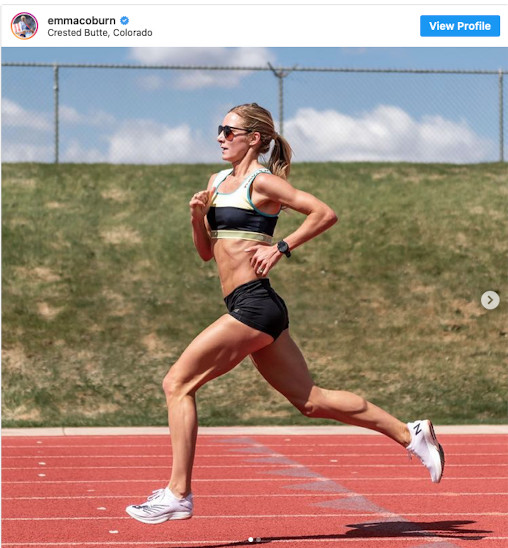
Running was the sport with the most women included in the top 25, and the six athletes chosen was double the three chosen from MMA, which was the sport with the next-most number of selections. American marathoner Sara Hall is #24, and with her performances in the past year, it comes as no surprise to see her on this list. The SI team notes how Hall overcame the disappointment of missing out on the Tokyo Olympics and ended up running two huge marathon PBs, first at the London Marathon (where she finished in second in 2:22:01) and then with her win at The Marathon Project, where her 2:20:32 finish was the second-fastest marathon in U.S. history.
Up next is Dalilah Muhammad at #16. SI refers to Muhammad as the “queen of the 400-metre hurdles,” a title she has owned since her gold medal in the event at the 2016 Olympics. Since then, she has broken the world record on multiple occasions (her current record stands at 52.16 seconds, a time that won her the gold medal at the 2019 world championships), and she is now a heavy favourite to win gold in Tokyo this summer.
American ultrarunner Courtney Dauwalter comes in at #14, and her remarkable result from Big’s Backyard Ultra in 2020 is listed as a big reason for that. Dauwalter won the American title at the event, running 455K. Just ahead of Dauwalter at #13 is American track and field star Tianna Bartoletta. Bartoletta is truly a track and field standout, as she has won Olympic and world medals in both sprints and jumps. In London in 2012, she won Olympic gold as part of the U.S. women’s 4 x 100m relay team. She and the squad defended that title in Rio four years later, and she added an individual gold medal in the long jump.
Emma Coburn is #10 on the list, coming in ahead of tennis star Serena Williams. SI lists Coburn’s multiple steeplechase medals, from her bronze in Rio to her gold and silver at the 2017 and 2019 world championships, and it’s noted that she has the potential to break the American 3K steeplechase record of 9:00.85 later this year. Finally, coming in at #6 on the list is Shaunae Miller-Uibo. The Bahamian sprinter is the defending 400m Olympic gold medallist, and she could also be a threat in the 200m in Tokyo.
The men
Unlike on the women’s list, running didn’t win for the most men selected in the top 25 (American football had four athletes and basketball had three), but three athletes still made the elite list. American ultrarunning sensation Jim Walmsley was included at #24, and he is extremely deserving of this honour. Firstly, as noted in the SI piece, he competed at the U.S. Olympic Marathon Trials in 2020, going out of his comfort zone and running 42.2K instead of his preferred ultra distances of 100K or 100 miles. He finished in 2:15:05, earning him 22nd place in his debut marathon. He then kicked off 2021 with an amazing 100K run in Arizona, where he finished in 6:09:26, breaking the American record and finishing just 12 seconds off the world best.
Next up is Eliud Kipchoge at #20. While Kipchoge had the worst marathon of his career at the London Marathon in October 2020, there’s no denying that he’s still one of the best road runners in the world. He’s the world record holder in the marathon and he is the only human to run under two hours in the event, making him a favourite to win gold in Tokyo this summer.
Finally, breaking into the top 10 is Noah Lyles at #9. Lyles is the reigning 200m world champion, and he owns a PB of 19.50 in the event. He’s a heavy favourite to take gold in Tokyo, and he might even compete in the 100m. Add all this together and he’s a clear choice for SI‘s Fittest 50 list.
(05/15/2021) ⚡AMPby Running Magazine
Meet the woman running 30 marathons in 30 days for the Victoria Hospitals Foundation
In 2020, Victoria’s Yana Hempler ran 12 marathons in 12 days to raise money for the Victoria Hospitals Foundation (VHF). Her fundraiser was a huge success, and she smashed her fundraising goal of $10,000, ultimately hitting $36,000. This year, Hempler decided to run another challenge, although she raised the bar to 30 marathons in 30 days with a goal of raising $500,000 for the VHF. She has flown through the challenge so far, and total donations for the event currently sit at more than $43,000.
Last year, Hempler organized her marathon challenge to support the healthcare workers in Victoria who were working tirelessly throughout the pandemic. She says she didn’t expect the pandemic to still be raging on this far into 2021, but since that’s the case, she decided to plan another big fundraiser.
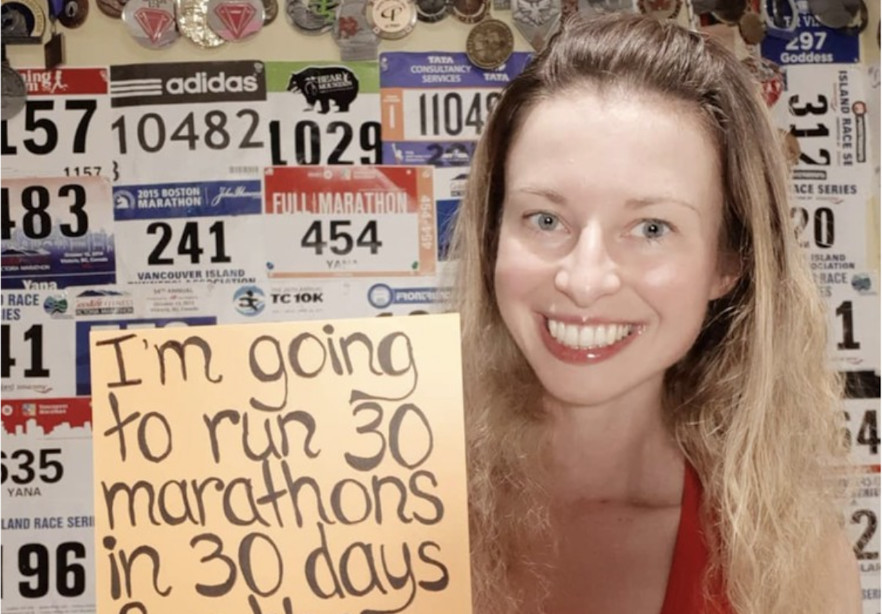
“I realized that I’m probably not going to travel anywhere this year for any in-person races,” Hempler says. “I’ve been running a fair bit of mileage, and I’ve continued to see how the healthcare heroes are dealing with surge in the pandemic, so I came up with this ‘Marathon May’ and thought I’d try to see if we can raise $500,000 this time.”
In 2020, Hempler originally planned to run 10 marathons in 10 days, but she told her followers that she would run an 11th day in a row if they helped her hit her $10,000 fundraising goal before her last marathon. She not only surpassed $10,000, but she raised well over $30,000, and so she decided that she should run a 12th marathon as well to show her appreciation for everyone who donated and supported her.
his year, Hempler has made a similar promise, and if the fundraising page hits $500,000 before the end of the 30 days, she’ll run another marathon on May 31. Hempler is pretty familiar with the marathon, and before last year’s challenge, she had run multiple races around the world, including the New York City, Boston and Berlin marathons. Despite having run many marathons, by the end of this challenge, she will have run more marathons this month than she did in her entire life before May began.
“So far it’s gone well,” Hempler says. “The first four days were the hardest. Day 2 I felt sick and exhausted. It got warm, too, and the heat really got to me.” Fortunately, she isn’t shooting to break any records with these runs, and she doesn’t care how long each one takes her. On average, she runs them between 4:45 and 5:15.
“The shuffle-run worked really well with those sore legs,” she says with a laugh. “If I’m feeling good in the last few days, I’ll kick it up a bit.” Although she may pick up the pace near the end of the month, she adds that she won’t be trying to run anywhere close to her official PB of 3:18.
As of Thursday, Hempler is approaching the halfway mark at 13 marathons into the challenge, and while she knows there will be some long days ahead of her, she’s looking forward to them, as each run not only helps her to raise money for the VHF, but may also inspire other people to get into the sport.
“When I was younger, I couldn’t even run a block,” she says. “I was one of those people who couldn’t run before and didn’t think I’d be able to run a 5K, let alone 30 marathons in 30 days. I want new runners to believe in themselves and give it a try.”
To follow along in Hempler’s journey, check out her Instagram page, and to support her fundraising efforts for the VHF, click here.
(05/15/2021) ⚡AMPby Running Magazine
Ultra-Trail du Mont-Blanc Partners with Ironman
Trail running grows up, and with it comes an uncertain future.
Did you feel the ground shake under the trail during your last run? You might have. Because this morning at 10 a.m. Paris time, Chamonix, France, was the epicenter of an earthquake that radiated outward and shook the trail-running world. The Ultra-Trail du Mont-Blanc, our sport’s most prestigious week-long series of ultramarathons, just announced that it is partnering with Ironman, the global triathlon brand. The partnership is comprehensive and international in scope. It’s a fitting moment for the world’s most iconic race, which turns 18 and enters adulthood this year.
The announcement was surprising-not-surprising. The not-surprising part? Trail running has reached critical mass and continues to grow, and for private-equity investors that means that the sport is officially on the radar. On top of the numbers, the trail-running demographic is a desirable one for investors.
“Healthy living is really on fire with investors right now. People have seen companies like Peleton do really well,” says David Lavallee, a former investment banker who lives in Chestnut Hill, Massachusetts, and now invests and operates endurance-related companies. Lavallee sees opportunity within the sport, too. “Trail running has been synonymous with ultras for the last 20 years. But there’s huge room for downward growth, for individuals who want to run a 10K trail race.” And as more people experience trail running? “That fuels the understanding that there’s something really big going on here,” he says. “And it has all been amplified by the pandemic.”
Media Mashup
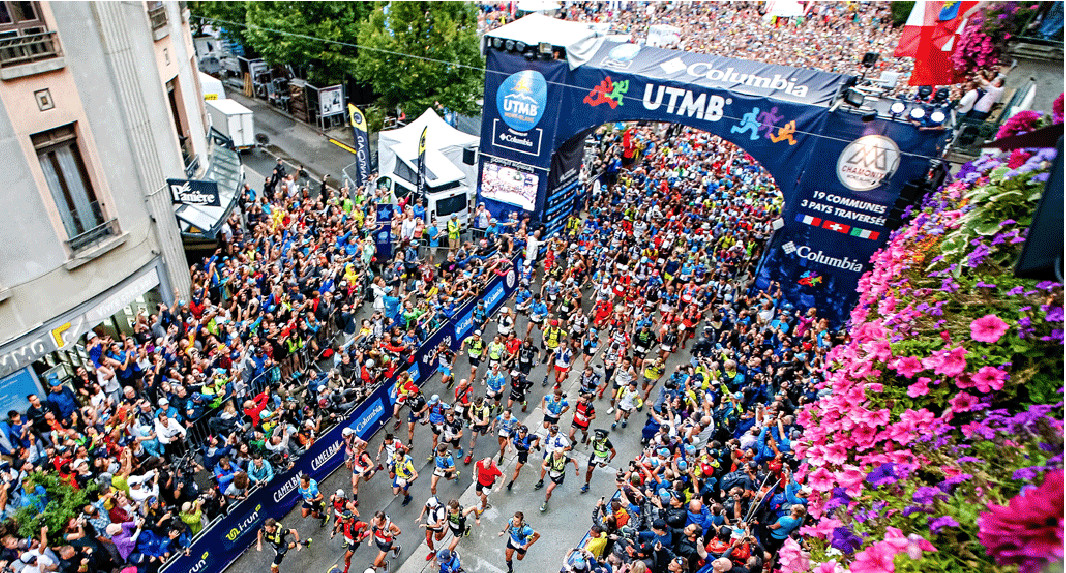
In the trail-running-media world, dollars are already flowing in. U.S. trail-running publishers have been snatched up by larger entities. The website irunfar.com has gone to Lola Digital Media, owner of a dozen other outdoors-oriented publishers, among them Gear Junkie. Trail Runner magazine was acquired last October by Pocket Outdoor Media, which subsequently bought Outside Magazine, and now operates under that iconic publisher’s brand name. Last September, the investment division of Nashville software company Atiba Labs purchased the website ultrasignup.com from its founder, Mark Gilligan.
In the case of the new UTMB-Ironman partnership, Ironman’s investment only goes so far. According to UTMB, their company has the majority ownership; Ironman has a minority stake, and there is no option for Ironman to take control of UTMB. Ironman presence at UTMB events will be low key, as well, with no Ironman branding at UTMB races.
“Ironman is a long-distance-triathlon brand,” said Andrew Messic, CEO of the Ironman Group, “and we intend to keep it that way.”
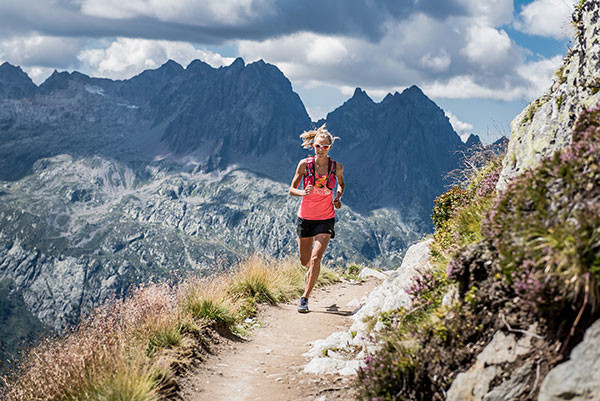
How It Will Work
The surprising part? It really did happen, and now the trail-running world has to think about what comes next. The announcement of the UTMB-Ironman partnership brings with it the potential for deep changes to trail racing, for example. UTMB is calling its new global race series the “UTMB World Series,” which breaks down into four categories of races: World Series Qualifiers, Events, Majors and Finals. Qualifier races, whose numbers will apparently be in the thousands, give “privileged access” to World Series Events and World Series Majors, both of which feature 50K, 100K and 100-mile distances. Each World Series race gives a participant one lottery entry (UTMB calls them “stones”) to the finals in Chamonix. The World Series Majors are the flagship races on each continent, with two entries to the Chamonix lottery. Between the Majors and Events categories, UTMB expects to have 30 to 40 races take part.
Everything points toward Chamonix and the World Series Finals—and the only way to get there will be through the new race series. To get to Chamonix, runners will also need to finish a race of comparable difficulty in one of the other UTMB race series.
Notably, no U.S. races were announced as part of the press release. “Trail running was born in the USA… [but] it’s not easy for a French company to develop something [there],” said UTMB Co-Founder and Co-Owner Michel Poletti. “That’s part of our decision to partner with Ironman, is that it will be easier for them to develop the sport in the U.S. than for us in France.” Poletti noted they are talking with “many other races in the world, including the United States.”
The current Ultra Trail World Tour, in which UTMB owns a controlling interest, will cease to exist in January 2022. Some of the races currently in that series will join the new UTMB World Series Majors. Meanwhile, the other UTMB races that take place in Chamonix, MCC (40K), TDS (145K) and PTL (300K), will continue, with race registration procedures that will be announced this fall, according to UTMB staff.
What Does It Mean For Trail Running
In the trail-running world, Ironman is not without its branding challenges. Corte Madera, California’s Jeri Howland, 65, has known both the trail-running and Ironman world for several decades. She’s ticked off 21 Ironmans, is a seven-time champion, and at age 46 set an age group world record. When it comes to trail running, she’s won her age group in over 30 races and twice has been female champion in the Bay Area’s legendary Quad Dipsea race. She spoke to Trail Runner broadly on the idea of Ironman possibly entering the trail running.
“Ironman would bring in a lot of hype,” says Howland. “They think it’s part of the attraction. I don’t think trail runners would like that.”
Culturally, at first glance, the two worlds do seem somewhat at odds. “Triathletes have a ‘look,’ dressed in the latest gear,” Howland says. “Runners are simpler and colors are muted. One is glossy and the other is matte.” It’s a polite tension that already exists in the trail running world—between European runners in their pricey “kits” and American runners, for whom duct tape and shirtless running are their own form of fashion statement.
Fashion aside, Howland thinks that trail running could ultimately benefit. “Once triathletes realize how great the return on investment is for them in ultrarunning, they may turn to the sport. It’s much simpler than taking a bike and wetsuit with you. And triathletes are always looking to expand their endurance capacity. They’d jump in.”
And, always, there is the profit motive, as both UTMB and Ironman are for-profit entities, and the latter sometimes seems intent on pushing the envelope on pricing boundaries. During the pandemic, Ironman offered deferments but refused to offer refunds. Many registered athletes were irate, and filed a class-action lawsuit, which was summarily dismissed by a US District Court Judge this past January. Even in more normal times, says Howland, “The cost of Ironmaning is off the charts.” Will that pricing come to UTMB? “That could be a huge turn-off,” says Howland. “Triathletes expect to spend a lot of money,” she says. “Trail runners don’t.” For his part, Poletti offered awareness of that concern, saying, simply, “We want to deliver high standards events at a fair price.”
One clear benefactor in the new partnership will be Chamonix, France. Already considered by many to be the world’s home of trail running, the town also hosts CMBM, one of the largest trail-running clubs in the world, the eight races of the Mont Blanc Marathon in late June, and the more under-the-radar Trail des Aiguilles Rouges in late September, three races whose marquee event is a highly technical 54K route. All of the new UTMB-Ironman races will point toward a climax at the end of August in Chamonix. An estimated 130,000 runners, family, friends and fans already converge on the Mont Blanc region at the end of each summer. It’s hard to imagine that number getting any smaller. And if the triathlon world shifts its attention to UTMB and starts trail running? Those numbers will keep growing, even with entrance caps on the races.
What Comes Next
Perhaps more interesting than the announcement itself, is what comes next. Will the trail-running culture embrace a “big tent” approach and accept corporations with deep pockets and little history in the sport, alongside diehard trail runners who toe the line each weekend in local races that finish with beers back at the trailhead? Is there room for both in trail running?
“This is essentially one of the big debates of the sport coming to a head: what is trail running all about?” says Hillary Gerardi. Originally from Vermont, Gerardi has set course records on technical trail races around the world. She is sponsored by the Utah-based company Black Diamond. Gerardi has lived in France for ten years, the last four in Chamonix. “We’ve been wrestling with that question for the past decade as the sport grows and evolves.This partnership between UTMB and Ironman is a big jump. It’s forcing people to decide where they stand on the issue.”
“This is an interesting arrangement and one that brings a lot of unknowns,” says Brian Metzler, the founding Editor of Trail Runner magazine, who now serves as a Contributing Editor and freelances for numerous media outlets. “Of course, some purists will criticize it as being a bad thing that’s contrary to the easy-going, community spirit that we all know and love.”
Metzler has completed four Ironman triathlons and has run two of UTMB’s races, CCC and OCC. He’s also run the UTMB course, and knows the Chamonix scene well, having been to nine editions of UTMB. And while he’s concerned that the UTMB qualifier events might become cost prohibitive for some runners, he is optimistic that the UTMB-Ironman relationship could yield positive results. “I think it could add structure, professionalism, exposure and prestige that could benefit elite athletes in the same way the Ironman World Championship in Kona has for triathletes.”
And for eager recreational runners? “It’s an inspiring incentive to travel to unique events with the hopes of getting to the UTMB in Chamonix.” And as Metzler is quick to point out, it was already hard to get to a starting line in Chamonix. “Let’s face it, UTMB was already impossible to get into just as getting into Kona was before qualifiers were developed 25 or 30 years ago.”
The dust is still in the air. When it all settles, it will be interesting to see what takes shape—and what comes next. Like every big tremblor, there will be aftershocks as well, some of which may go on for months if not years.
For her part, Jeri Howland finds commonalities between her trail running and triathlon worlds.
“Both triathletes and trail runners share a love of doing something where there is great uncertainty in the outcome,” she says. “And they share a love of meeting their tribe—people with the same passions.”
And, she says, there is that feeling of toeing the starting line, with miles to go before you can rest. It’s a sentiment felt since 2003 in Place du Triangle de l’Amitié in Chamonix—an addictive mix of tension, excitement, fear and uncertainty. Many trail runners are now feeling that same stew of emotions as they ponder the future of a sport they love. Now, the gun has gone off and our toes are across the start line. It’s time to settle in, rise to the occasion, and see what awaits us on the long miles ahead.
(05/15/2021) ⚡AMPby Trail Runner Magazine
Ed Ettinghausen Finished His 200th Race of 100 Miles or Longer, and is Sharing the Tips He's Learned
“The Jester” is just the second person to hit that milestone, and he’s still chasing bigger goals
There is a new member of the 200 club, and we’re not talking about marathons.

Ed “The Jester” Ettinghausen completed his 200th official race of 100 miles or longer on April, becoming only the second person in history to do so. If you’ve toed the line of a 100-plus miler or timed 24-hour-plus races in the last decade, there’s a good chance you saw Ettinghausen, a colorful—both literally and figuratively—character who runs every race in a red, blue, or green suit and a jester hat.
“That was my intro to the ultra scene, and I was not bit by the 100-mile bug,” Ettinghausen told Runner’s World. “It was a traumatic experience. It wasn’t for another year that I did another 100 at the same race. It wasn’t until I met someone else doing Badwater who I asked if they needed a crew. I had done that second race in a walking boot, and he said sure. In July 2010, as a crew member, I got bit by the bug.”
Ettinghausen’s running career has been filled with countless races with distances ranging from marathons to 324 miles. In 2011, he broke the record for most marathons in a 365-day period with 135—yes, you read that right—and in 2014, he ran the most 100-milers in a year—41, a record which was broken in 2019 by Walter Handloser. Doing some sloppy math, Ettinghausen has spent 35 percent of his weekends over nearly 11 years running 100-milers.
He hasn’t done as ambitious of efforts like that since 2014, though clearly he’s still moving a big clip. That was especially true for his 200th milestone race, which came in the middle of three 100-milers in a five-day span.
Ettinghausen started race number 199 in Las Vegas at the Jackpot Ultra Running Festival on Wednesday, April 21, jumped into a second race at the same event on Friday, and then hightailed it back home to California where he ran the Born to Run Ultramarathon on Saturday. The middle run was what earned him the record—and a cake celebrating the occasion at the finish line.
With 200 100-milers to his name, Ettinghausen has amassed plenty of wisdom about ultrarunning.
Adjust your mindset
There are peaks and valleys in any marathon or ultra race. The temptation to be on the couch instead of running farther always lingers. Ettinghausen has been there, but his strategy is to remove a keyword often heard in races.
“I’m never suffering in a 100-mile race because the discomfort is inevitable but suffering is optional,” he said. “I was with a young woman doing her first Badwater, and she had had some tough miles there. Bad blisters, and the heat got to her. She said, ‘I’m suffering.’ No, you’re not, you have discomfort. A person I had passed who was writhing in pain, his legs locked up, that’s suffering. You’re still walking. It’s painful, but you can keep going. Framing it as discomfort goes a long way over suffering.”
Find someone who might be struggling and help them get to the finish
Ettinghausen says helping others gives him a task and a focus that’s not related to the actual race. “In a way, if I’m helping them, I’m helping me. Plus, those shared experiences are the memories I have the most of.”
Slow down
Don’t go out in an ultra at marathon pace because that will catch up to you. Trust him, he’s seen it over a hundred times.
“You have no business going out at a 10-minute pace if that’s what you do marathons at,” Ettinghausen said. “The wheels fall off eventually. Run your own race. It’s a tortoise and the hare situation. I’ve won 55 100-milers and finished on the podium 121 times in a comical suit and jester hat. I caught people in many of those races going the same pace the whole race. I pace myself according to my fitness. If it’s warm, I slow down.”
Find your support
A bonus tip he wanted to add was having his wife’s support. She is his crew chief through races that have overlapped with her birthday, Mother’s Day, wedding anniversaries, and other occasions. Having her pick him up at races is his biggest asset, but he wanted to make it clear he’s not willing to share because he needs her.
What’s next for the Jester?
Ettinghausen is trying to catch the current world record holder for most 100-mile or longer races, Sandra Brown. The 72-year-old from England is at 207, and Ettinghausen hopes to pass that number at Badwater 135 in July, a race he has done every year the race has run since 2011.
But his ultimate goal is running 60 100-milers in a year starting in August 2022 when he turns 60 to recapture the record of most 100-milers run in a year. It’s a logistical nightmare and a costly enterprise when you consider the travel, lodging, race entries, fuel, and gear required for such an endeavor. For this, he’s looking for sponsors and also doing runs on top of others like he did for the trio in five days to prove he can still recover quickly and get back out there.
He also wants to continue to inspire other. No matter the race, he always goes back out and runs people to the finish, especially the person in last, or DFL (dead f---ing last). He knows what that means to people, and he knows the lasting impact it can have.
“It’s my way of paying it forward to this sport,” he said. “One time, I came in with a woman, and she was bummed about her first marathon not going as well as she wanted. I told she still finished and she should even try an ultra. This was maybe 10 years ago. Well, at the end of the Jackpot 72-hour race, a woman came up to me with a trophy in hand. She was the same woman and she had won her race and she told me it was because I told her to run an ultra years ago. Knowing I made a difference and helped someone is why I run.”
(05/15/2021) ⚡AMPby Runner’s World
Can probiotics prevent post-marathon sickness?
Recent research suggests taking a probiotic supplement can reduce your chances of getting post-race sniffles.
For years, scientists believed that long durations of high-intensity exercise (such as marathon running) suppressed the body’s immune system. Recently, researchers have been challenging this notion, arguing that exercise alone can’t be blamed for colds and flu among athletes. Still, many runners have gotten a case of the sniffles in the days following their big race, and new research shows that probiotics may provide a solution.
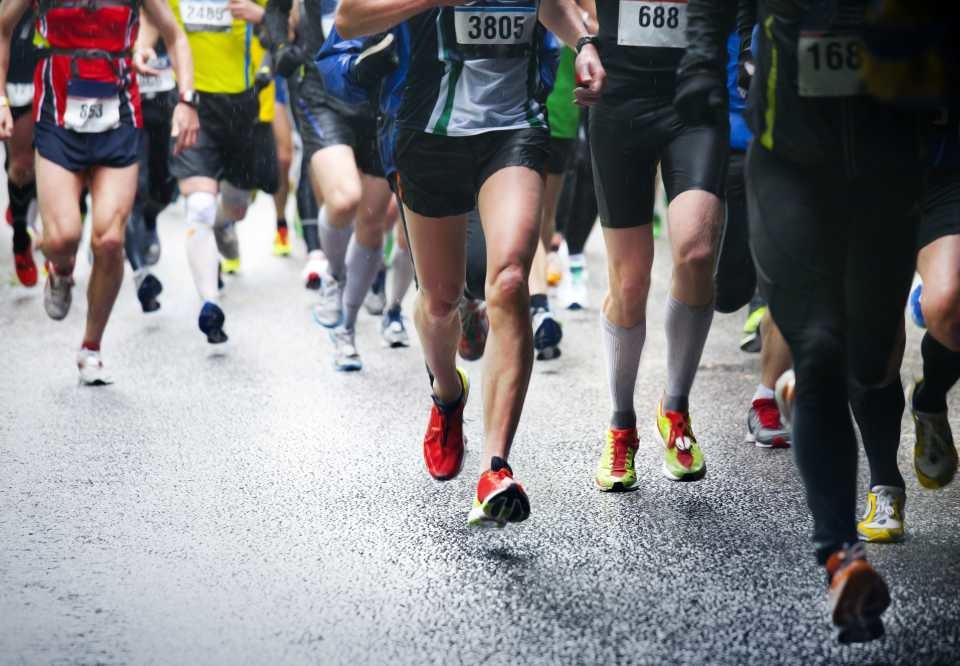
The authors of the study, which was published in the journal Nutrients, argue that strenuous exercise negatively impacts the immune and gastrointestinal systems.
These changes, they say, cause short-term immunodepression, increasing your risk for minor infections like colds. Recent research has shown that probiotics can help reduce this risk, so the researchers set out to determine if this is true.
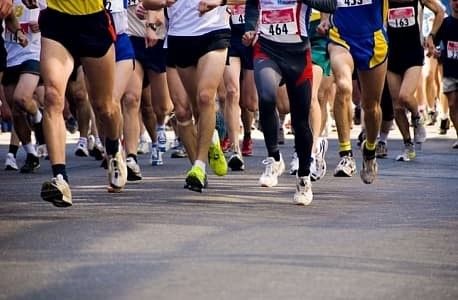
To do so, they gave 14 healthy male marathon runners either 5 billion CFU of a multi-strain probiotic or a placebo for 30 days leading up to their marathon. 24 hours before the race, the researchers measured the amount of cytokines (signalling proteins involved in the immune system) in the runners’ blood and measured their salivary parameters, glucose, and glutamine levels. They measured all of these levels again immediately after the race and again one hour later. The subjects also self-reported symptoms of upper-respiratory-tract infections (URTIs).
The results showed that URTI symptoms were significantly lower in the probiotic group compared to the placebo group, suggesting that a probiotic supplement could help mitigate cold and flu symptoms following a big event like a marathon.
While more research needs to be done to determine which probiotic strains are actually helping, if you find you’re constantly battling the sniffles during your training or following your race, talking to your doctor about taking a probiotic supplement might not be a bad idea. Quality and potency can vary widely among brands, so be sure to check with a medical or nutrition professional for advice before grabbing one off the shelf.
(05/14/2021) ⚡AMPby Brittany Hambleton
Suplements you should take regularly to boost your overall health
Have you or someone you know recently become a little more self-aware of your overall health, and are looking for a couple of ways to help make a positive change? Perhaps you have already spent years carefully dieting and exercising, but you are constantly looking for new ways to make your health routine more efficient? Maybe your doctor has recommended you take some supplements to aid in your overall health, and you are looking for a couple of solid places to start? If any of this sounds like you, then you should absolutely keep reading to learn some helpful information. This article will break down a couple of the supplements that you should take regularly in order to boost your overall health. Staying healthy does not need to be a difficult process, just follow some basic steps every day and you will be well on your way.
Vitamin C

One of the most common vitamins that you will see people taking consistently are vitamin C supplements. This is because it is widely marketed as a great way to benefit your overall immune system and well-being. Vitamin C is also commonly seen in many different types of fruits and vegetables. There are also many multivitamin supplements that have substantial amounts of vitamin C in them. If you are curious about some other ways to get vitamin C in your diet, then keep looking for some alternatives online. Be sure that you get the recommended amount of vitamin C in your daily diet.

Vitamin D
Another vitamin that is fairly common in the world of supplements is vitamin D. This essential building block for our body comes from the sun, but people are increasingly not getting enough sunlight every day. If you are someone who suffers from seasonal depression, then taking a vitamin D supplement at times of the year that are problematic can help to give you a mood boost when you need it the most. Sometimes vitamin D is also included in multivitamin supplements, so be sure to check yours before doubling down on your vitamin D intake. You can also get this nutrient from natural sources besides the sun, so make sure to keep an eye out for foods that are high in vitamin D.
Potassium
Are you the type of person who hits the gym with some regularity, and finds yourself frequently getting sore for a couple of days after a particularly hard workout? If this sounds like you, then there is a good chance you can benefit from more potassium in your diet. This nutrient which is naturally found in bananas, and other whole foods is incredibly important for helping our body to cope with the stress of an intense workout. There is a reason that many pro athletes and bodybuilders make sure to include bananas in their morning shake. If you want to train like the pros and recover like the pros, then you need to eat like the pros. You should have no problem finding a potassium supplement if you are finding that you still aren’t getting the right amount from your daily diet.
Omega-3
If you are looking to build a body that is strong and healthy, then making sure that you have enough omega-3 in your diet is absolutely essential. This essential nutrient helps to keep all the cells in your body healthy, and also aids with heart, lung, and kidney health. There are many sources of omega-3 that come from animal products, which can be a concern for some people with dietary restrictions. Fortunately, there are some Vegan omega 3 supplements that can help to accommodate people who try and avoid ingesting any kind of animal product. Do some research and experimenting and you will be able to find some supplement product that will work great for you.
Protein
In order to make the maximum gains after your workouts and boost your overall health, you need to make sure that your body has the right fuel to quickly rebuild the muscles that you are tearing down when exercising. Protein is one of the essential building blocks, and if you are lifting big to get big, then you will need big intakes of protein in your daily diet. There are many natural sources of protein, such as meats, nuts, beans, and other fruits and vegetables. If you need a quick top-up of protein after a workout, then you might want to consider a protein supplement. These supplements are used by lots of top performers in order to make sure they get the most benefit from the workouts they spend time on.
Iron
Some people find it helpful to include an iron supplement in their diet to help balance their body’s needs. People who suffer from anemia and also vegetarians and vegans can often benefit from taking an iron supplement. There is lots of iron in many natural foods too, such as spinach, so make sure to include both natural sources and supplements in order to maximize your health.
Echinacea
If you are looking to boost your immune system when you start feeling sick, then echinacea is a natural supplement you might want to consider. This amazing plant has been used in homeopathic and natural medicines for generations, and still sees lots of use in modern times. This plant is an herb that can also be used for other purposes, such as teas and even spice blends.
After exploring some of the different suggestions included in this article, the hope is that you have found some supplements that you should take regularly if you want to boost your overall health. There is only so far that working out and eating well can take you, although there is no replacement for either of these things in terms of staying healthy. Supplements, when used correctly, can be amazing for helping you to reach your fitness and health goals.
(05/14/2021) ⚡AMPby Colorado Runner
South Africa's Akani Simbine is focused on the fast road to Tokyo
Here’s the thing about Olympic year, something Akani Simbine knows will always be true.
“Everybody comes out fast,” he says. “Everybody runs fast, and we always talk about how everybody is just on form. Everyone is ready.”
The outdoor season may only be in its drive phase, but early evidence suggests that whoever is crowned men’s 100m champion in Tokyo on 1 August will need to ascend to a level he has never reached.
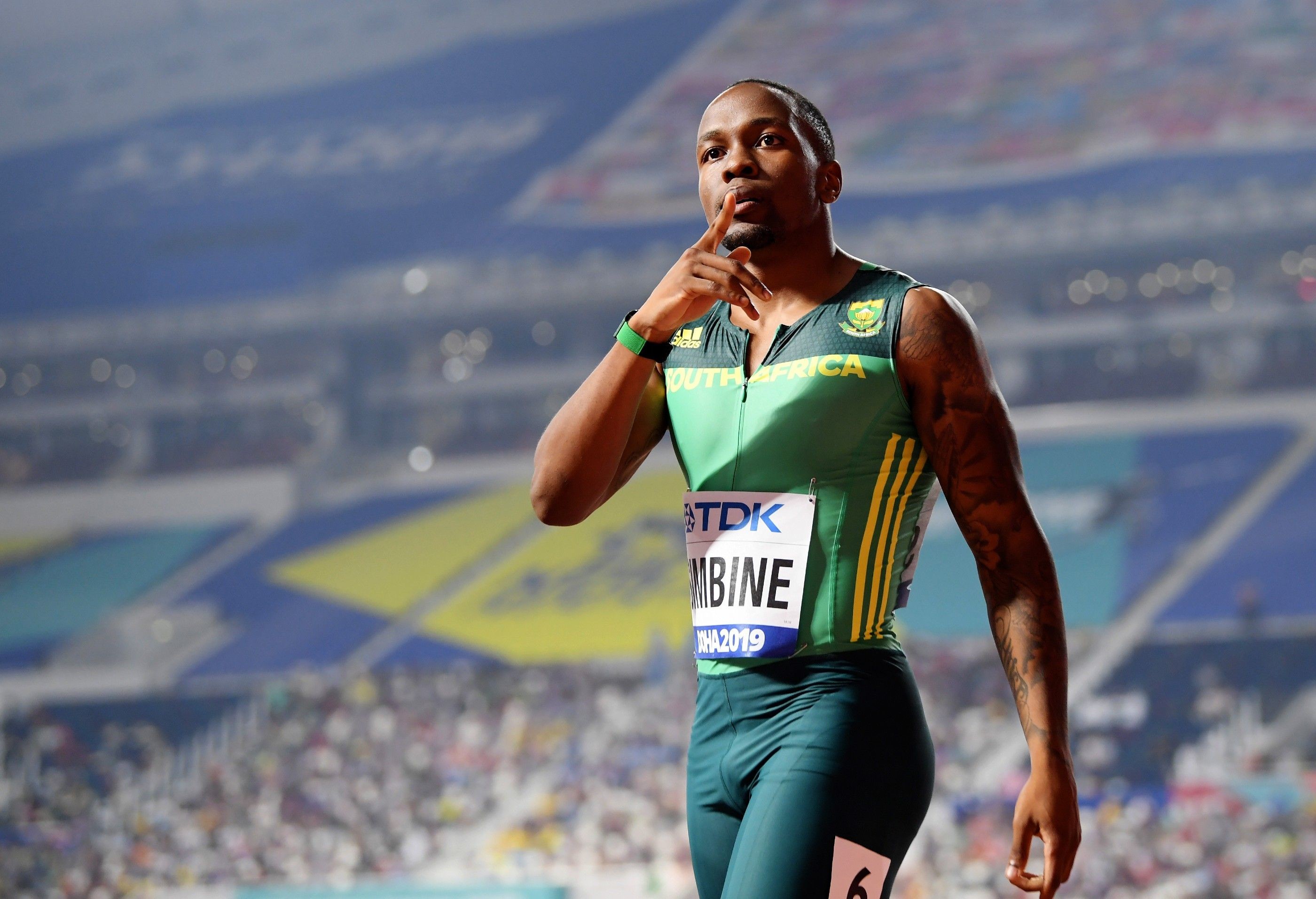
Thirteen different men have broken 10 seconds for 100m over the past seven weeks, and Simbine is one of them, running 9.99 into a stiff headwind (-3.0m/s) at altitude in Pretoria in late March before clocking a wind-aided 9.82 (+2.8m/s) at the South African Championships in April.
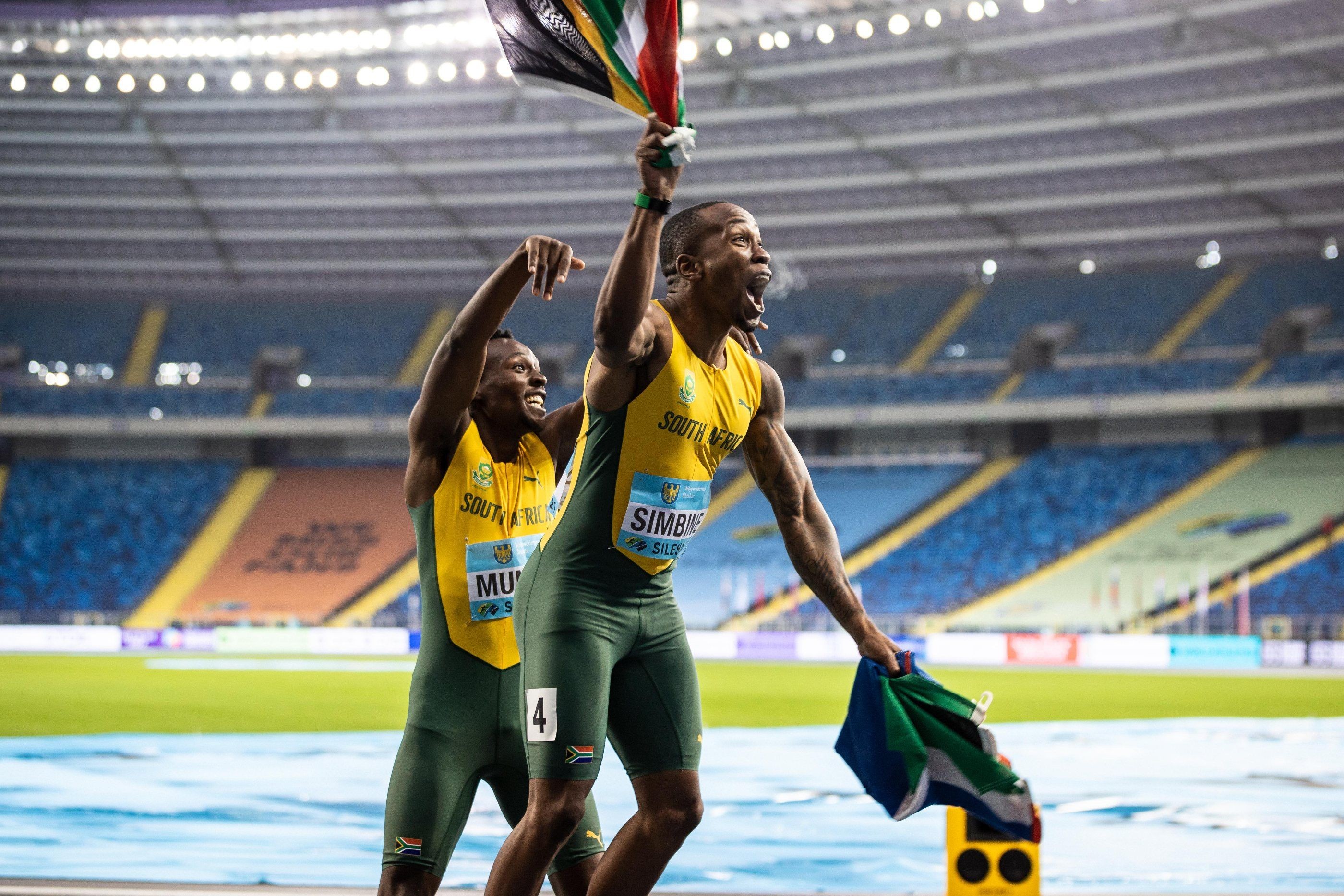
The race to the top of the world over 100m is as open as it’s ever been, and Simbine knows the fun is only just beginning. The 27-year-old South African has come oh-so-close to global 100m medals before, finishing fifth at the 2016 Olympics and 2017 World Championships and fourth at the 2019 World Championships – 0.03, 0.06 and 0.03 away from the medals.
The margins are fine, the competition cutthroat, but what does Simbine feel it will take to get on the podium in Tokyo?
“People are going to have to run their PBs, that’s for sure,” he says. “I’ll just speak for myself and say I’ll be ready, I’ll be at my best and making sure I run the best I can when it counts.”
Few events in world sport captivate the public quite like the Olympic 100m final, and in the first edition in 17 years not featuring Usain Bolt, a new name will be catapulted to global fame at the start of August. Simbine knows that back home in South Africa, millions will be tuning in, hoping it can be him.
“I don’t take it as pressure, something that weighs me down,” he says. “I take it more as motivation and belief. A lot of people believe in me and what I can do for the country, what I can do on the track.”
It’s taken time to re-wire his thoughts like that. Back in 2016 Simbine went to his first Olympics in Rio but the dizzying lights of the five-ringed circus threatened to blind his focus. What did he learn from that experience?
“To keep my head,” he says. “Keep my head on my shoulders and not to stress too much or put myself in a corner, thinking I’m not free. When I’m running, I should be running free and relaxed and that’s the one thing I didn’t do in Rio.”
The intervening years have taught him the value of composure: how a loose muscle is a fast muscle, how a calm mind functions with superior clarity.
In his first race in Europe this year, Simbine was coolness personified, anchoring the South African men’s 4x100m team to victory at the World Athletics Relays Silesia 21, clocking 38.71 on a wintry, windy night in Chorzow, Poland.
How was the race for him?
“Cold, very cold,” he laughs. “But it was a great race, and I’m really happy for the team, for the boys, for the country. We came with the goal of winning and I’m just happy we got that.”
It had taken Simbine 30 hours, door to door, to make it to his hotel in Poland, and though South Africa was already qualified for the Olympics in the 4x100m he felt it was a trek worth making.
“It was very important to come out here, put together a good relay, get the baton across and make sure that we get the confidence knowing we are running at international competitions with high-quality countries,” he says. “We’re so used to running for ourselves and not a team but here, we work together, we plan together and we make sure everything goes well and we can all win together.”
Simbine returned to Johannesburg following his Polish expedition and then relocated back to Italy where he will be based until the Olympics. He plans to try some 200m races early in the season to keep the door open for a sprint double in Tokyo. With 11 weeks until the Olympic 100m final, is there anything that still needs improving?
“There’s a lot,” he says. “The start, the middle of my running, the top end, the finish – the whole race. There’s a lot of things we need to fix and work on and that’s what’s exciting me even more, because I’m running well now and we’re not even at the point where we’re supposed to be.”
His wind-legal PB is the South African record of 9.89 he ran in Szekesfehervar a month before the 2016 Olympics, but Simbine knows that’s not his true limit, and he knows he has what it takes to become an Olympic medalist.
“I’m a 100m sprinter and if I don’t see myself being on a podium, then I shouldn’t be doing it,” he says. “I just need to make sure I’m able to get to Tokyo in the best shape I’ve ever been in and we’ll see what happens there.
“I’m really excited (with) the way I’ve started, but I’m keeping my head down and working. I have the confidence, I know what I can do and it’s just making sure I do it in Tokyo.”
(05/14/2021) ⚡AMPby World Athletics
Tokyo 2020 Olympic Games
Fifty-six years after having organized the Olympic Games, the Japanese capital will be hosting a Summer edition for the second time, originally scheduled from July 24 to August 9, 2020, the games were postponed due to coronavirus outbreak, the postponed Tokyo Olympics will be held from July 23 to August 8 in 2021, according to the International Olympic Committee decision. ...
more...Jakob Ingebrigtsen will be among the athletes looking to test their form when he races over 1500m at the Muller Grand Prix in Gateshead, UK, on Sunday May 23
The first Wanda Diamond League meeting of 2021 – in Gateshead, International Stadium will be able to welcome up to 2000 spectators for the meeting.
Norwegian 20-year-old Ingebrigtsen won European indoor 1500m and 3000m titles in Torun in March, emulating the success he achieved in Glasgow two years earlier when he claimed 3000m gold and 1500m silver. He returned to the UK in the July to finish second in the London Diamond League 5000m, breaking the Norwegian record with 13:02.03.
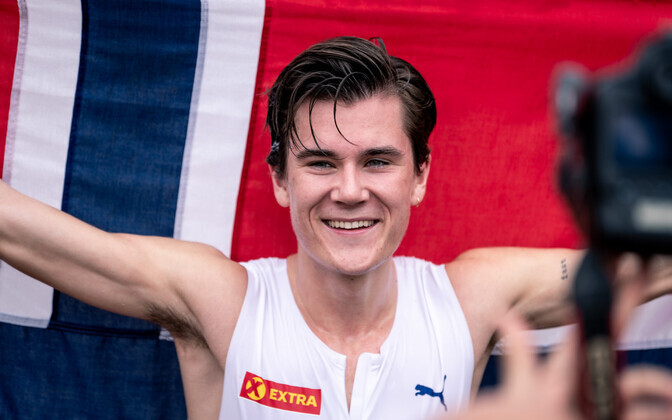
The European 1500m record-holder with 3:28.68 set in Monaco last year, Ingebrigtsen is also the reigning European outdoor champion at 1500m and 5000m.
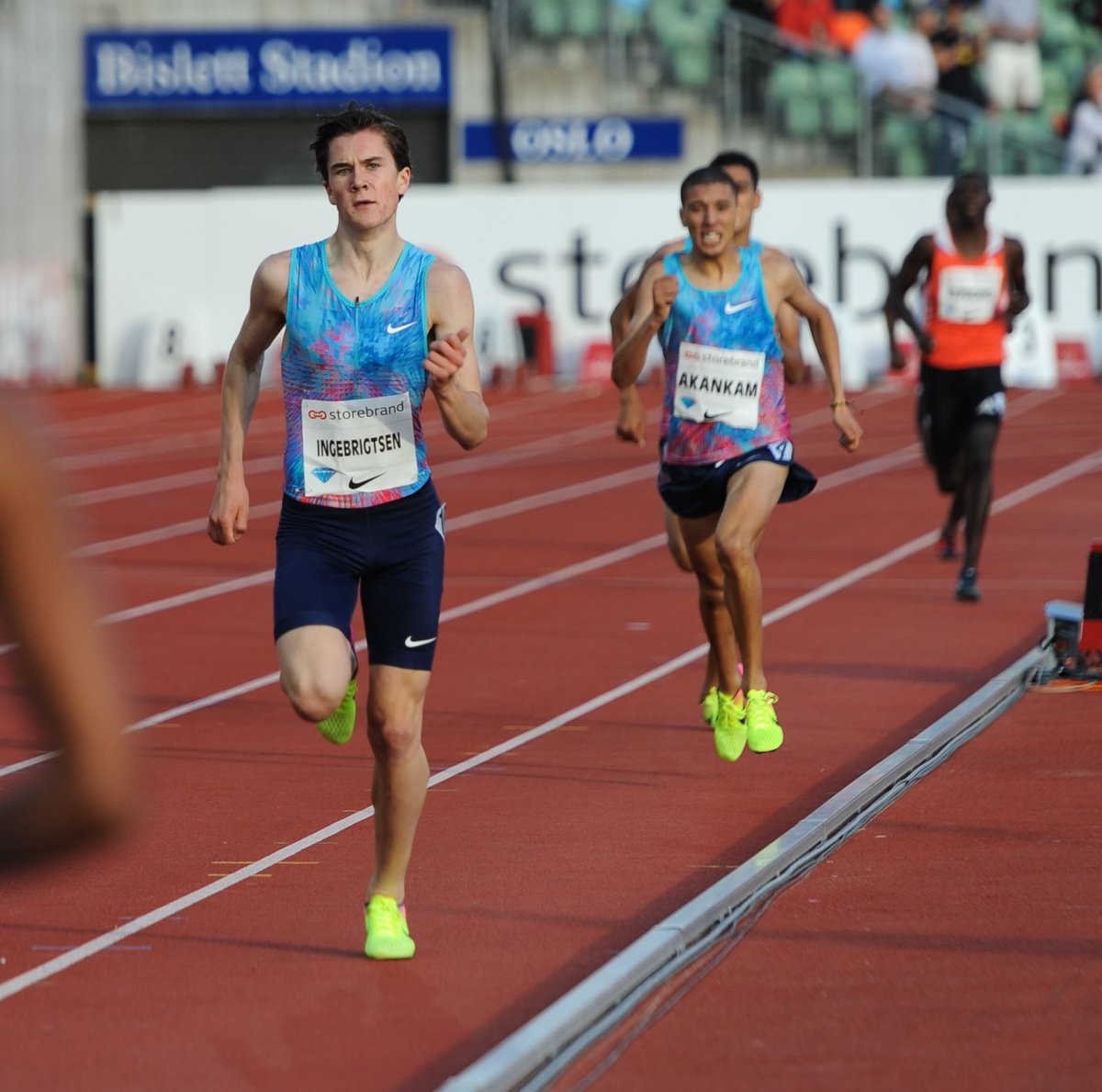
“I had a great time racing in Glasgow at the European Indoor Championships a couple of years ago and I’ve also run a few times at the Olympic Stadium in London. So I’m hoping for another good experience in Britain at the Diamond League in Gateshead next week,” he said.
“I’ve been training hard lately but I enjoy testing myself in competition and this meeting will be a good race to see where I am in the run-up to the Olympics.”
Joining him in Gateshead will be Britain’s Elliot Giles, who ran 1:43.63 in February to move to second on the world indoor 800m all-time list, plus Australian 1500m record-holder Stewart McSweyn and his compatriots Ollie Hoare, Matthew Ramsden and Ryan Gregson.
Other British athletes on the entry list include national 1500m champion George Mills, Piers Copeland and Archie Davis.
As previously announced, the women’s 100m in Gateshead will feature a world-class line-up including Dina Asher-Smith, Shelly-Ann Fraser-Pryce, Elaine Thompson-Herah and Sha’Carri Richardson, while the men’s pole vault sees a clash between Mondo Duplantis, Sam Kendricks and Piotr Lisek.
The women’s 1500m will see European champion Laura Muir in action and she will be joined by fellow British athletes Melissa Courtney-Bryant, Eilish McColgan, Adelle Tracey and Holly Archer.
(05/14/2021) ⚡AMPby World Athletics
Viktoria Brown breaks Canadian W45 100-mile record in North Carolina, running 15:24:23 to beat the previous national record by 14 minutes
Canadian ultrarunner Viktoria Brown recently set the Canadian W45 100-mile record, posting a time of 15:24:23 at a 24-hour race in North Carolina. This is the third ultrarunning record for Brown, who lives and trains in Whitby, Ont., and it beat the previous Canadian best by 14 minutes. She stopped after hitting the 100-mile mark, a distance that was good enough for 11th overall in the 24-hour event.
Brown only started running ultras in September 2020, but she already has three records to her name. Her first came in her ultra debut, when she ran to the women’s 24-hour Canadian soil record at That Dam Hill in London, Ont. Despite never having run an ultramarathon before, Brown excelled, running 213.8K in 24 hours and beating the previous record (which had stood for 36 years) of 210K.
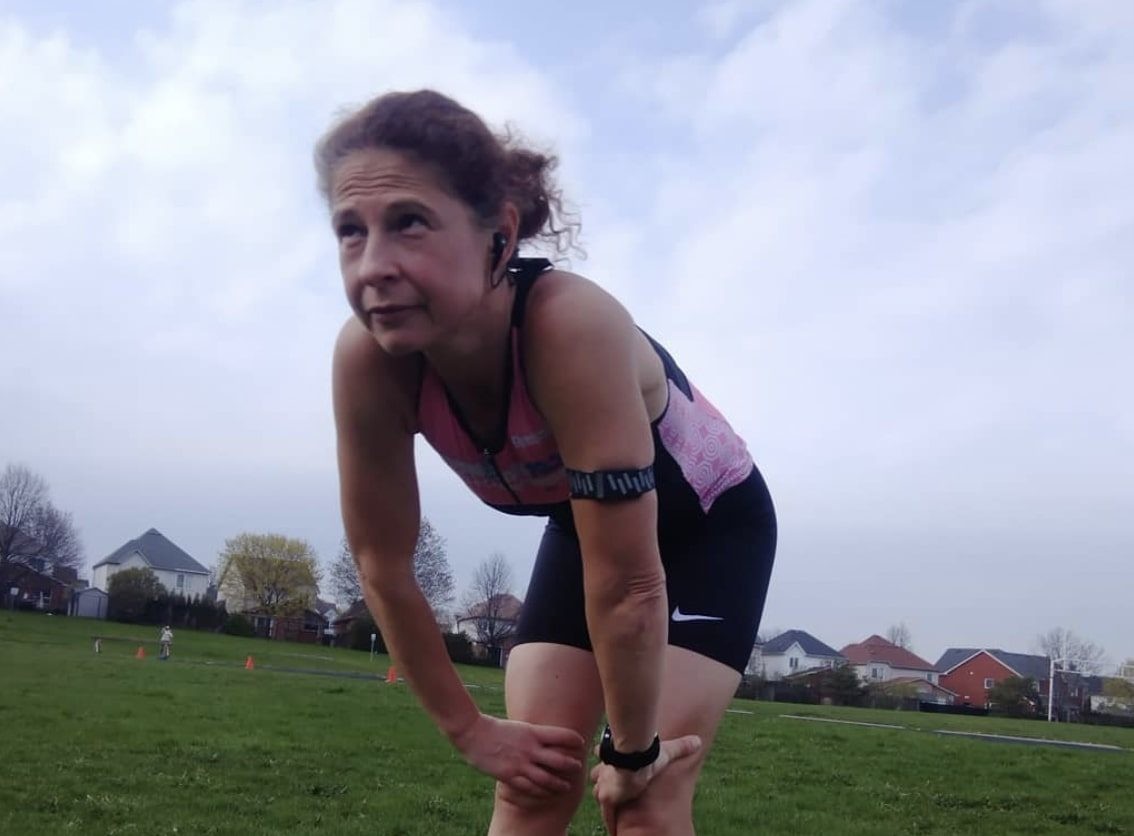
After her performance in London, Brown was invited to run in Kelowna, B.C., in October as a member of the Canadian team at Big’s Backyard Ultra. Again, although she was still so new to the sport, she ran extremely well, completing 34 laps and stopping after 228K. Next up was a 48-hour race in Duncan, B.C., in November, and Brown set another record, beating the previous Canadian 48-hour best by more than 6K with her two-day total of 324K.
Given her previous results in ultras, it shouldn’t have come as any surprise when Brown beat yet another record, this time at the Alexander County 24-Hour race in the U.S. After the race, Brown said she stopped short of the 24-hour cutoff because she didn’t want to push her body too far, as she is training for the Six Days in the Dome race, which will be held in Wisconsin in June. Stopping after just 15 hours meant Brown could dedicate less time to recovering after the race and more time to training.
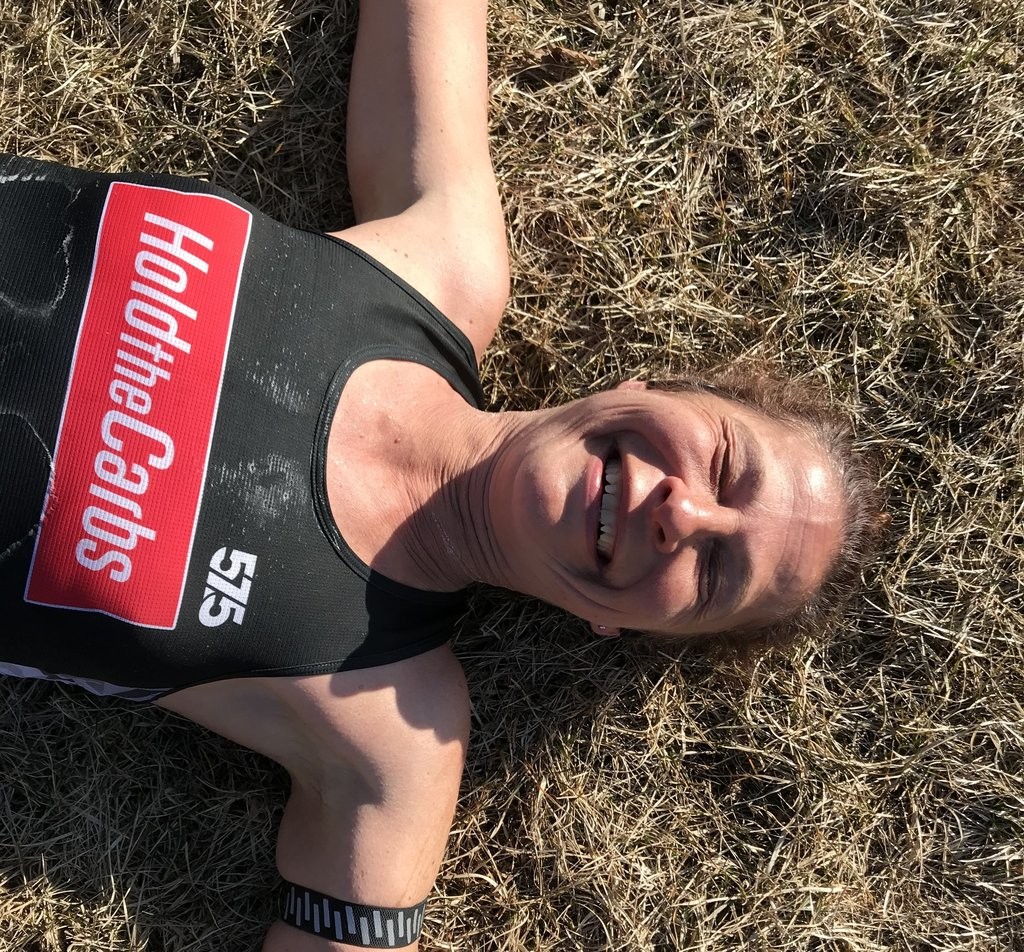
“I learned what I needed to learn from this one,” she said, referring specifically to a recent asthma diagnosis. After learning that she has asthma, Brown realized she needed to figure out how to race without making the problem worse. Seeing as she set a Canadian record, it’s safe to assume she worked things out on the race course.
As Brown noted on Instagram after the race, she was on pace to break the open Canadian women’s 100-mile record (which belongs to Michelle Leduc at 15:19:45) for most of the race, but she slowed too much in the final kilometres and had to settle for the W45 age group best (a time of 15:38:18 that Bernadette Benson ran in 2014) instead.
While she was disappointed with missing the Canadian record, Brown said she isn’t too upset, and her focus is now set on the Six Days in the Dome. If she wants to break the national six-day best at this event, she will have to run farther than Charlotte Vasarhelyi‘s 2014 record of 734.225K. To run the W45 best, Brown will need to better Kimberley Van Delst‘s record of 547.177K, which she ran in 2017.
(05/13/2021) ⚡AMPby Ben Snider-McGrath
British sprint star Asha Philip backs Olympic records to fall at Tokyo
Sprint star Asha Philip predicts records will fall at Tokyo 2020 despite the disruption caused by COVID-19.
The 30-year-old's hopes of adding to her 4x100m bronze in Rio were put on ice for 12 months with the postponed Games finally opening in July.
And hunger for success at an all-time high across the planet the Leyton native - who was ruled out of contention for Beijing 2008 and London 2012 through injury - is expecting a feast of world records and box-office battles.
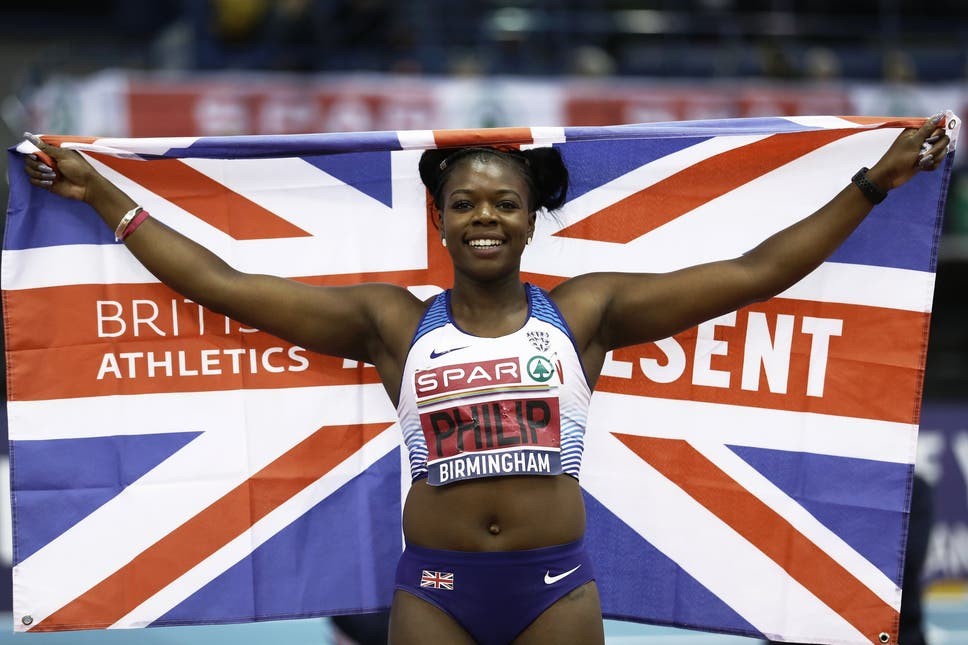
The pandemic has definitely done something to us athletes - we'll be twice as good as we were before," said Philip, who is working with Purplebricks to encourage the nation to get behind Team GB on their journey to Tokyo.
"It's going to be different without our families and fans there, but I do think it is going to be one of the best Olympics ever in terms of the sport that's actually on show.
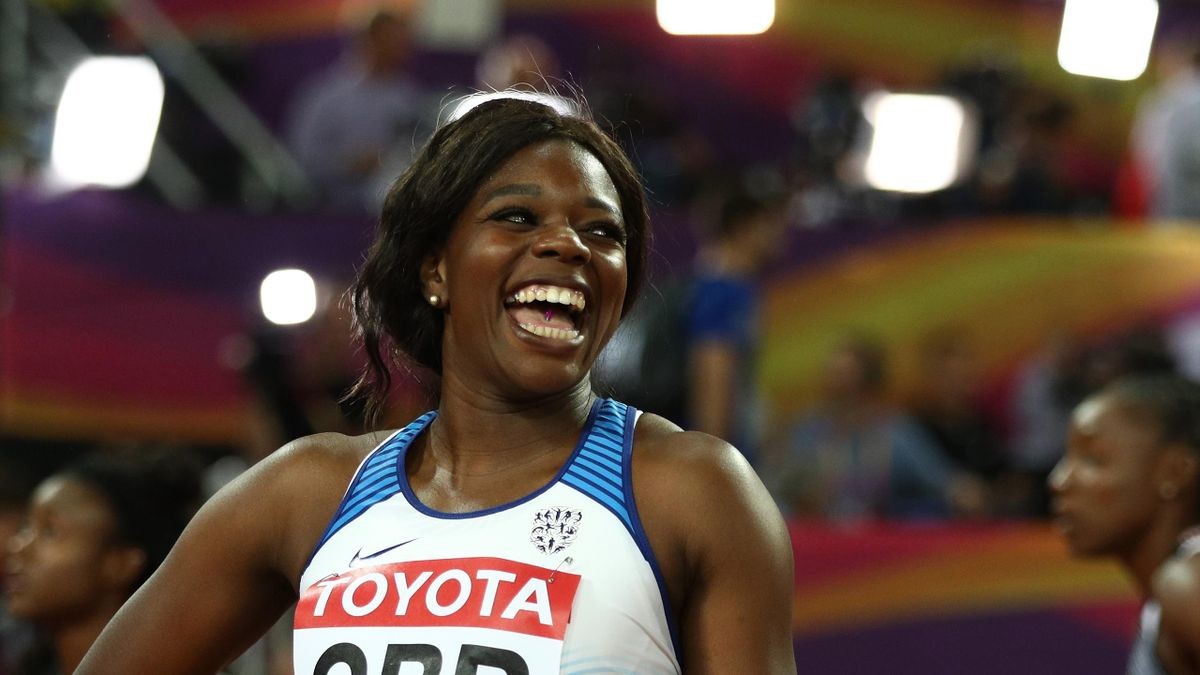
"I think the opportunity to take a break, spend time with loved ones and do all the things we've missed out on during lockdown was really refreshing. From my point of view I was able to watch my nieces and nephews grow up, which was good for the soul.
"I'm feeling good now - I think I'm in the strongest shape I've ever been. The gold medal is looking very shiny in the relay, and getting to the final of the individual 100m is also one of my big targets."
While unable to count on trackside support from mum Sharon and aunties Alric and Fay in Japan, Philip believes the ‘ping' of supportive social media messages will prove key.
And with the likes of relay partners Dina Asher-Smith there to lean on, she is confident the team can utilise their strong bond and yield medal success once again.
She added: "My family came with me to Rio, and it is a bit upsetting knowing that after a tough Olympic cycle I won't be able to get my hug from my mum.
"I do think it's going to be quite tough for a lot of the athletes, but we have to try and stay as safe as possible. My family love a WhatsApp group - I'll just be calling at random times and hoping someone answers!
"Having the relay girls will help. It's quite relaxed and there's a lot of banter between us, so we know we have each other as well as the staff and the wider team."
(05/13/2021) ⚡AMPby Sport Beat
Tokyo 2020 Olympic Games
Fifty-six years after having organized the Olympic Games, the Japanese capital will be hosting a Summer edition for the second time, originally scheduled from July 24 to August 9, 2020, the games were postponed due to coronavirus outbreak, the postponed Tokyo Olympics will be held from July 23 to August 8 in 2021, according to the International Olympic Committee decision. ...
more...Dagmawit Amare takes over at Great Ethiopian Run
Dagmawit Amare has been appointed as the new General Manager of Great Ethiopian Run, taking over from Ermias Ayele who has been the GM for the past 11 years. Dagmawit becomes the third GM in the company’s 20-year history and the first female to lead the company.
Speaking about her appointment, Haile Gebrselassie, Patron of the Great Ethiopian Run, said: “This is a great opportunity for Dagi to lead the company. She is a very humble person, but she is also very smart. She has a wonderful gift of empowering others to do their work well. We are lucky to have her to lead us in the next phase of our work.”
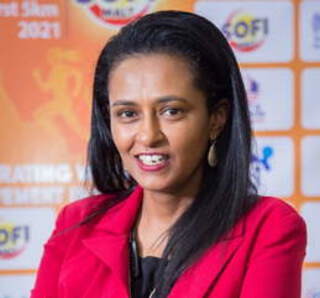
Having started to work for the company 17 years ago, Dagmawit is also Great Ethiopian Run’s longest-serving employee. Over many years she has masterminded the company’s work of mobilising large numbers of participants to register for their races. As a passionate lover of Ethiopian music, she has also been instrumental in bringing live music bands to the events and two years ago worked with an Ethiopian dance group to introduce a unique dance routine as part of the participant warm-up for the international 10km.
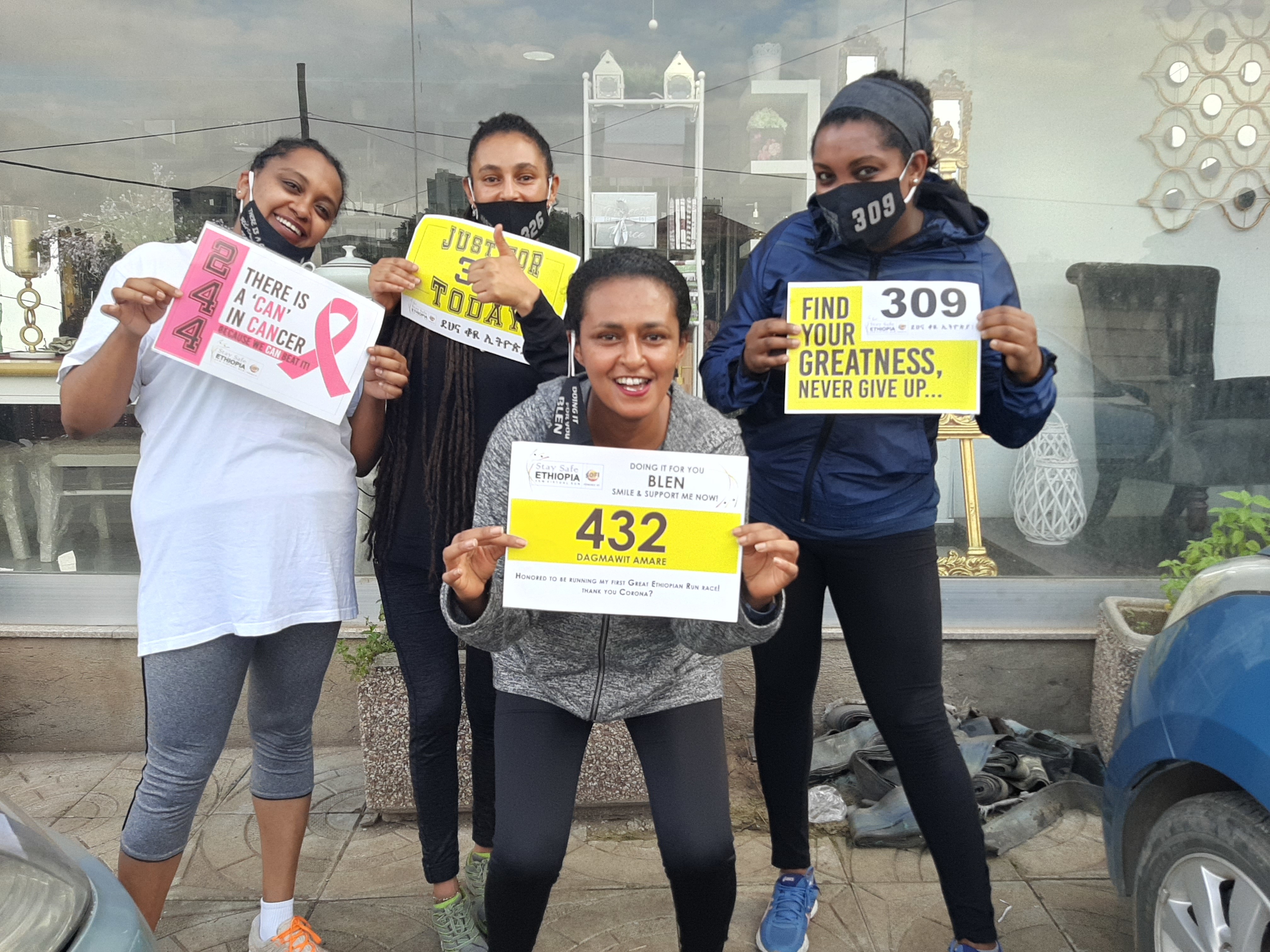
Former General Manager Richard Nerurkar recalls how Dagmawit has also been passionate about making a success of the annual women’s run: “From her earliest years she was totally committed to seeing this race grow into what it has now become. She loves creating enjoyment for our participants. Another example of this is our annual Pasta Party which nowadays has the feel of a special Gala Dinner. But what I value most about Dagi is the way she takes care of others. For the past 17 years she has been the glue which has kept us together as a happy and successful team.”.
The same point is made by Dagim Teshome who as Operations Director has worked closely with Dagi for the past 14 years. “With Dagi, nothing she does is about herself. It’s about our races and our team. It’s about us as an organisation and about us doing something for Ethiopia.” Ruth Duncan, who has worked as part of the Event Hospitality Team for the past 17 years, said: “Dagi is the perfect person to take over the driving seat at Great Ethiopian Run. Her friendly professionalism and passion for sharing Ethiopia’s running culture have been central to the way in which our races have sent out so many positive messages about Ethiopia and its welcome to the outside world.”
Dagmawit’s popularity outside the office has also been evident in tributes made by those who know her both as a person and as an event professional. Chachi Tadesse, one of Ethiopia’s well-known singers who regularly attends races organised by Great Ethiopian Run, commented: “Dagi is a wonderful person to be around – always positive, totally committed and incredibly humble. I’m excited to see how she will lead the organisation and the new ideas she will bring to her work.” Hannah Gebreselassie, an Ethiopian sports journalist, was equally upbeat when she heard about the appointment. “I was over the moon when I heard this news. Dagi will have her own special style of leadership and will want to help others do their work well.”
(05/13/2021) ⚡AMPthe Great ethiopian 10k run
The Great Ethiopian Run is an annual 10-kilometerroad runningevent which takes place inAddis Ababa,Ethiopia. The competition was first envisioned by neighbors Ethiopian runnerHaile Gebrselassie, Peter Middlebrook and Abi Masefield in late October 2000, following Haile's return from the2000 Summer Olympics. The 10,000 entries for the first edition quickly sold out and other people unofficially joined in the race without...
more...Credit Union Cherry Blossom Ten Mile Run Partners with MarathonFoto
As we all look for live racing and mass participation events to return, the organizers of the Credit Union Cherry Blossom Ten Mile Run and MarathonFoto have been making plans for the next in-person edition of the classic event, which will take place in Washington, DC on Sunday, September 12.
The Credit Union Cherry Blossom Ten Mile Run will be partnering with MarathonFoto to provide participant images from the 10 mile and the 5K Run-Walk. MarathonFoto has been the trusted leader in providing excellent support to races for 45 years and previously partnered with Cherry Blossom from 2002 – 2018. This partnership will give runners many great photo opportunities to celebrate their achievements at the next Credit Union Cherry Blossom Ten Mile.
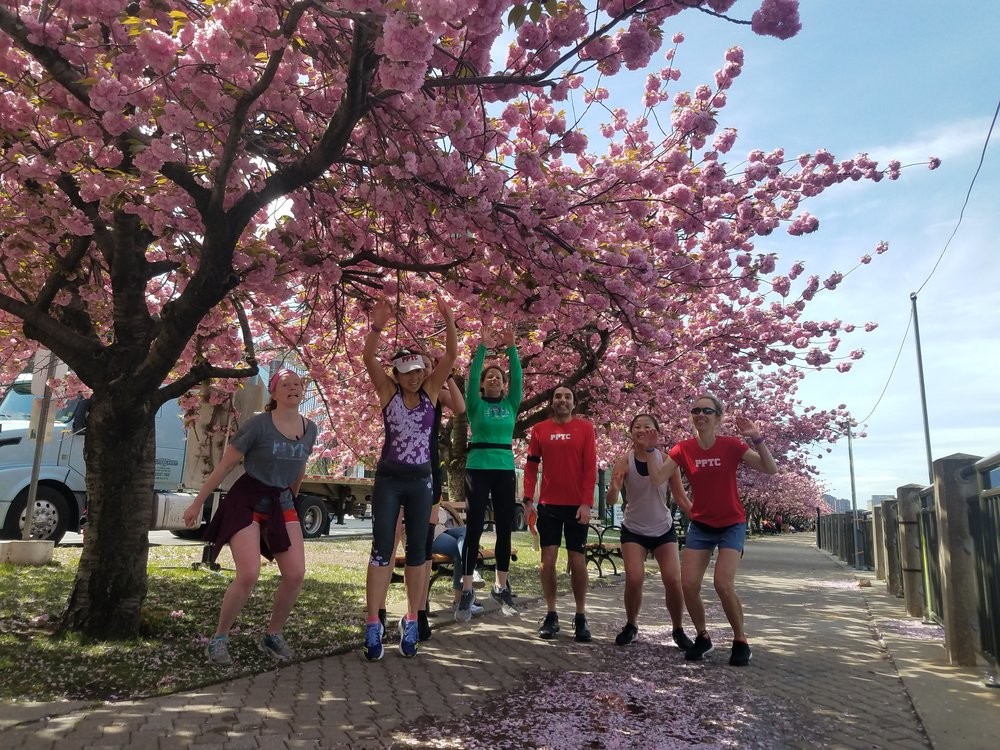
Phil Stewart commented “After having to cancel our 2020 event due to Covid-19 and dealing with the rapidly changing landscape for the 2021 race, our committee has faced an inordinately challenging year.
Within this context, it is tremendously reassuring to me to be bringing in the participant photography pros at MarathonFoto. I am confident their team will capture images which will make the event even more memorable as one of the first post-Covid-19 major races to take place.”
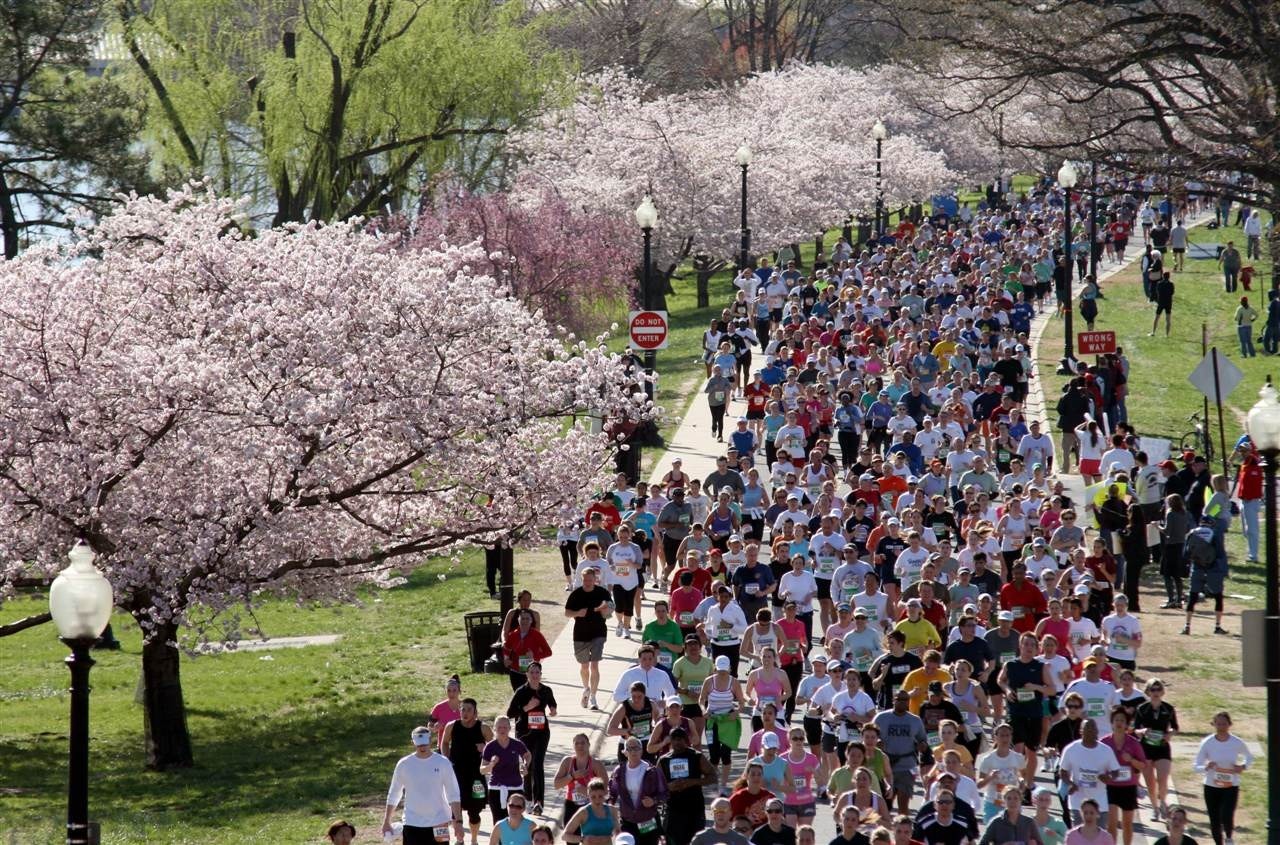
“Everyone on the MarathonFoto team is excited about returning to the Credit Union Cherry Blossom. Phil Stewart and his team put together a world-class race and we feel privileged to be a part of this iconic race”, said Brad Kroll, SR VP of MarathonFoto. “When live racing returns, this will be one of the first races with over 10,000 participants and we will be there to capture great images of all the participants. MarathonFoto has spent the last 18 months improving our processes and this race will be a great opportunity for us to showcase our capabilities.”
About Credit Union Cherry Blossom Ten Miler:
The Credit Union Cherry Blossom Ten Mile Run is organized by Cherry Blossom, Inc., a 501c(3)
chapter of the Road Runners Club of America. 2021 will mark the 48th running of the event which was founded in 1973. The staging area is on the Washington Monument Grounds and the course passes in sight of all of the major Washington, DC Memorials. The event serves as a fundraiser for the Children’s Miracle Network Hospitals, a consortium of 170 premier.
(05/13/2021) ⚡AMPCherry Blossom Ten Mile Run
The Credit Union Cherry Blossom is known as "The Runner's Rite of Spring" in the Nation's Capital. The staging area for the event is on the Washington Monument Grounds, and the course passes in sight of all of the major Washington, DC Memorials. The event serves as a fundraiser for the Children's Miracle Network Hospitals, a consortium of 170 premier...
more...Canadian ultrarunner Varden Morris wins Great Virtual Race Across Tennessee
The Great Virtual Race Across Tennessee has only been running for 10 days, but it already has its first finisher. Calgary’s Varden Morris completed the roughly 1,000K race in just over a week, averaging an impressive 103K per day since the event kicked off on May 1. Matt Shepard of Valleyview, Alta., is currently in second place, with just over 800K complete.
The GVRAT
Laz Lake created the GVRAT in 2020 at around the same time many races started going virtual. Lake, who is best known as the race director of the Barkley Marathons, wasn’t going to organize a quick virtual 5K or 10K, though, and he decided to take runners across his home state in a 1,000K ultramarathon. This year, just like in 2020, the race started on May 1, and participants have until August 31 to complete the route. They upload their runs or walks to the event website, which tracks every runner’s progress and lists the leaderboard.
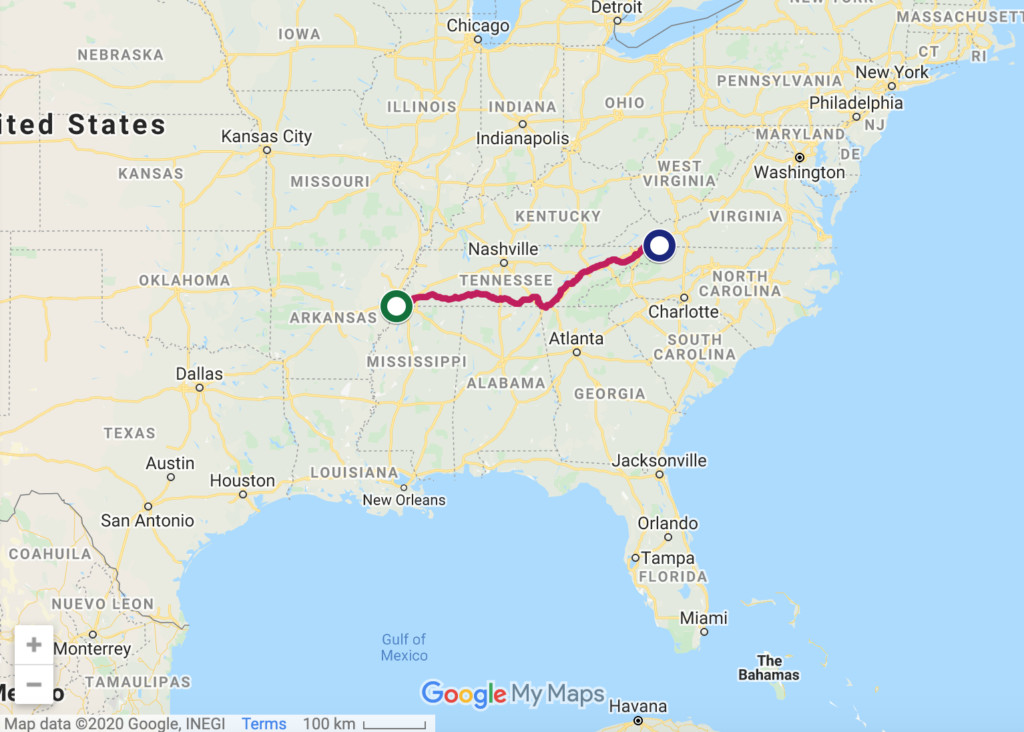
This year, around 5,000 people have signed up, although registration is still open for anyone interested in jumping into the ultra challenge. For people who think 1,000K is a bit too short, there’s an out-and-back race option, which tops out at a bit above 2,000K.
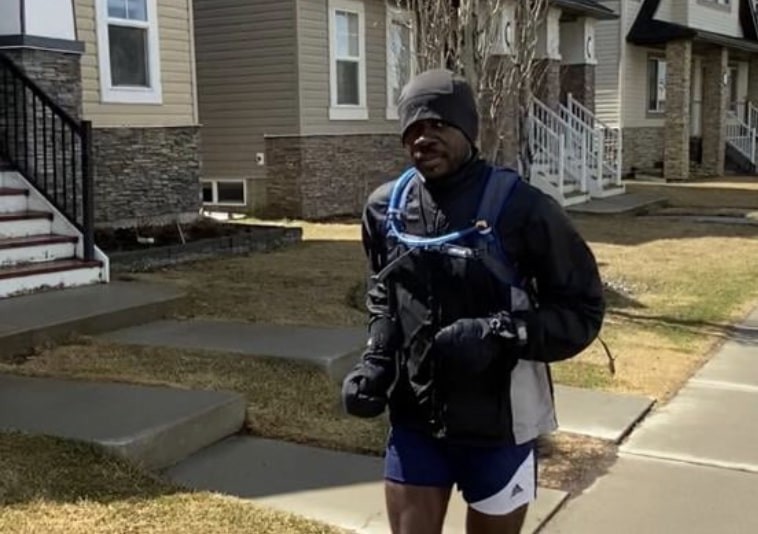
Morris’s win
Morris was relentless in his 10 days of racing, and he went for multiple runs each day to rocket himself up the leaderboard and toward the win. He kicked the challenge off on May 1 with a 112K day, followed by a 119K total on Day 2. From there, he continued his attack, distancing himself from the rest of the field every day. Throughout his 10 days of running, Morris ran under 100K only twice.
As he wrote on the GVRAT Facebook page, the race was 70 per cent mental for him and 30 per cent physical. “It has been a very humbling experience for me from day #1 through day #10,” Morris wrote. “Every single run came with its own set of challenges that resulted in me questioning God if this is possible and if I will be able to complete it.” He said his wife and daughter played big roles in his win, helping him throughout the race by preparing meals for him and showing him moral support.
The race is now on for second place, although Shepard appears to have a pretty good hold on it with his 800K total. In third is another Canadian, Crissy Parsons, who leads the women’s field with about 650K run. Like the gap between Parsons and Shepard, the distance from Parsons to the fourth-place runner is quite far, and as long as she holds steady in the coming days, she will likely finish third and complete a Canadian sweep of the podium.
(05/12/2021) ⚡AMPby Ben Snider-McGrath
Sir Mo Farah aims to earn Tokyo spot in 10,000m trial in Birmingham
Despite being reigning Olympic champion, Mo Farah must still qualify for this summer’s Tokyo Games and on June 5 at a University of Birmingham track that is likely to be bereft of spectators he will take on the rising stars Marc Scott, Jake Smith and Sam Atkin over 25 laps.
The trio have been named as part of the British team for the European 10,000m Cup, which is held as part of the Müller British Athletics 10,000m Championships.
The event, which is also the official Olympic trial for British athletes, sees a strong domestic line up in the women’s race too with Eilish McColgan, Jess Judd and Amy-Eloise Markovc among others.
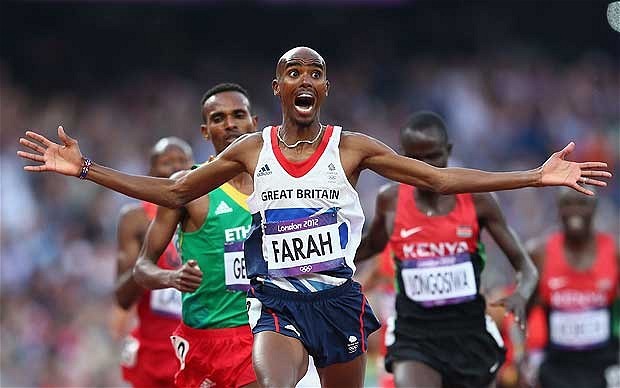
Farah’s last 10,000m on the track was at the 2017 World Championships in London where he won his sixth world title. Since then he has enjoyed a foray on to the roads and the marathon but he is returning to the track this year to try to win another Olympic track title aged 38.
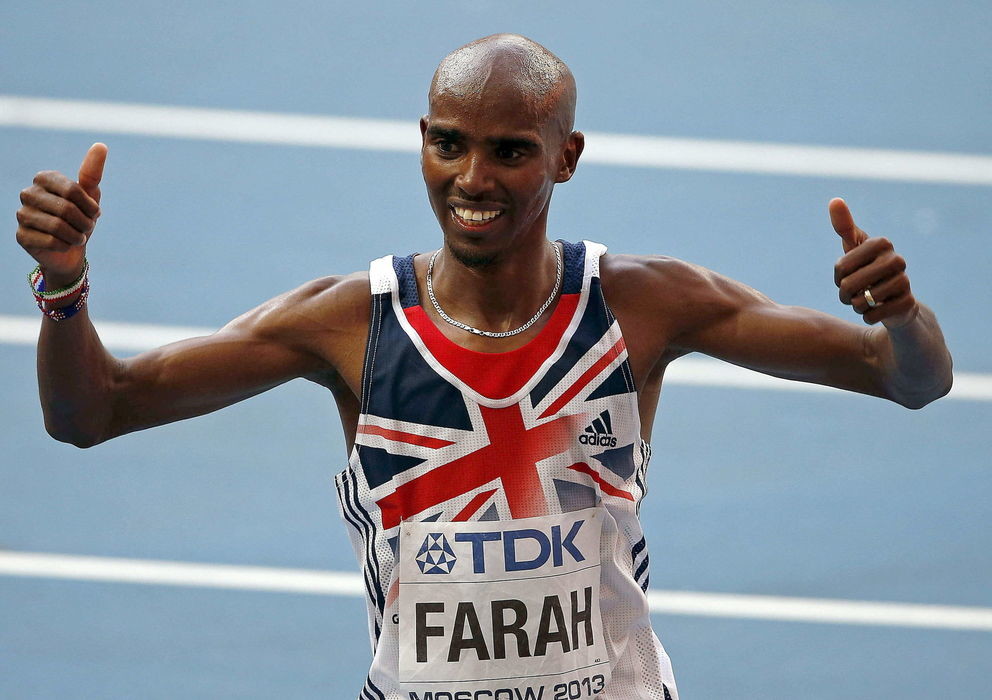
Since 2017 he has only raced once on the track – in a one-hour run in Brussels last summer – but appears to have been training well and is set to face a new generation of hungry young British runners in a 10,000m showdown.
This is also the first official trial for a major championship that Farah has done since 2010 when he ran the UK Inter-Counties Cross-Country Championships.
(05/12/2021) ⚡AMPby Athletics Weekly
Tokyo 2020 Olympic Games
Fifty-six years after having organized the Olympic Games, the Japanese capital will be hosting a Summer edition for the second time, originally scheduled from July 24 to August 9, 2020, the games were postponed due to coronavirus outbreak, the postponed Tokyo Olympics will be held from July 23 to August 8 in 2021, according to the International Olympic Committee decision. ...
more...Cleveland Marathon will hold Virtual Events May 15-16
The Union Home Mortgage Cleveland Marathon’s virtual races will be held May 15-16, 2021, giving participants the opportunity to run the following race distances anywhere, anytime during those days:
Full and Half Marathon, 10K and 5K.
Challenge Series (includes 5K/Half Marathon, 5K/Full Marathon, 10K/Half Marathon, 10K/Full Marathon). The races must be run two consecutive days (one distance per day).

The marathon encourages runners to document their training, progress and results on Instagram, Facebook and Twitter and to use hashtag #IConqueredMyLand. Runners can also submit their results from May 15-20 when they complete their events and can upload a finisher’s photo if they choose. The link to post results will be live on www.clevelandmarathon.com beginning May 15.
“Races across the country – and around the world – have pivoted and adjusted to the pandemic by postponing in-person events and offering virtual options, and we are no exception,” said Jack Staph, executive director of the Union Home Mortgage Cleveland Marathon. “COVID has changed many aspects of our lives as a whole. Social distancing has brought us closer together in many respects, and the same is true with virtual races. Friends and relatives train and run together virtually across the miles, which they would not have done with in-person only events.”
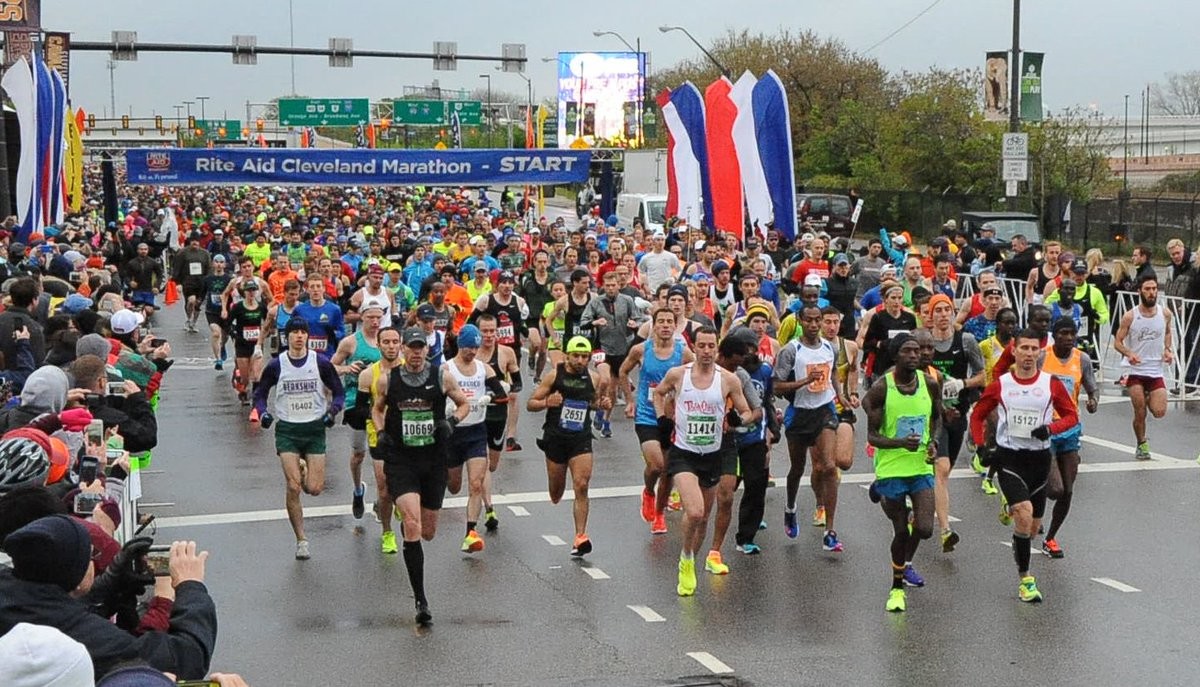
All virtual runners will receive a t-shirt and medal. Challenge participants will also receive a third medal and a Cleveland Marathon duffel bag.
The health and safety of runners, volunteers and spectators are the marathon’s top priorities, and the team will continue to work closely with city, county and state health officials, as well as its medical partner, University Hospitals Sports Medicine, to hold an in-person event this fall that is safe for all who participate.
A specific date has not been set yet for the fall as the marathon team is actively working with the City of Cleveland on scheduling a date that will not conflict with a Cleveland Browns home game. An update is expected once the 2021 NFL schedule has been released.
Registration for the in-person event in the fall has been paused until a date is set. However, registration for all virtual races is now open on the marathon’s website.
The marathon team appreciates the community’s patience and understanding as they coordinate logistics for the 2021 race. More information, including updates and health and safety protocols, can be found on the marathon’s website and social media channels.
(05/12/2021) ⚡AMPCleveland Marathon
The Cleveland Marathon features a relatively flat and fast course, great volunteer support and a scenic view of downtown Cleveland and its major landmarks. The course has been designed for our athletes to enjoy views of Browns Stadium, the Rock and Roll Hall of Fame, Lake Erie and many other Cleveland highlights. The Cleveland Marathon began in 1978 in an...
more...With 50% reduction of runners, Philadelphia Marathon will return this year
The Philadelphia Marathon was cancelled in 2020 due to COVID-19, but the event is gearing up for a return this fall.
The City of Philadelphia recently shared that a preliminary date for race weekend has been set for Nov. 19-21.

While city officials continue to monitor COVID-19 case trends closely, planning for the 27th annual running event is underway as event organizers are working closely with the City of Philadelphia on race weekend plans that align with Philadelphia’s COVID-19 safety policies," a press release stated.
There will be a 50% reduction in runners this year for each of the four races: AACR Philadelphia Marathon, Dietz & Watson Philadelphia Half Marathon, Rothman 8K and the Dunkin’ Munchkin Run.
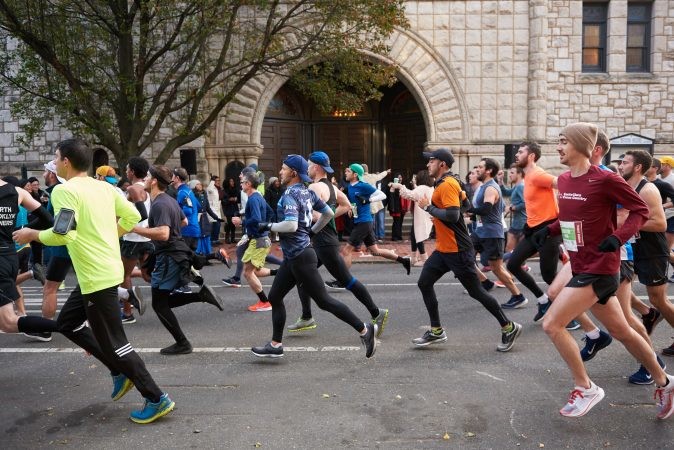
Online registration opens to runners on Thursday, May 13, beginning at 2 p.m.
There is potential for runner participation to increase, depending on current COVID-19 restrictions, race organizers said.
Event day precautions will include restricted access to start and finish lines exclusively for runners, and spectators will be limited to spectator zones located throughout the course of the race.
Runners will be required to wear a mask covering their mouth and nose in the start line corral, and after crossing the finish line. High-fives and celebratory hugs at the finish line won't be permitted, as runners will be asked to remain socially distanced from others at the finish.
At the start, runners will be funneled into eight corrals with 10 runners starting in waves every 10 seconds to allow for more distance between participants. Runners will be spaced three feet apart in the starting corrals.
There will still be hydration and nutrition stations along the course, which will follow public health and safety guidelines.
Ahead of the race, the expo at the Pennsylvania Convention Center will be modified and there will be no registration or packet pickup on event day. Also, a pre-event questionnaire will be sent to all registered participants assessing their exposure risk in advance.
"While canceling the 2020 Philadelphia Marathon Weekend was necessary, it was still a difficult announcement to make," Mayor Jim Kenney said. "Today, we’re filled with hope as vaccine distribution continues to increase, making announcements like today’s possible. We are excited as we plan for the return of an iconic Philadelphia event, and we’re committed to creating the safest environment for our staff, athletes, volunteers and partners. Safety is our top priority, and we continue to work closely with public health experts to plan and execute a safe, successful marathon weekend."
Runners who are registered for in-person races scheduled on Nov. 20 or Nov. 21 will be given the option to participate virtually if they wish to, or if they are unable to run in-person due to illness.
(05/12/2021) ⚡AMPby Sinead Cummings
Philadelphia Marathon
Whether you’re a seasoned marathoner or a first-timer, Philadelphia is the place for you. We’ve designed our course to be scenic, fan-friendly and, above all, great for running. It’s no wonder we're consistently listed among the top ten races in the country, recognized for our mostly flat terrain, ideal temperature and awesome atmosphere. Join us this fall for the best...
more...Grandma´s Marathon can now welcome back spectators for this year’s race
A loosening of the state’s public health guidelines, announced last week by Minnesota Governor Tim Walz, has paved the way for the return of two traditional and popular pieces of Grandma’s Marathon weekend.
Based on the Governor’s expected timeline of eliminating capacity limits and distancing requirements, organizers say they will now be able to welcome spectators on race weekend and host a post-race celebration.
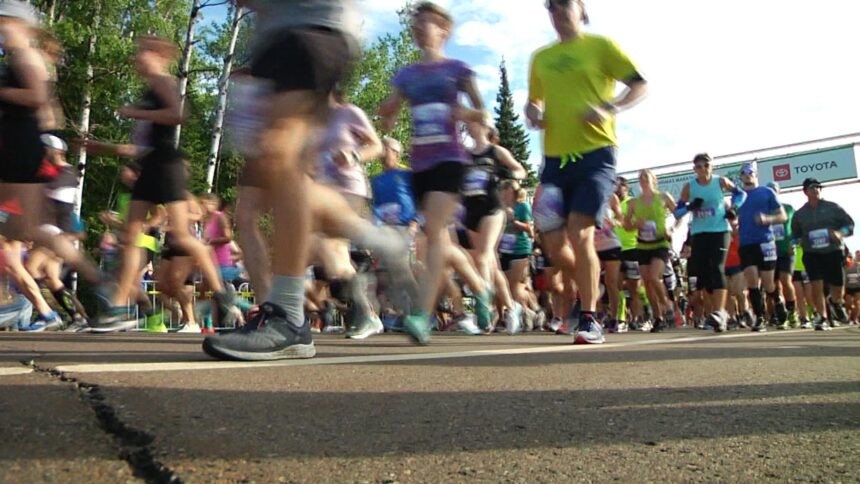
“Those things were crossed off pretty early in our planning process based on the previous guidelines, and the result was going to be a very different feeling come race weekend” Executive Director Shane Bauer said. “Bringing those pieces back will not only amplify the experience of our participants, but it’s great for our community members who wait all year to be part of Grandma’s Marathon weekend.”
Spectators were originally discouraged from attending this year’s Grandma’s Marathon, but the updated guidance will now allow those who wish to watch the races to do so.
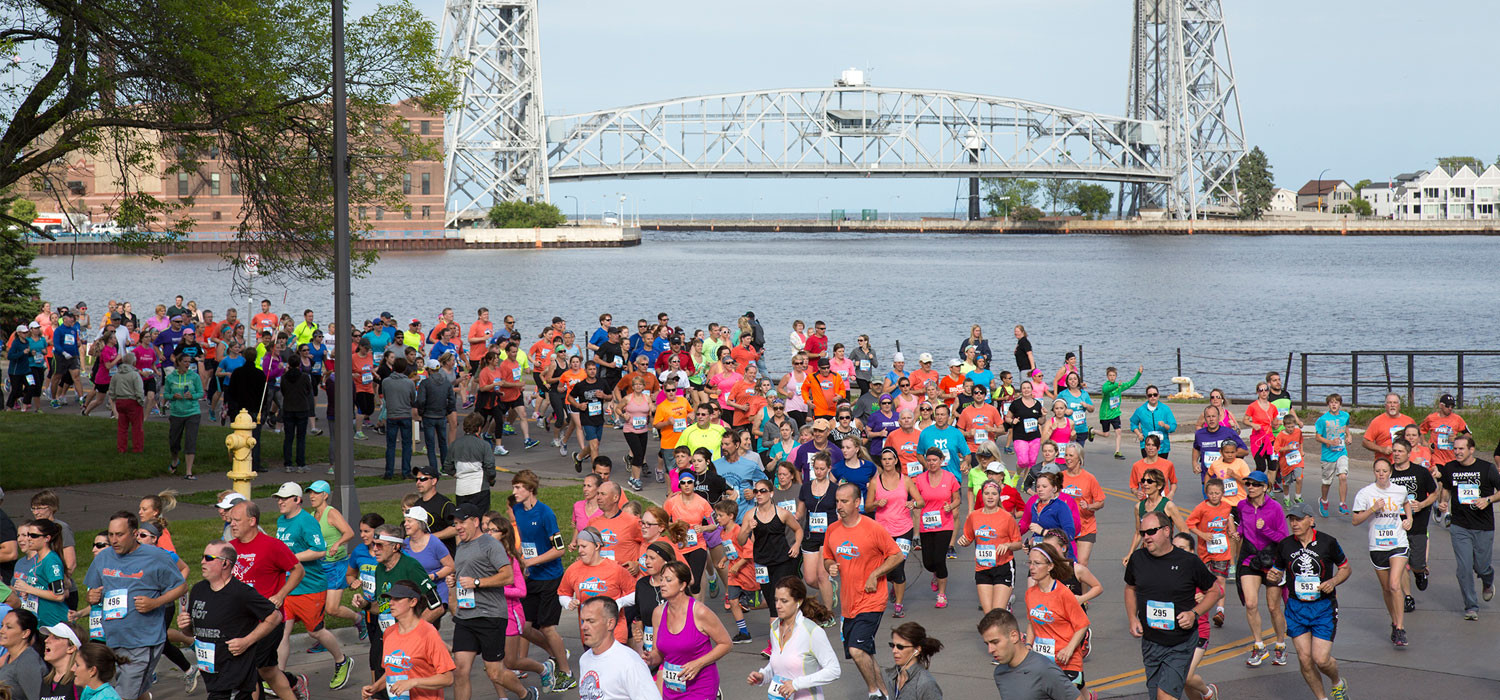
“It’s great to be adding that community aspect back into our plans for June,” Race Director Greg Haapala said. “That said, we will be keeping some of the mitigation tactics in place to help keep some of those large groups from forming, and we ask that everyone who does attend is mindful and respectful of others.”
The post-race celebration will be in a new location this year, moving from near the finish line in Canal Park to Bayfront Festival Park. Live musical acts will be featured throughout race day, and admission will be free for all ages in celebration of the 45th anniversary of Grandma’s Marathon.
“The move to Bayfront is an exciting change for this year’s Grandma’s Marathon,” Finance & Operations Director Linda Hanson said. “It’s a great Duluth venue built for the very thing we want to do – come together and celebrate with our participants, our many partners, and our community that supports us year round. To be given the opportunity to bring this event back into our planning means so much because it’s not only a tradition, it’s how we say thank you to everyone for a job well done.”
Amid the excitement of what the new guidelines allow, organizers want to remind anyone planning on participating, volunteering, or attending Grandma’s Marathon that personal responsibility will still play a major role in the weekend’s overall success.
“This is still a large event that involves people from all over the country, from all different walks of life, and potentially with many different comfort levels,” Marketing & Public Relations Director Zach Schneider said. “We want everyone involved to feel as comfortable and as safe as possible, so we encourage everyone to take proper precautions in terms of masks and distancing even in areas it’s not technically required by the guidance.”
It’s expected that Grandma’s Marathon will be one of the country’s first major running events to return following the COVID-19 pandemic, so plenty of eyes will be on Duluth this June.
“This is our chance to do a really big thing and do it well,” Schneider said. “We want people to enjoy themselves, to feel safe, and to say good things about our race and our community when they leave here. Grandma’s was built on the idea of community coming together, and we need that in a different but critically important way this year.”
Masks or face coverings, according to the expected guidelines, will be required in all race-controlled areas with more than 500 people in attendance. Organizers expect that to include the start and finish areas, Bayfront Festival Park, the Michelina’s All-You-Can-Eat Spaghetti Dinner, and the Essentia Health Fitness Expo.
As in the originally released plan, participants will not be required to wear a mask or face covering while actively participating in their race.
The 45th annual Grandma’s Marathon weekend will be held June 17-19, 2021.
(05/11/2021) ⚡AMPGrandmas Marathon
Grandma's Marathon began in 1977 when a group of local runners planned a scenic road race from Two Harbors to Duluth, Minnesota. There were just 150 participants that year, but organizers knew they had discovered something special. The marathon received its name from the Duluth-based group of famous Grandma's restaurants, its first major sponsor. The level of sponsorship with the...
more...Disgraced former world athletics head Lamine Diack returned home to Senegal after released
Disgraced former world athletics head Lamine Diack returned home to Senegal late Monday after a local soccer club paid a bond of just over $600,000 to allow him to leave France.
Diack, the president of world athletics from 1999-2015, was convicted in Paris in September on multiple charges of corruption during his tenure, some of it related to the Russian doping scandal. He was sentenced to four years in prison, with two of those years suspended.

But French justice authorities said Diack, who is 87, was unlikely to spend any time in jail because of his age. He had been held under house arrest in France since 2015.
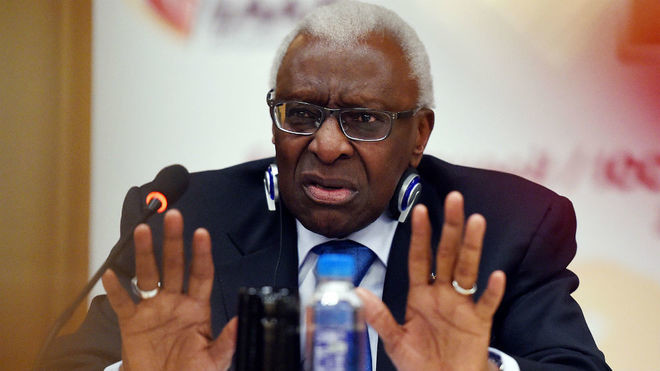
The bond is related to a separate case against him.
Simon Ndiaye, a lawyer for Diack, said he was allowed to leave France after posting bail in a case involving alleged bribery in the buildup to the vote for the host city for the 2016 Olympics.
Diack was handed preliminary charges in that case and his passport was confiscated, but a French judge lifted the ban on him leaving the country on condition he pay 500,000 euros and continue to answer court summons, Ndiaye told The Associated Press.
"He was relieved, moved and happy to be able to return to his country and his family,'' Ndiaye said. "But it remains a legal case that affects him. He finds it unfair. He continues to deny wrongdoing in both cases.''
Diack appeared frail as he walked through the airport after arriving in Dakar. He wore a smart blue suit but used a walking stick and was helped by a family member. He did not make any comments.
The bond money was raised by a soccer club in Senegal that Diack once led, according to Ndiaye and an official with the club. Youssou Dial, vice president in charge of finance at Jaraaf de Dakar, said the club raised the money by selling off some of its properties.
Diack was president of Jaraaf in the 1970s and in the late 1990s and 2000s.
His conviction in France last year marked a spectacular fall from grace for a man who was head of World Athletics, then known as the IAAF, for nearly two decades and was an influential figure in the world of Olympic sports.
Diack was found guilty of being part of a scheme that squeezed 3.2 million euros ($3.8 million) in bribes out of Russian athletes suspected of doping. The hush money allowed the athletes, who should have been suspended, to keep competing. Diack was also found guilty on breach of trust charges but acquitted of money laundering.
His son, Papa Massata Diack, who worked as an IAAF marketing consultant, was also convicted and was sentenced to five years in jail in his absence. The judge said $15 million was funneled to the younger Diack's companies from various contracts negotiated by the IAAF while his father was in charge.
Papa Massata Diack lives in Senegal, which refused to extradite him to France for the trial. Both Diacks have appealed their convictions.
Four others were found guilty on charges related to corruption or receiving bribes in the scandal. They were former IAAF treasurer Valentin Balakhnichev, former IAAF doping official Gabriel Dolle, former IAAF lawyer Habib Cisse, and Russian coach Alexei Melnikov.
(05/11/2021) ⚡AMPby Associated Press
The JAAF has stripped Moroccan Dazza of 2019 Fukuoka Title
The JAAF has announced that Moroccan El Mahjoub Dazza has been stripped of his victory at the 73rd Fukuoka International Marathon on Dec. 1, 2019. A short time later Dazza was found to have violated anti-doping regulations, and the Athletics Integrity Unit suspended him for four years.
Following a rejection of his appeal by the Court of Arbitration for Sport last week, all of Dazza's results after May 4, 2019, including his Fukuoka win, were disqualified.
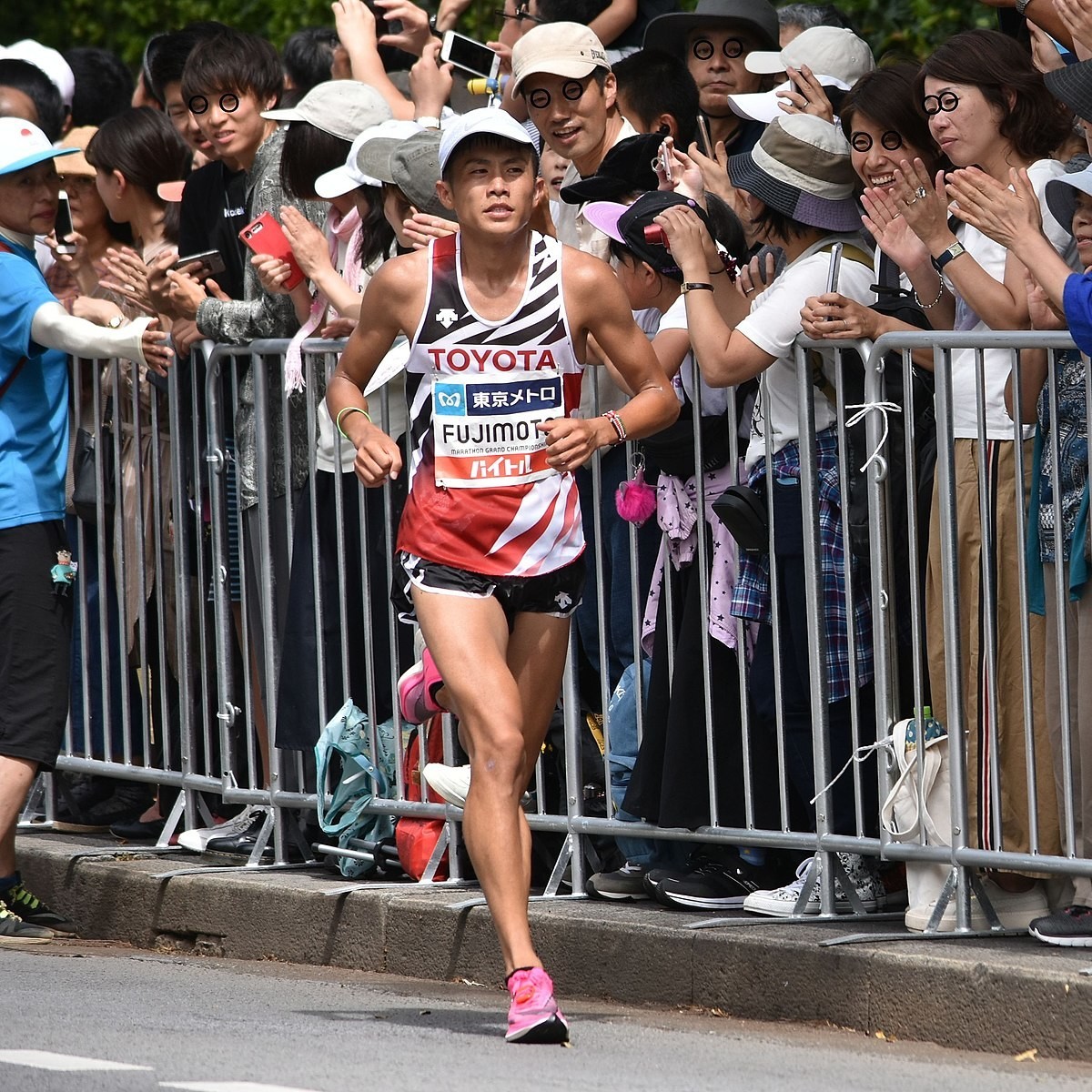
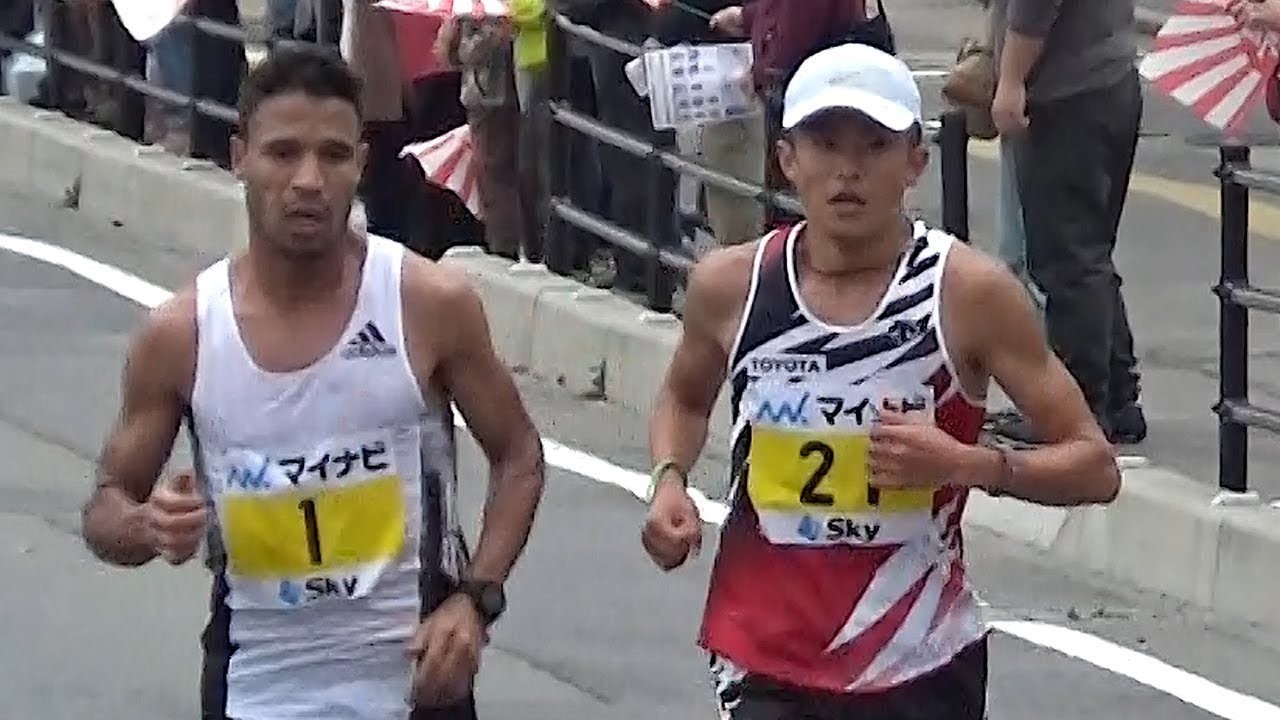
For that reason, all athletes who finished 2nd and lower in the race will be elevated one position, making runner-up Taku Fujimoto (Toyota) the winner and giving the Toyota corporate team and head coach Toshinobu Sato two-straight Fukuoka victories, following teammate Yuma Hattori's 2018 win.
The Fukuoka International Marathon is known worldwide as one of the most prestigious traditional races and last year was selected as the recipient of World Athletics' Heritage Plaque. Nevertheless, in March this year the JAAF announced that this year's 75th running on Dec. 5 will be its final edition.
(05/11/2021) ⚡AMPby Brett Larner
Fukuoka Marathon
The Fukuoka International Open Marathon Championship is one of the longest running races in Japan, it is alsoan international men’s marathon race established in 1947. The course record is held by Tsegaye Kebede of Ethiopia, running 2:05:18 in 2009. Frank Shorter won first straight years from 1971 to 1974. Derek Clayton set the World Record here in 1967 running 2:09:37. ...
more...Who needs super spikes when Crocs are available?, Runner wears Crocs in 5,000m race, flies to 14:47 finish
A runner named Benjamin Pachev raced a 5,000m in Portland on Saturday, running to a quick 14:47.62 finish. His time was good enough for 12th place, and although he didn’t win the race, he attracted a lot of attention during and after his run, which he completed in a pair of Crocs.
That’s right, while his competitors were lacing up their spikes, Pachev tossed on his foam clogs, and he ended up beating about half of the field.
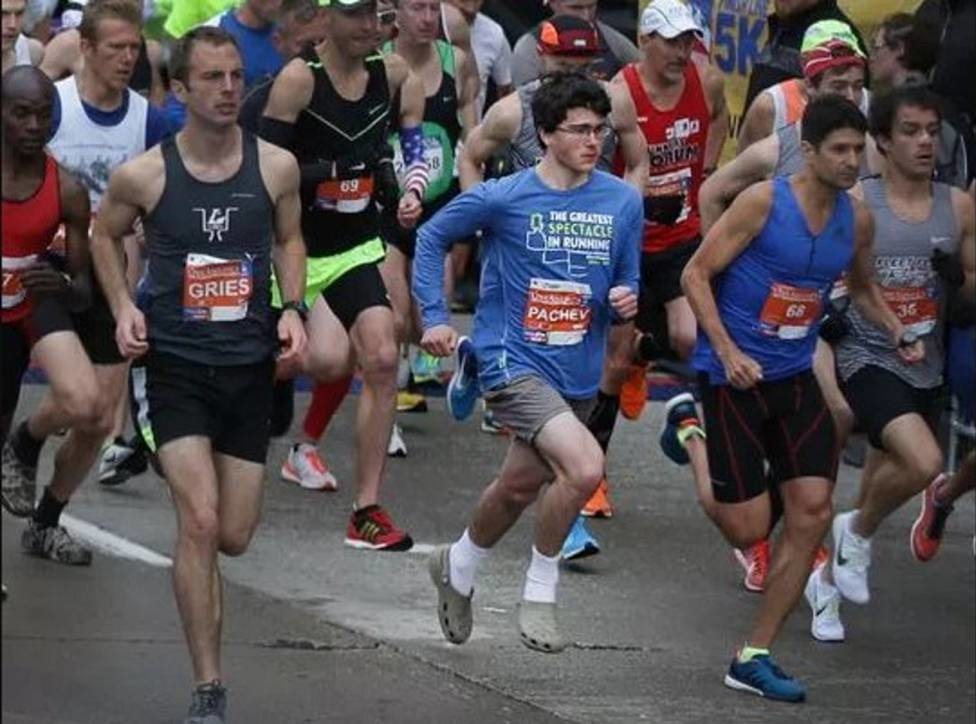
This is not the first time that Pachev has raced in Crocs. In 2017, he took his unique shoes to the Mini-Marathon in Indianapolis, where he raced a half-marathon with his father, Sasha. The younger Pachev ran to a mind-boggling time of 1:11:53, finishing in 16th place. His father, also wearing Crocs, crossed the line just a few minutes later, posting a time of 1:17:26 and finishing 44th out of more than 20,000 runners.
Pachev’s sister, Jennifer, ran the 5K at the event, and like her father and brother, she wore Crocs, the family’s apparent preferred choice of footwear. She finished in ninth overall and crossed the line as the second female runner, posting a time of 19:56.
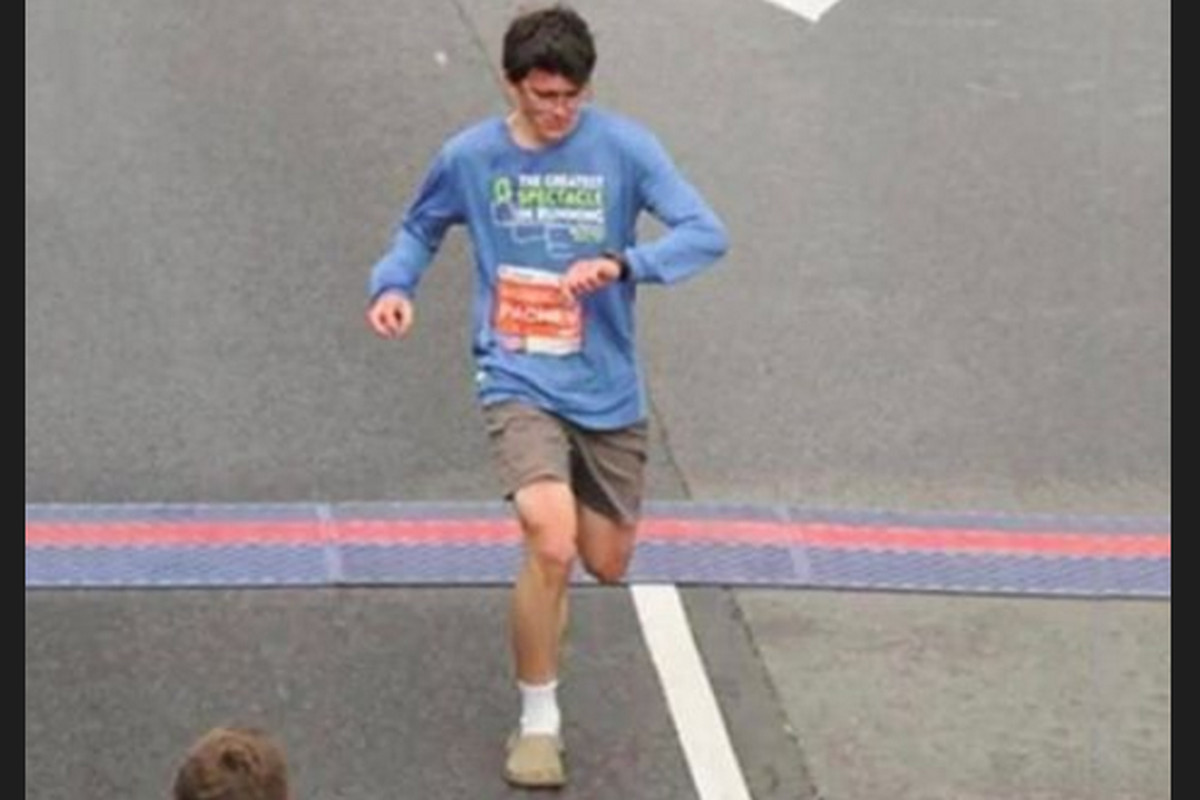
On Saturday, Pachev recreated that Crocs magic, blazing to a sub-15-minute finish in Portland. His final time works out to 2:57 per kilometre, which is a pace most people would struggle to hit even if they were decked out in the fastest spikes on the market.
It’s clear that these shoes work for Pachev, but the question still remains: why Crocs? According to an article from the Indy Star that was published after the Pachevs’ runs at the Mini-Marathon, Sasha made the change from normal running shoes to Crocs after he saw his kids run in them.
“I was trying to figure out if there was a better way to run than in regular running shoes,” Sasha said. “I was experimenting with different things.” When his kids insisted on running in Crocs one day, he noticed that their form was better than it was in other shoes, so he tried them out for himself.
“I really liked the feeling, and I’ve run in them ever since,” he said. “They’re really not that much different, speed-wise, from racing flats.” Sasha’s kids followed his lead, and the shoes are now the go-to footwear for the family. The Pachevs certainly look peculiar walking up to the start line at races in their Crocs, but they have proven that these shoes work well for them, so it’s likely that the running world will hear more stories from the speedy Crocs-supporting family in the future.
(05/11/2021) ⚡AMPby Ben Snider-McGrath
DK Metcalf Runs 10.37 for 100 Meters at 2021 USATF Golden Games
In his first track and field competition since high school, Seattle Seahawks wide receiver DK Metcalf ran a credible 10.37 but finished last in the second heat of the men’s 100 meters at the 2021 USATF Golden Games at Mt. SAC on Sunday, failing to advance to the final later this afternoon.
To qualify for the nine-person final, Metcalf would have had to have finished in the top three of his heat or earned one of the three time qualifiers; his time of 10.37 was .16 short of the final time qualifier, Bryce Robinson, who ran 10.21. The fastest qualifying time belonged to Isiah Young, who ran 10.09 to win heat one.

“Just happy to be here, excited to have the opportunity,” Metcalf said on the USATF.TV broadcast after the race. “I just thank God for the opportunity to just come out here and run against world-class athletes like this…These are world-class athletes, they do this for a living and it’s very different from football speed, from what I just realized.”
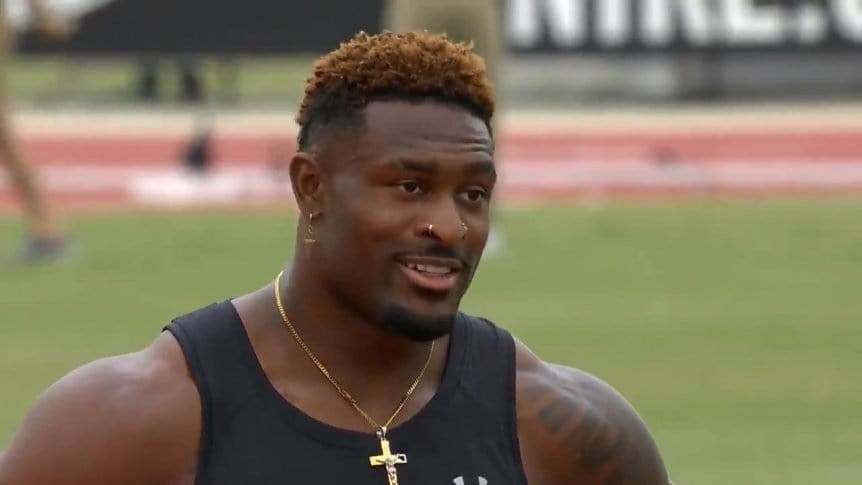
Metcalf, who did not run track in college at Ole Miss, came well shy of the automatic qualifying standard for the US Olympic Trials (10.05), which will be contested June 18-27 in Eugene, Ore. USATF will take a total of 32 athletes in the 100 meters, filling the field with the fastest qualifiers outside of those with the automatic standard. To earn one of those spots will likely take a time under 10.20 seconds, which means Metcalf will have to race again if he wants to qualify for the Trials.
That doesn’t appear likely though. When NBC’s Lewis Johnson asked Metcalf if he would continue racing, Metcalf said he had to go to the Seahawks’ mandatory minicamp, which is set for June 15-17.
(05/10/2021) ⚡AMPby LetsRun
Meet the Thick Boys Running Club—These Runners Have Lost a Combined 350 Pounds and Counting
Four football coaches in North Carolina started running together last summer, and they have inspired people all over the state.
A group of four Lake Norman High School football coaches in Mooresville, North Carolina, have collectively lost over 350 pounds through running since July 2020.

And together, they call themselves the Thick Boys Running Club.
The four coaches are all former college football players who struggled with weight after their playing days were over; they said they had wanted to lose weight for years. When the pandemic hit and their coaching and teaching went virtual, they found themselves with some extra time.
→ Want to read about more inspirational running stories? Join us at Runner’s World+ ✨
Jay Keener, 40, the school’s athletic director and football coach, was the first to make a move.
“I always justified my weight [thinking that] 300 pounds isn’t bad, and then 310. And then, I was afraid to weigh myself,” Keener told Runner’s World. “When I saw 345, I realized it’s not going to get an easier to get the weight off later, so I better do something.”
Keener started on the track by running to the straights and walking the curves. A week later, he recruited offensive coordinator Sean Fitzgerald—who weighed 284 pounds, his highest ever—to join him.

By early August, head coach Jonathon Oliphant (278 pounds) and defensive coordinator David Johnson (365 pounds) joined Keener and Fitzgerald in running daily laps around the track. As the four runners progressed, they started doing stadium stairs, and ran 5Ks and 10Ks. Rarely did any of them run without a partner.
“There’s literally 300 feet between the school and the field house, and I would be out of breath,” Johnson told Runner’s World. “That’s how out of shape I was. Being 365 pounds was tough for me. Having these guys helping and encouraging me, it gave me the direction I needed, and it helped having that support system over the past eight months.”
The four coaches wrote their weights on a whiteboard in the field house by the stadium, and they weighed in every Friday starting on August 24. Instead of competing against one another to see who could individually lose the most weight, they decided to work together and collectively reach milestones. They celebrated every time they hit a combined 50 pounds lost.
“Myself and coach Oliphant had been involved in weight-loss competitions before against people, and we wanted to do something different,” Fitzgerald told Runner’s World. “Everyone wanted to pull their own weight. It was much more fun and we never had to go at it alone.”
The first to hit the century mark was Johnson, who has lost nearly 120 pounds. Chasing him for second place is Keener who has lost over 80 pounds to get below 200 followed by Oliphant who has lost just under 80 pounds, and Fitzgerald who has lost over 70 pounds.

With kids back to the classroom and at practice, the coaches are doing more runs before and after school. And all four have noticed some stares this spring.
“It’s definitely a combo of the weight loss and wearing a mask, but it’s been difficult for people to make me out. They wonder who the new teacher is,” Johnson told Runner’s World. “People keep coming up and saying how proud they are of us and are inspired. People are telling us that they saw me out there, and now they’re running and trying to lose weight. That’s the best part to me. It’s an influence you had that you didn’t know you had.”
Additionally, their athletes are taking particular notice.
“The kids have really gotten behind us with their comments and curiosity, asking how far we ran today and how much we lost that week,” Oliphant told Runner‘s World. “They get excited about it, which has helped us keep going. It’s a lifestyle we’re proud to share with them and one we hope they take with them in their lives.”
The four runners said they have received letters of support from people in the community, and notes from coaches around the state. And their families have been supportive, and appreciated the healthier lifestyle at home, especially the recipes shared between the runners.
“My mom came and ate lunch with us a while back and she made the comment that we sounded like a bunch of housewives sharing recipes,” Fitzgerald said.
The Thick Boys Running Club plans to grow their group in the future. They hosted the inaugural Thick Boys Running Club 5K in September and pulled in more than $2,400 for local charities. They hope to host another run in 2021.
“I’ve dealt with weight issues my whole life,” Oliphant said. “Now, I got a handwritten letter from a guy from a couple counties north saying how we motivate him, and he’s 40-something years old. I relate to that and it’s been so positive to see others inspired by seeing stories like their own so they know it can be done. Being able to be that positive for someone, it’s a blessing.”
(05/10/2021) ⚡AMPby Runner's World


